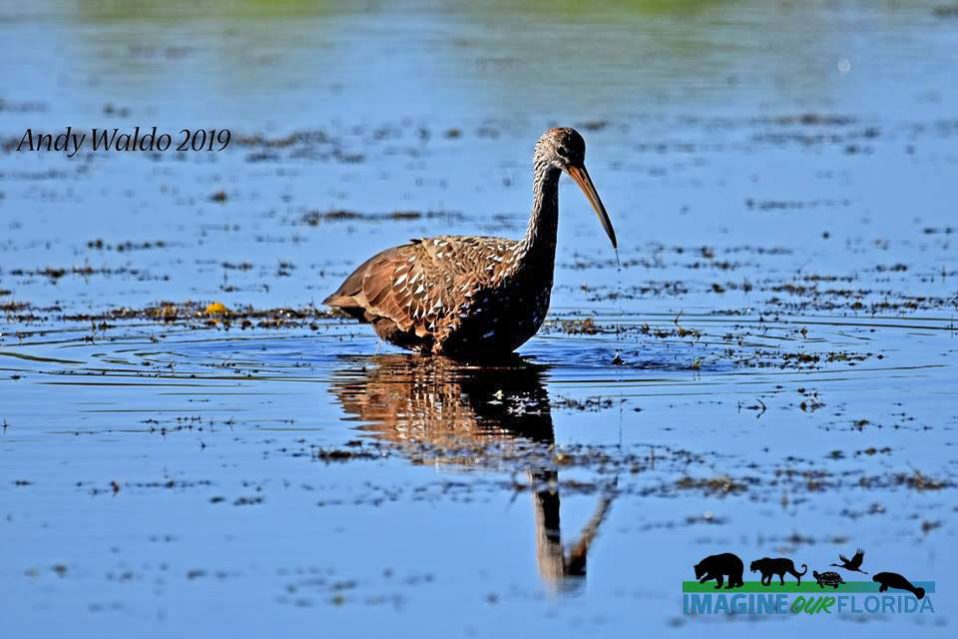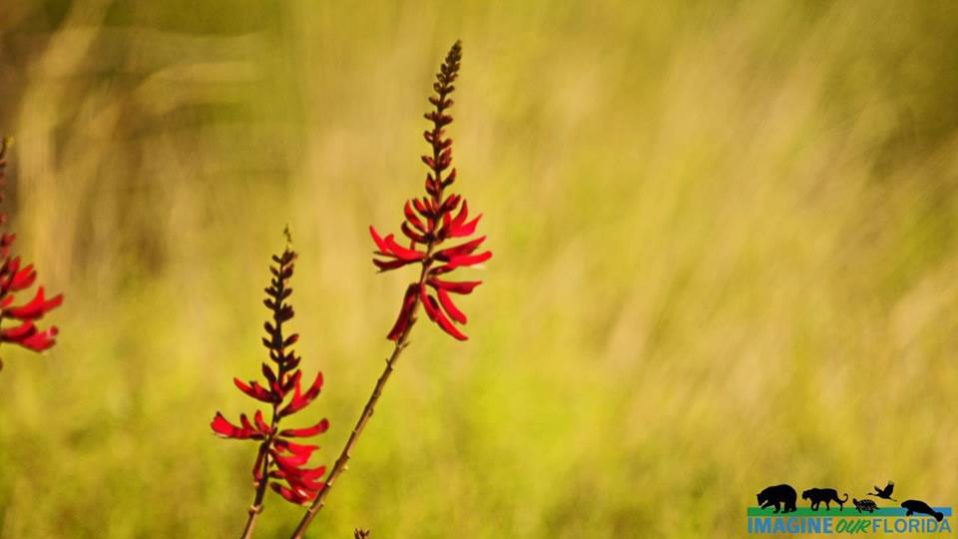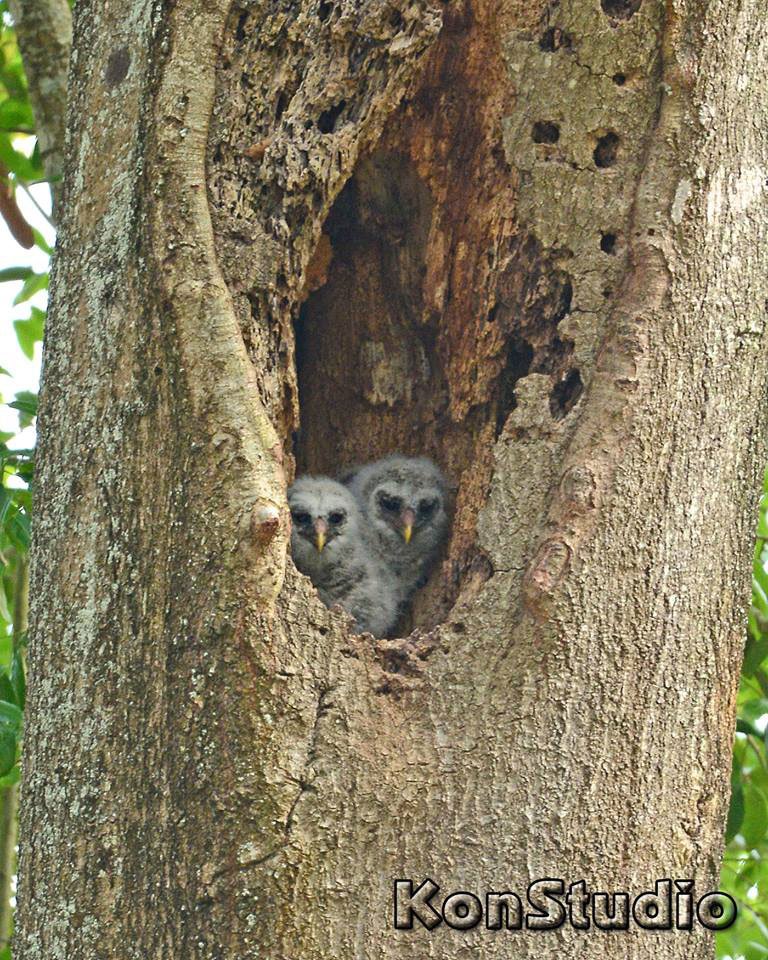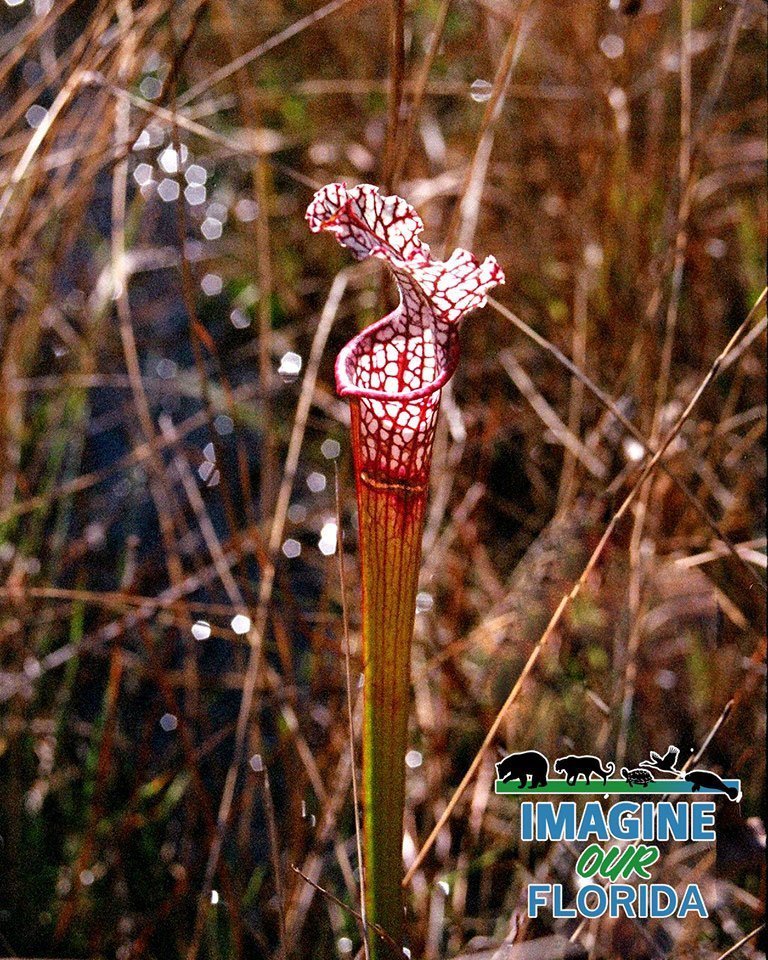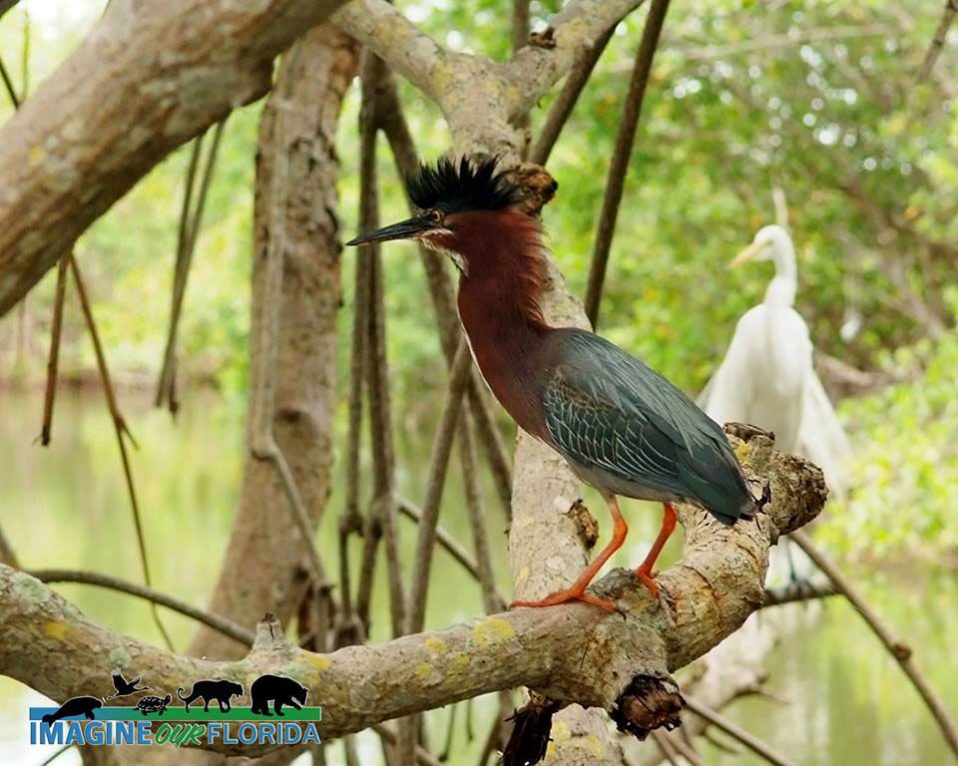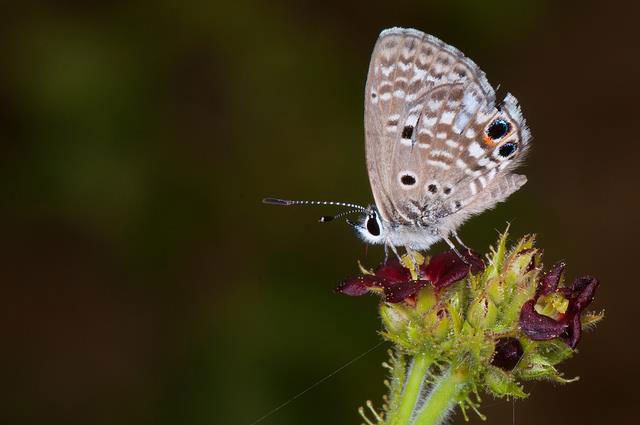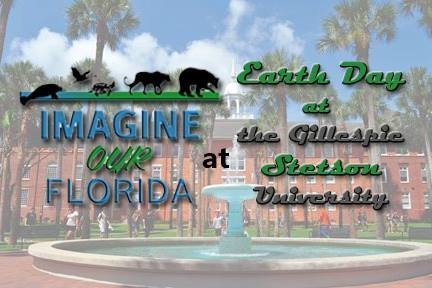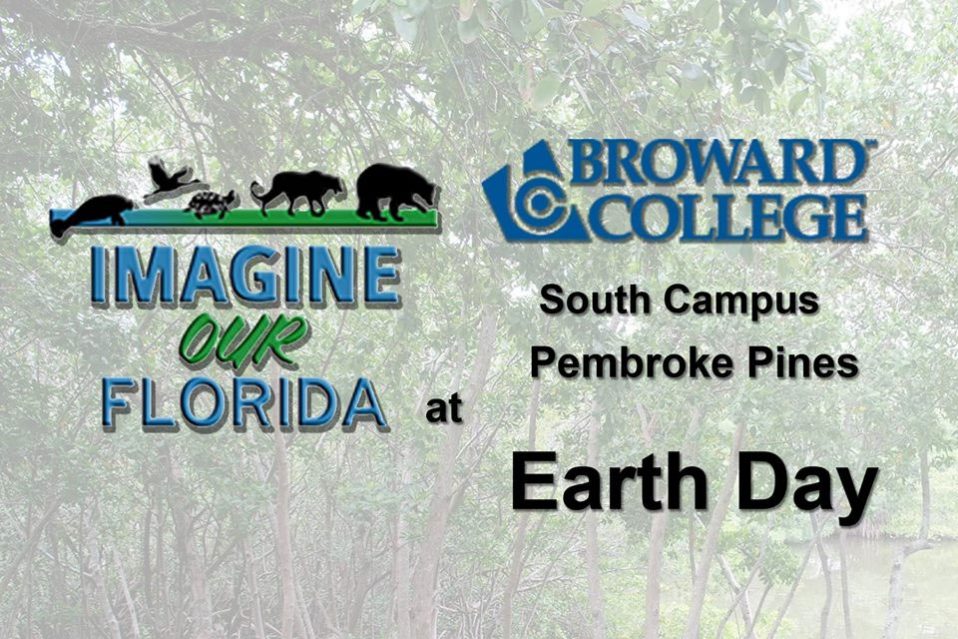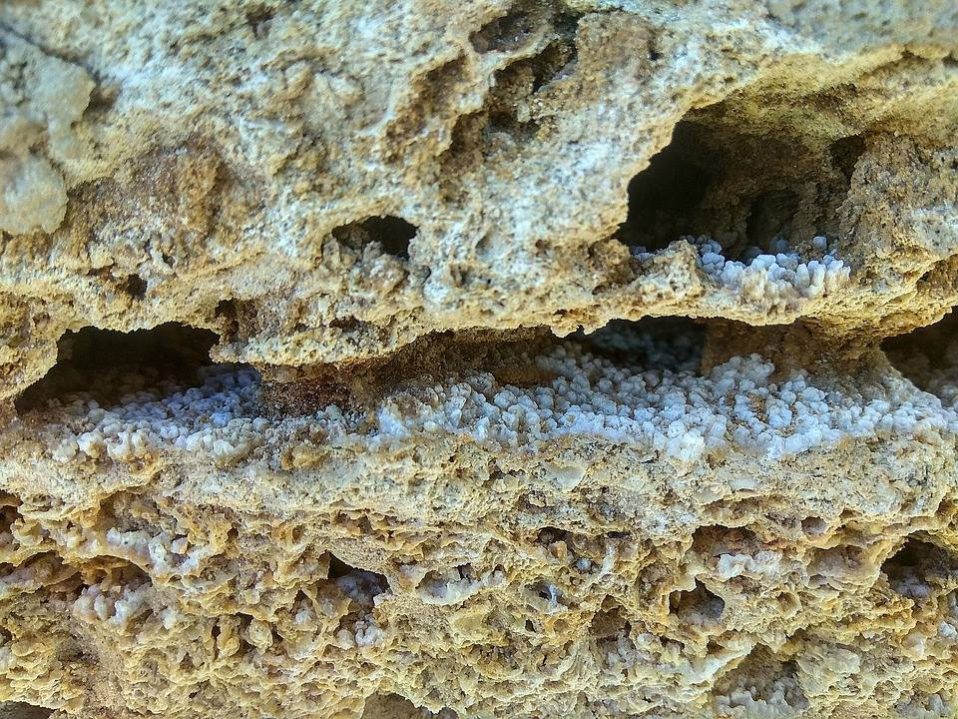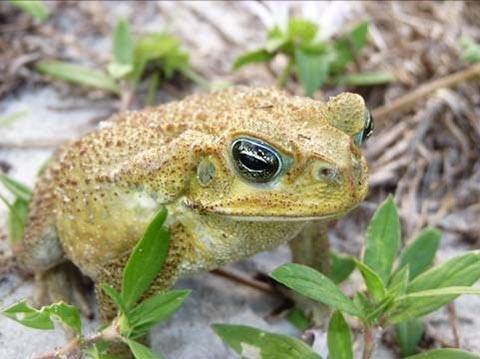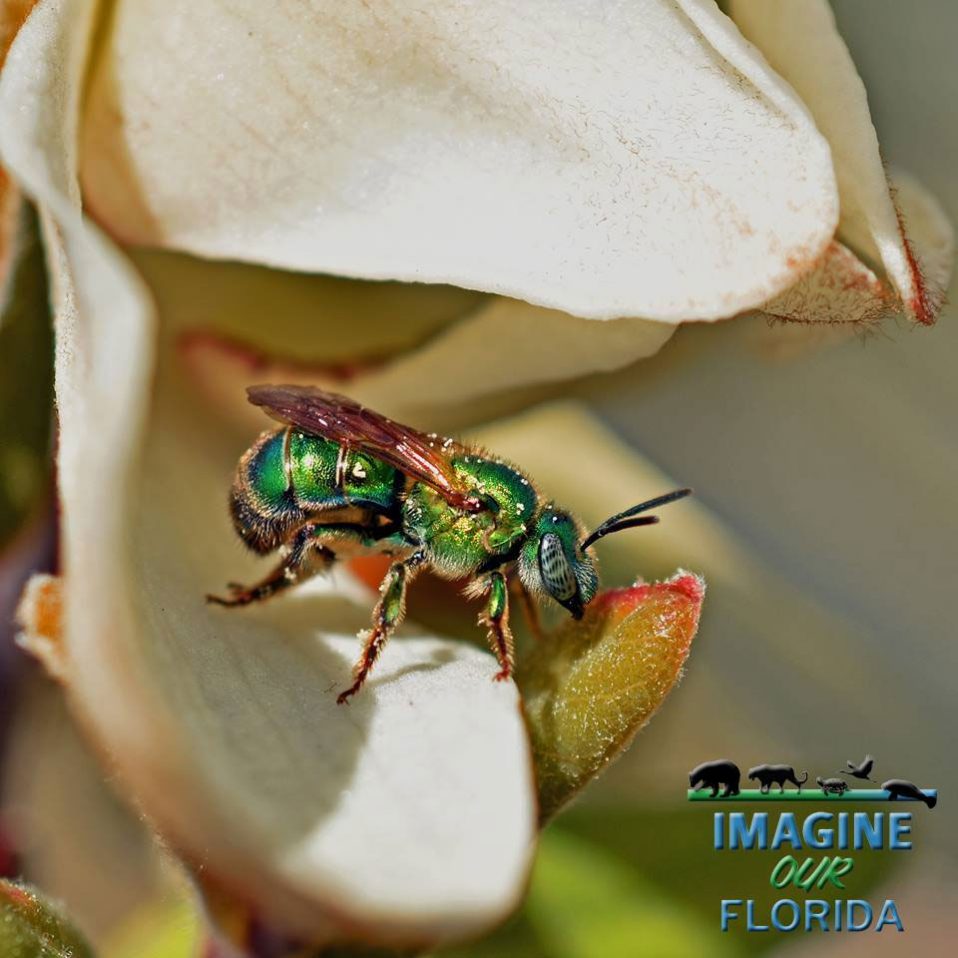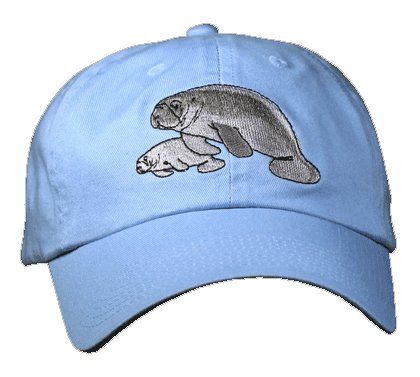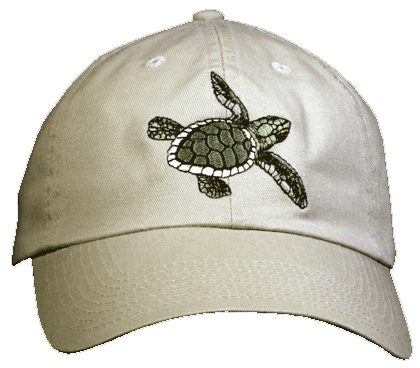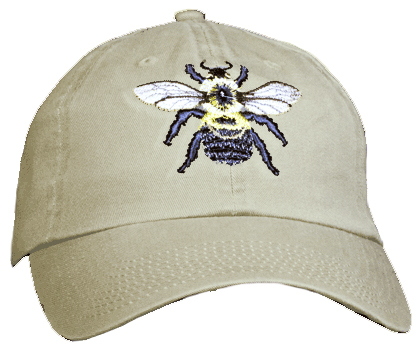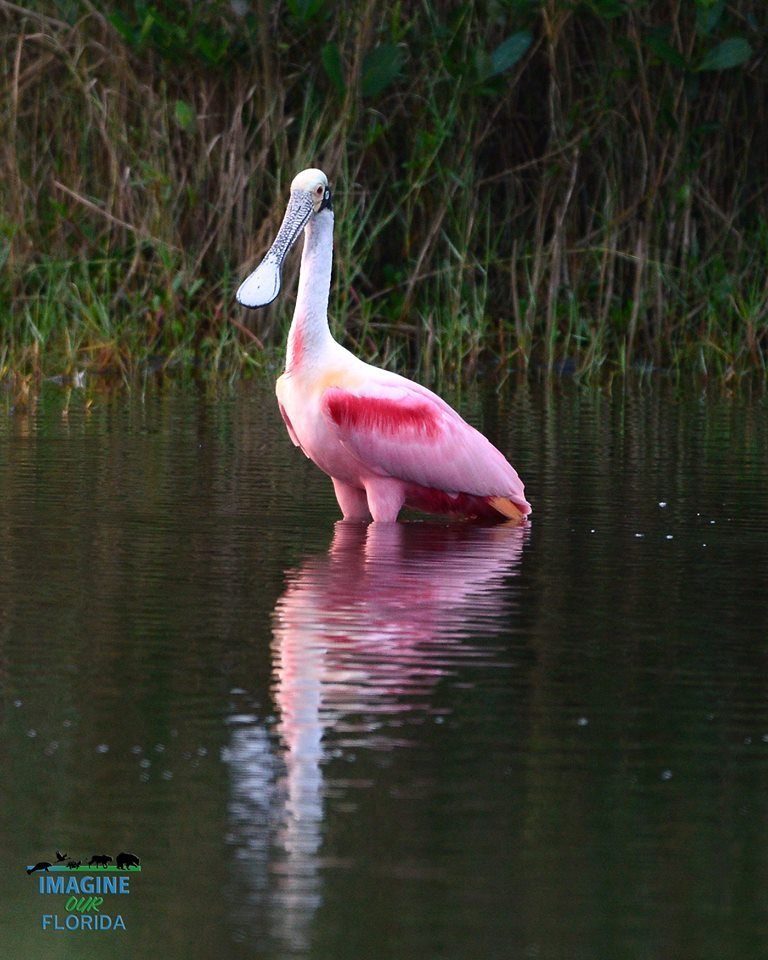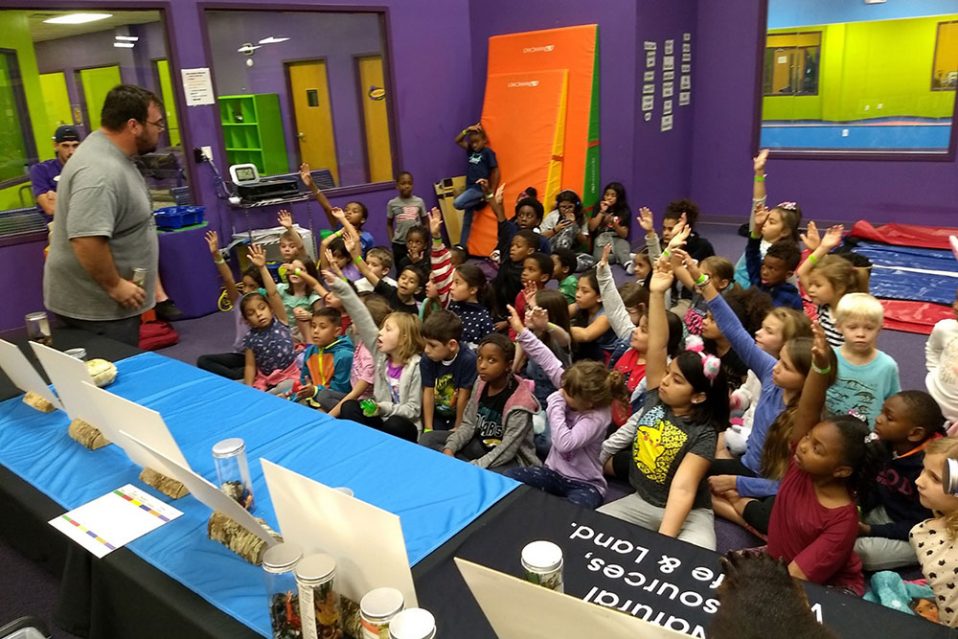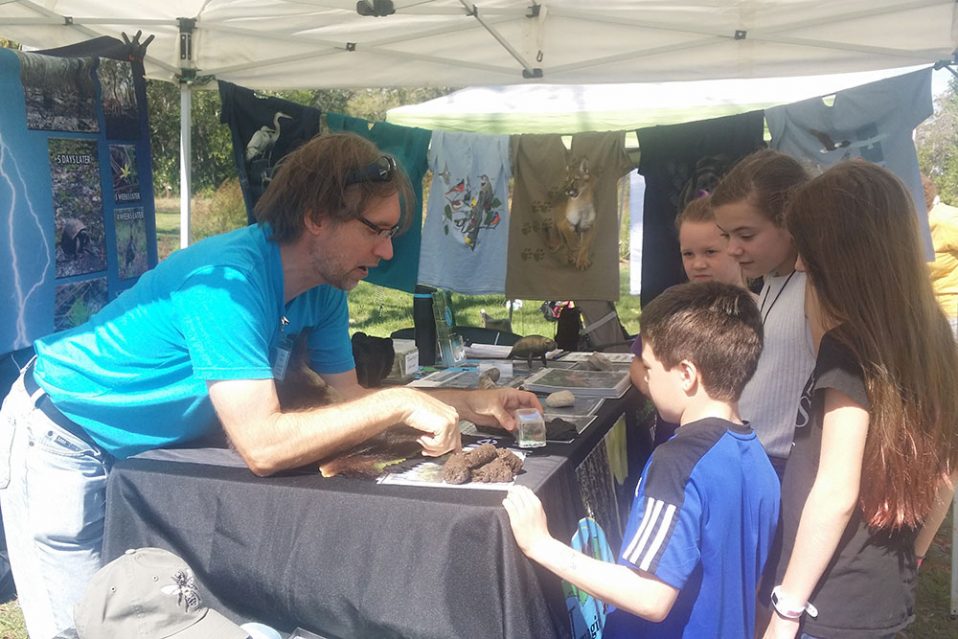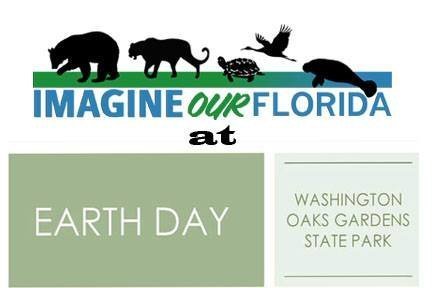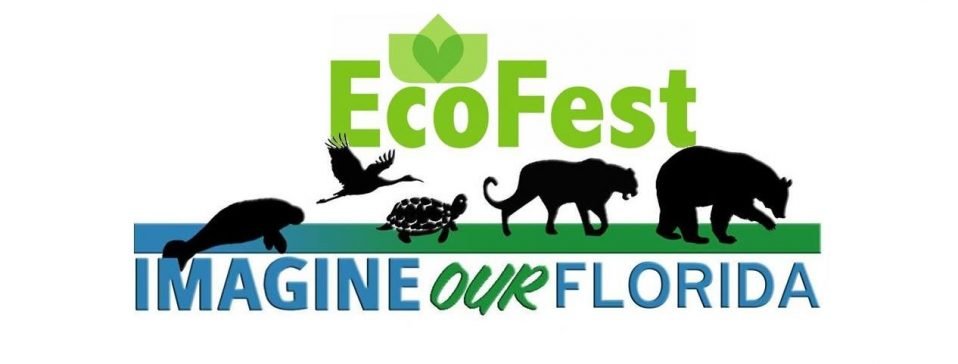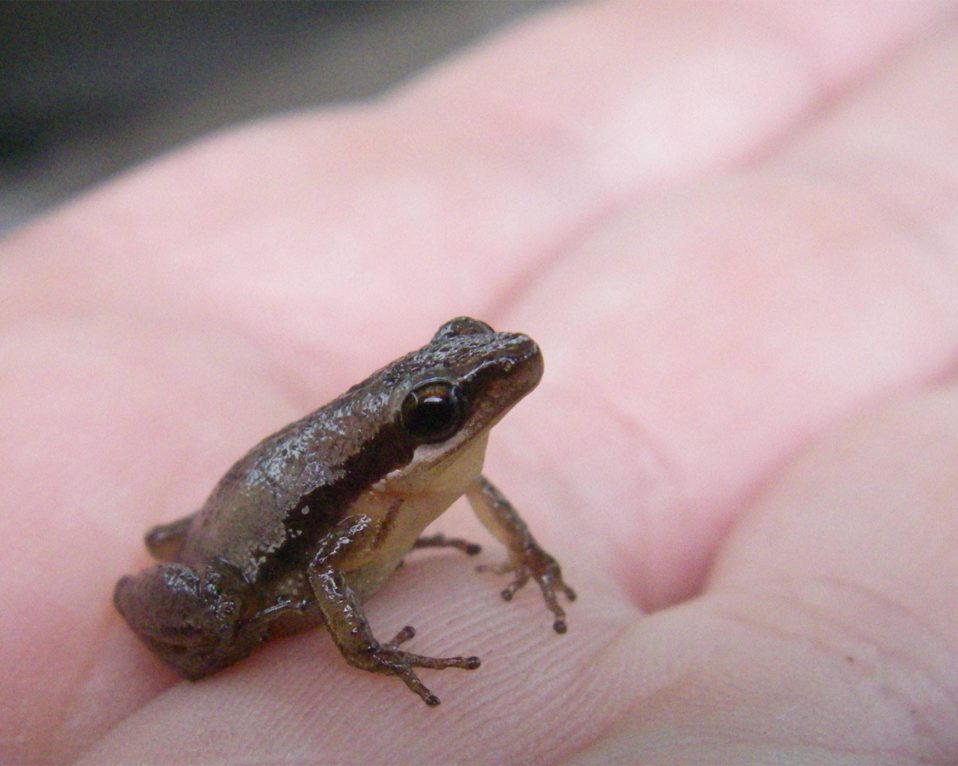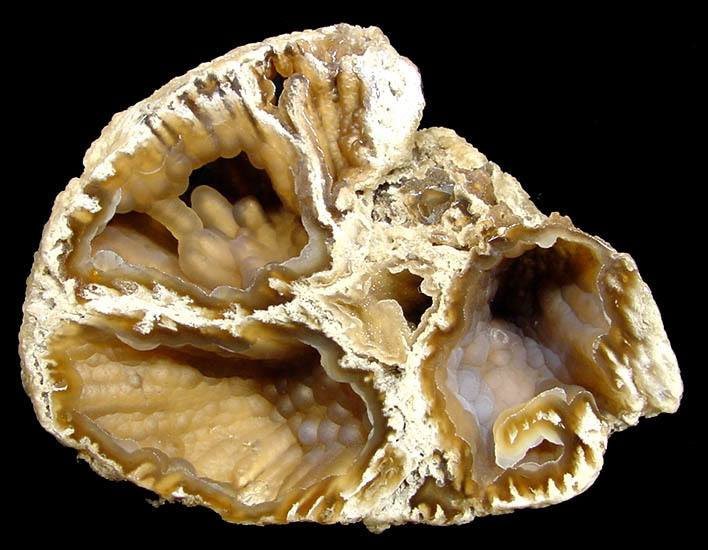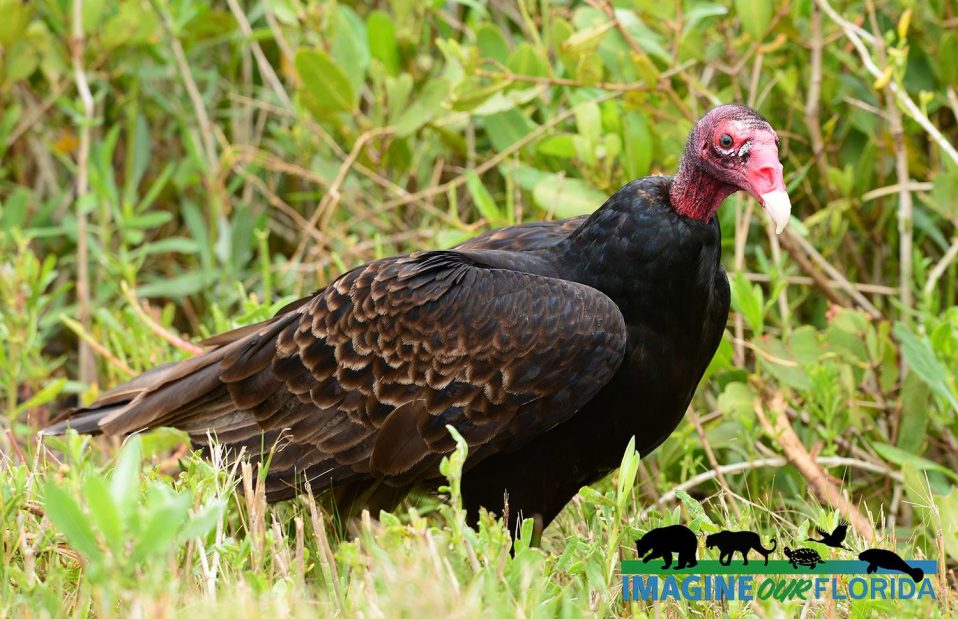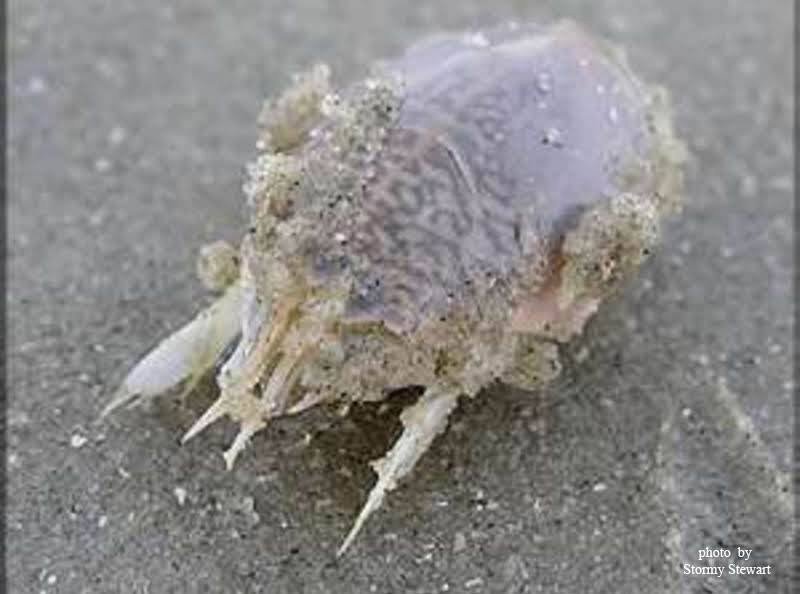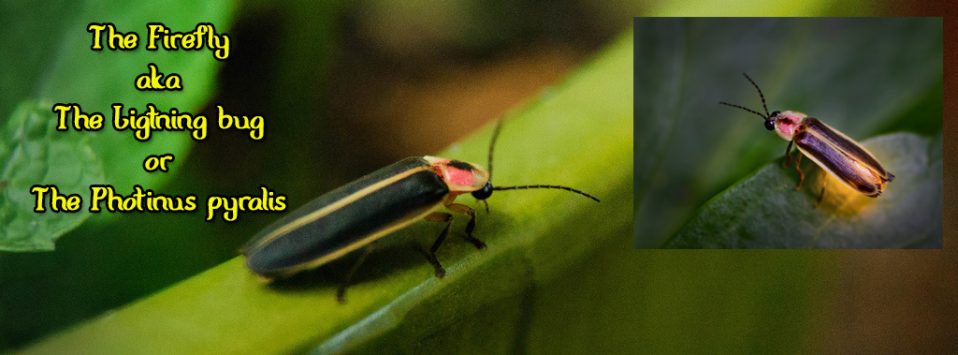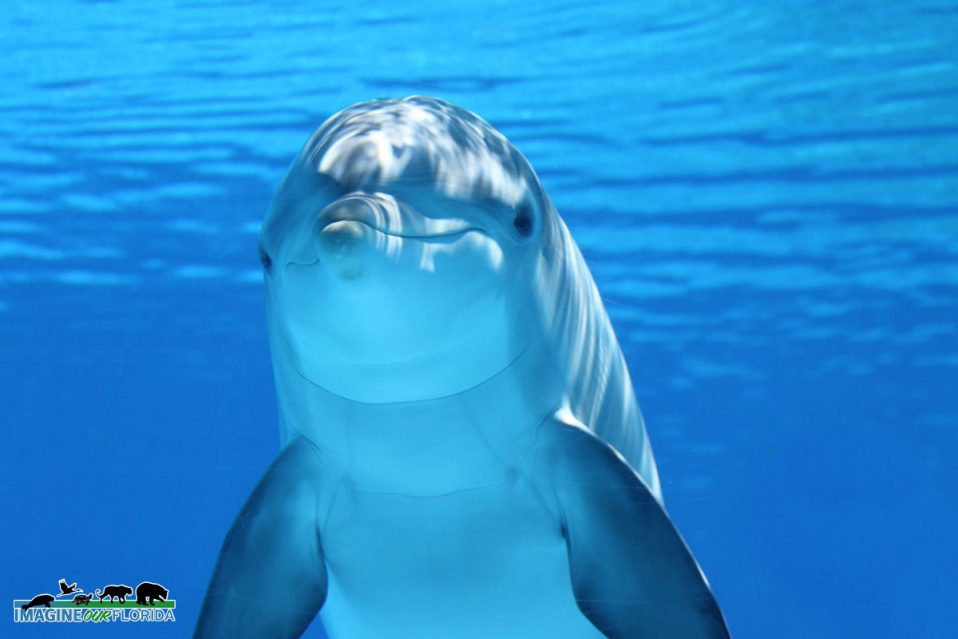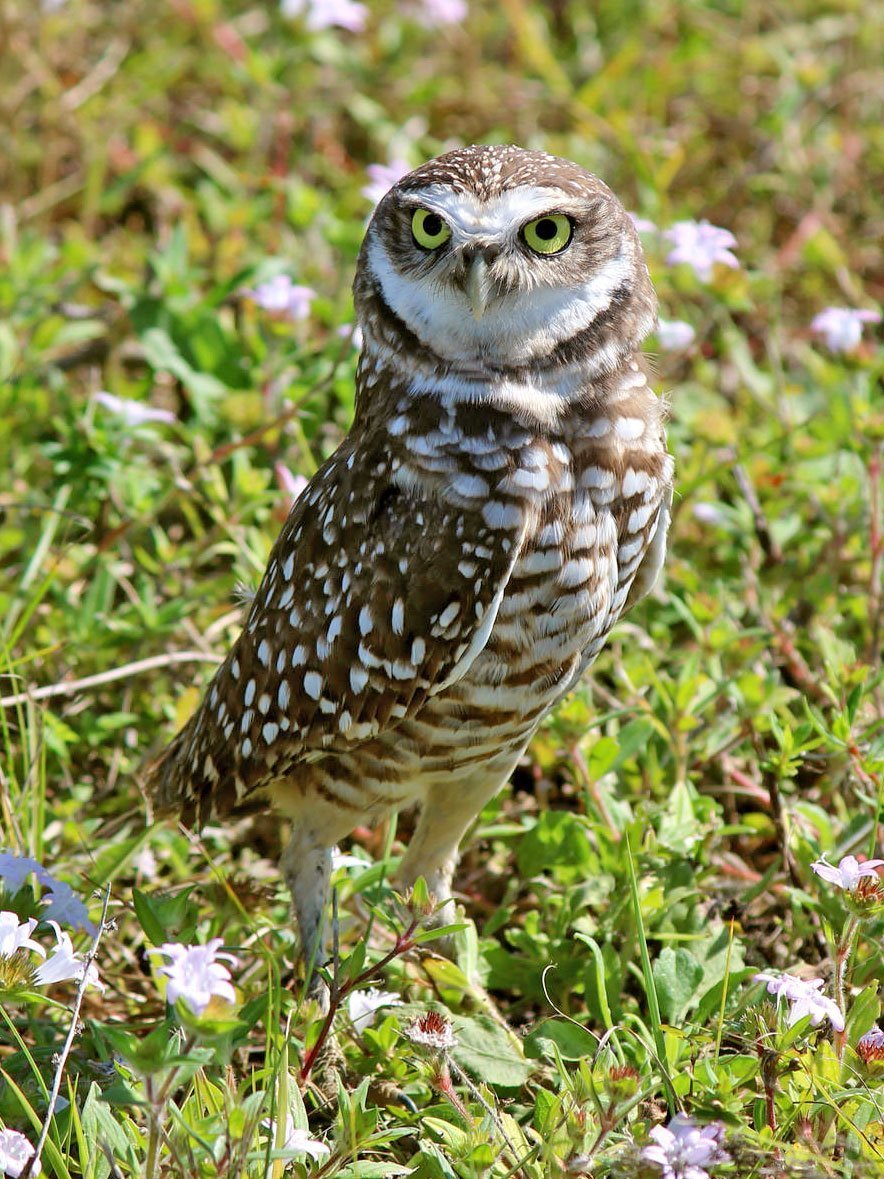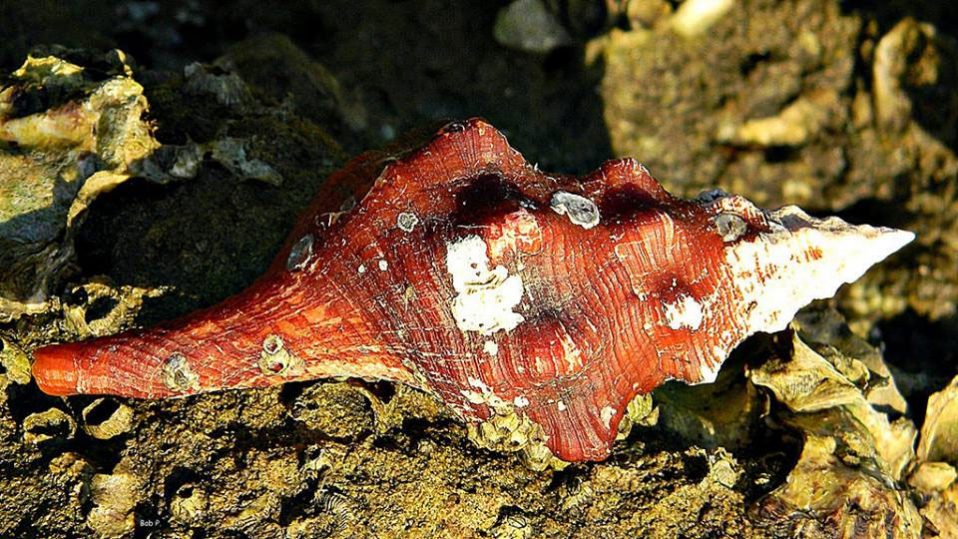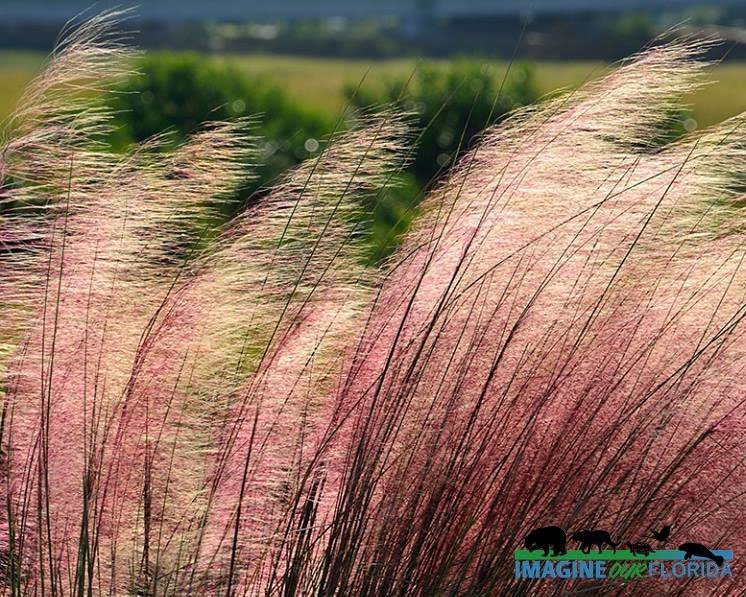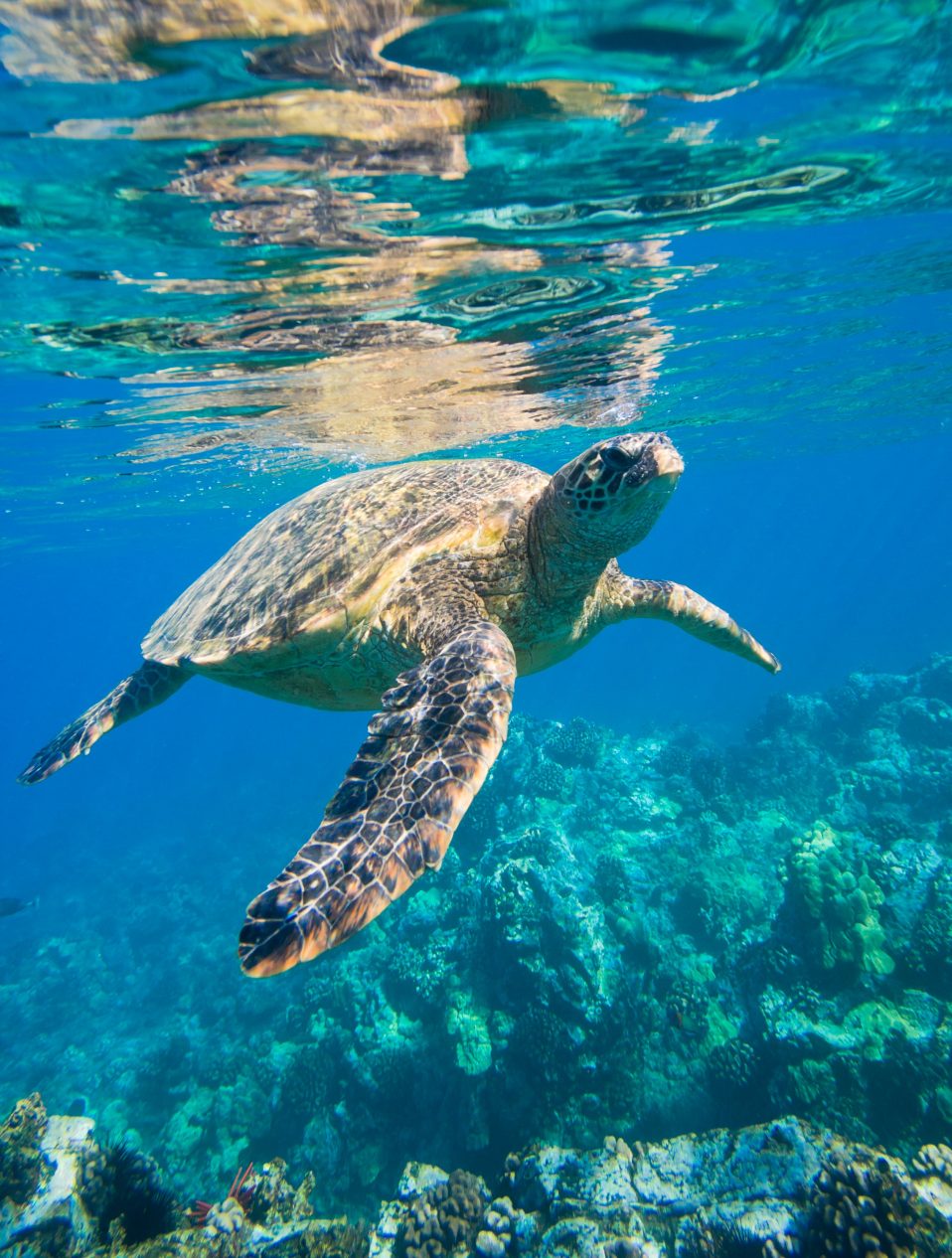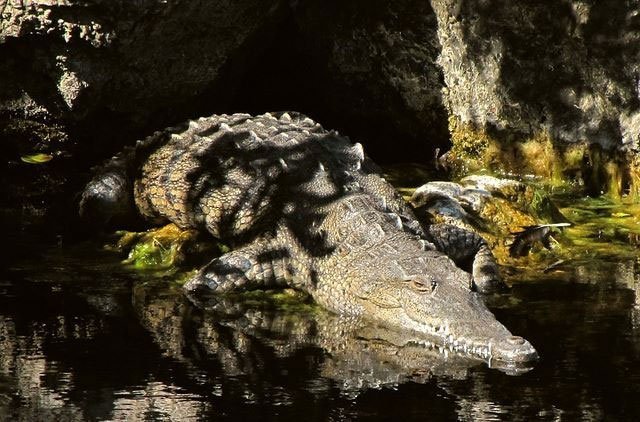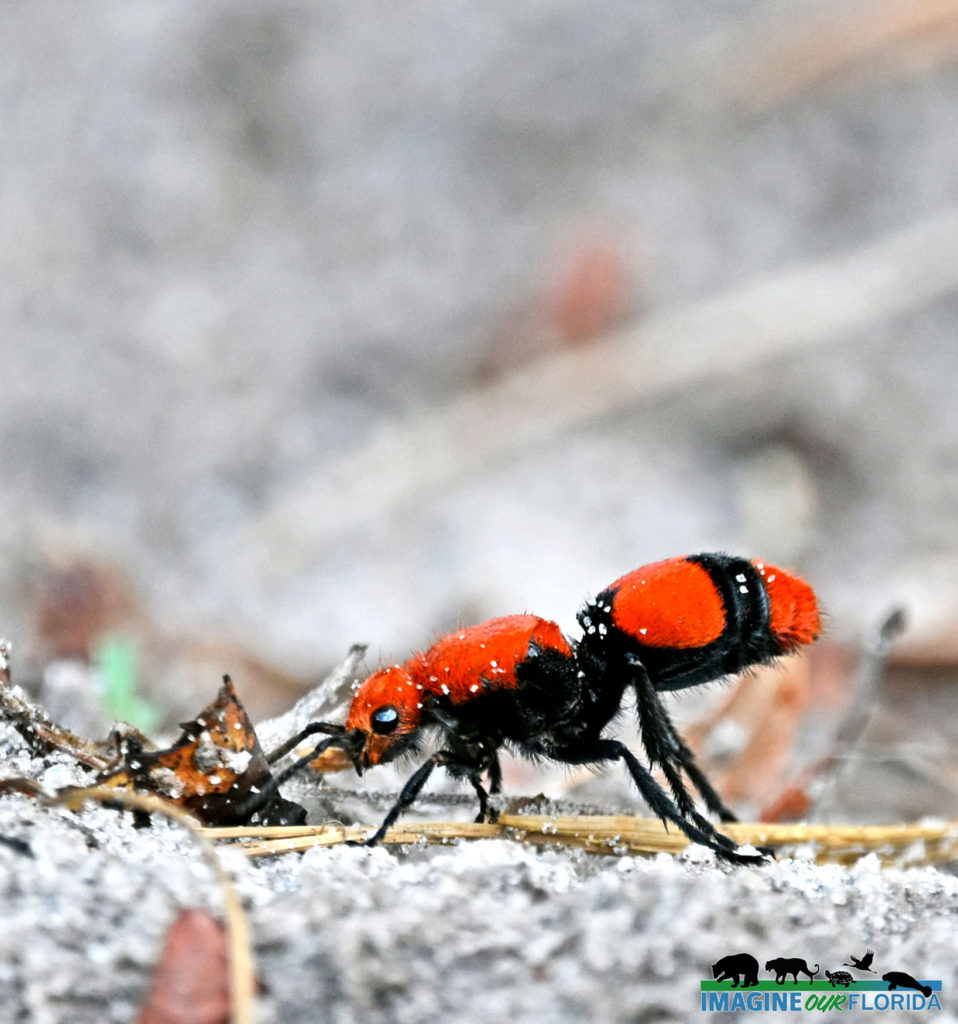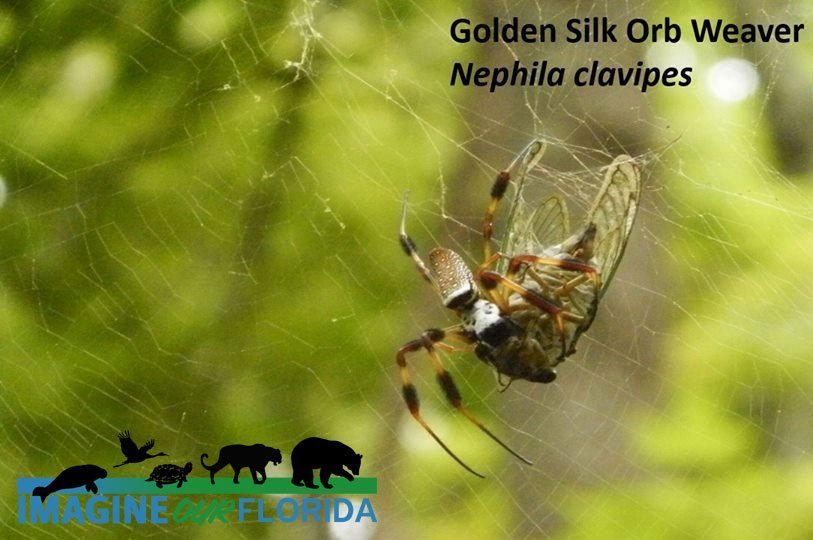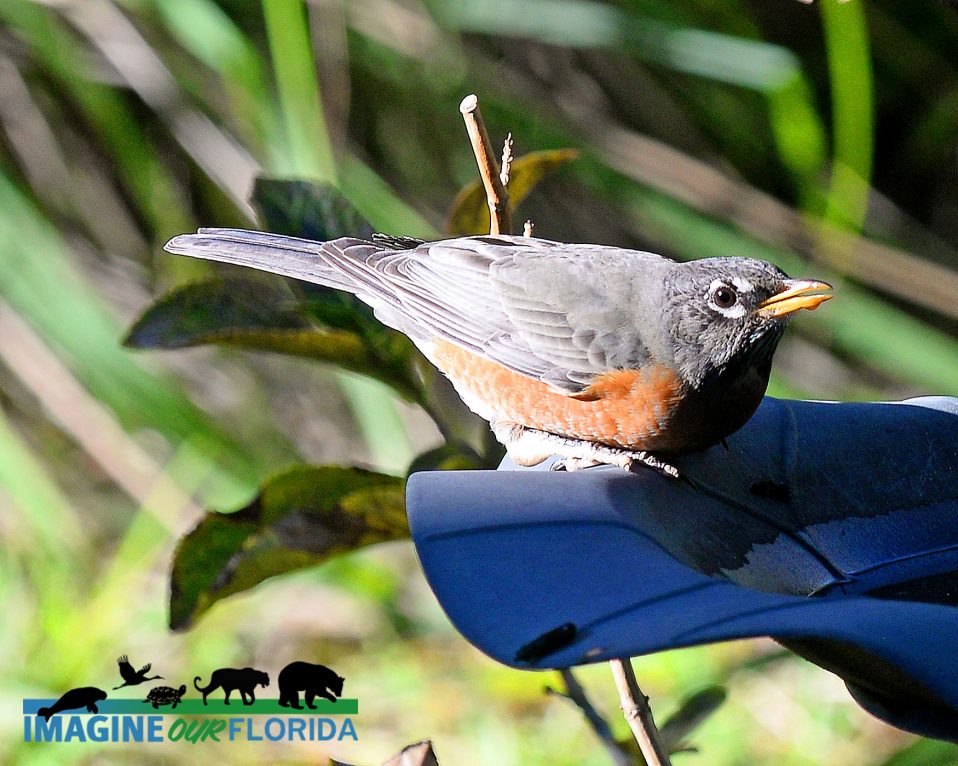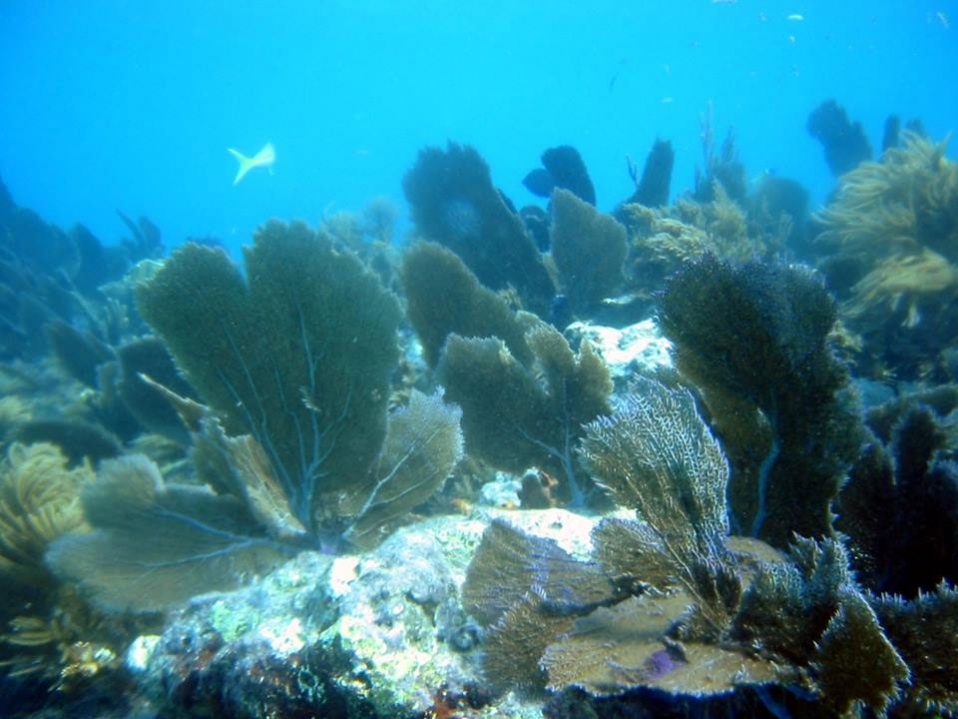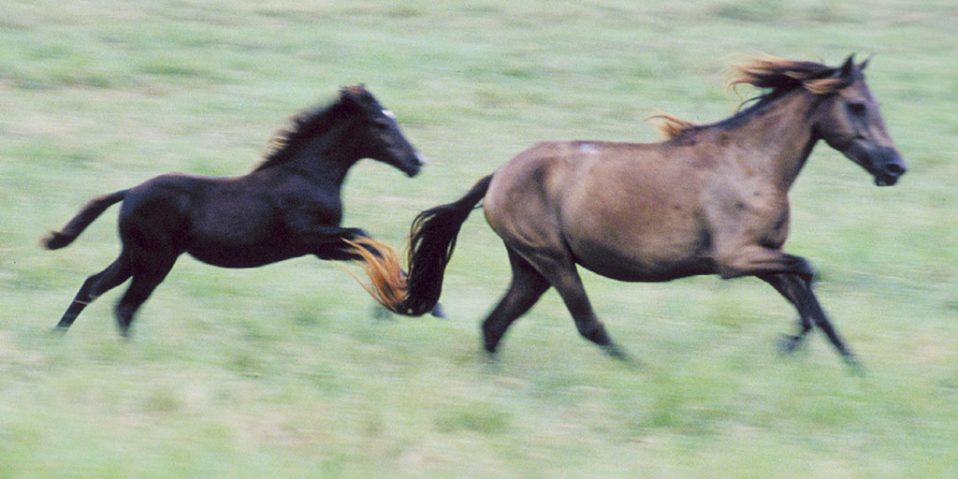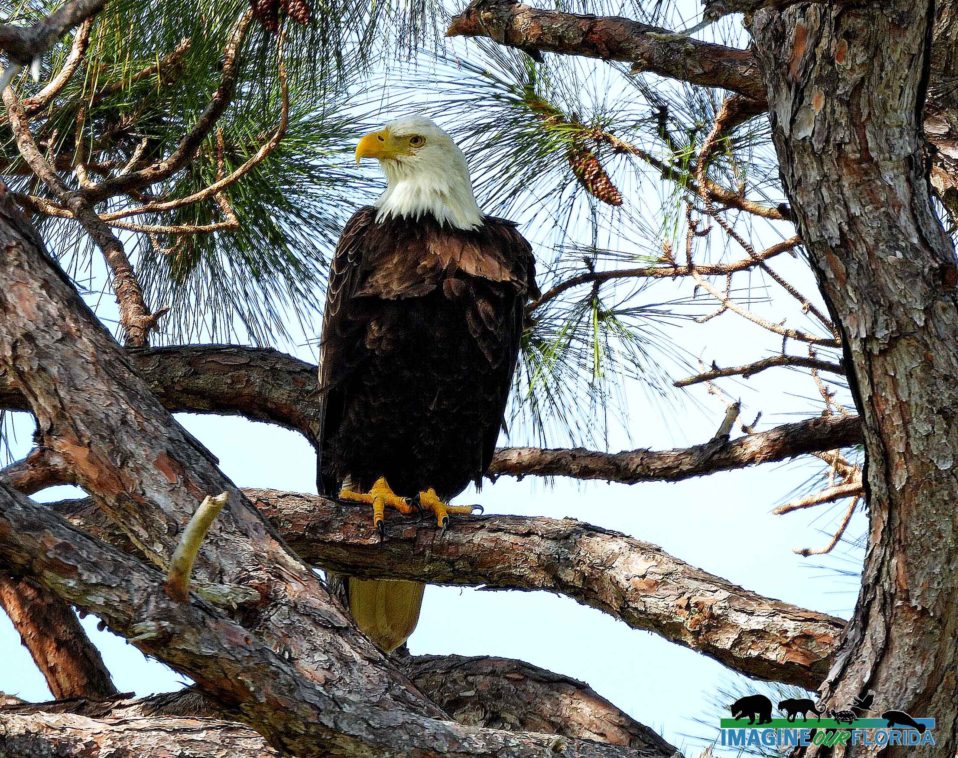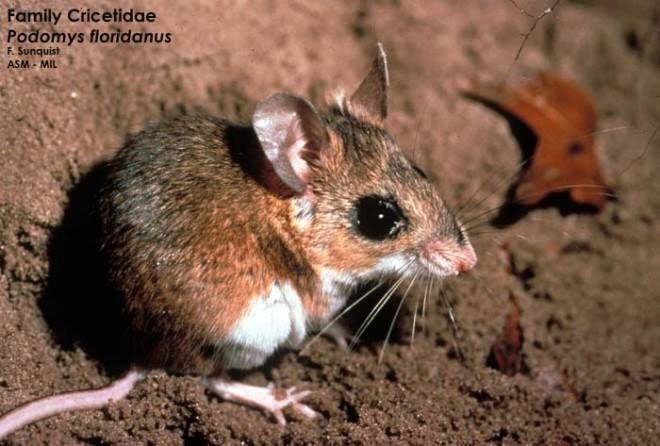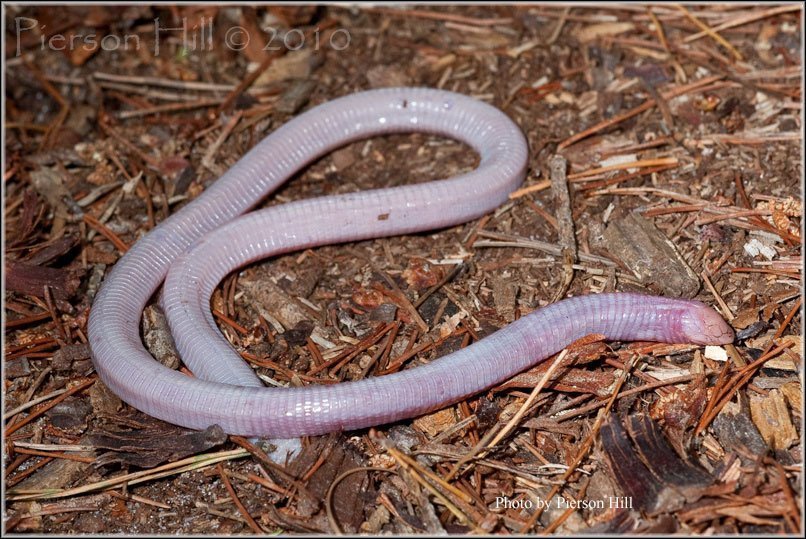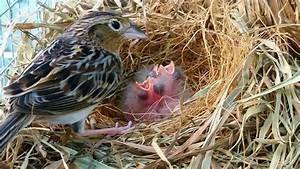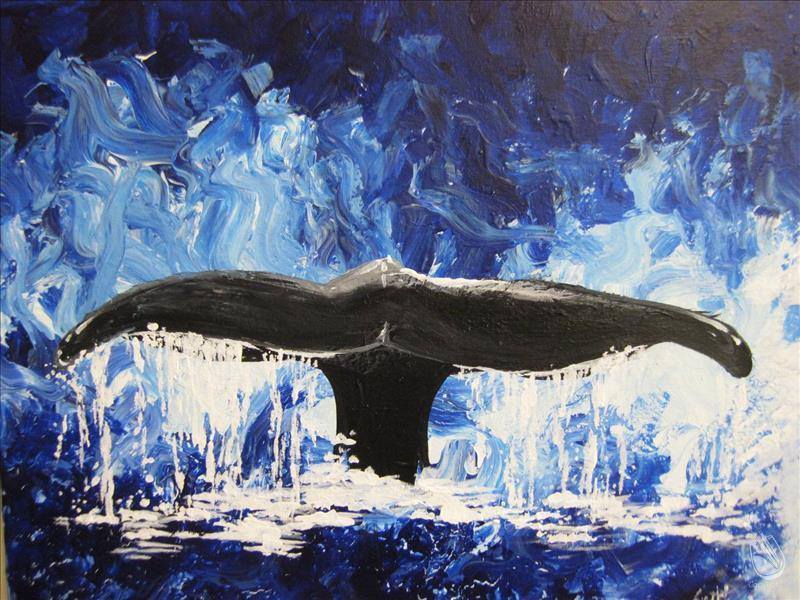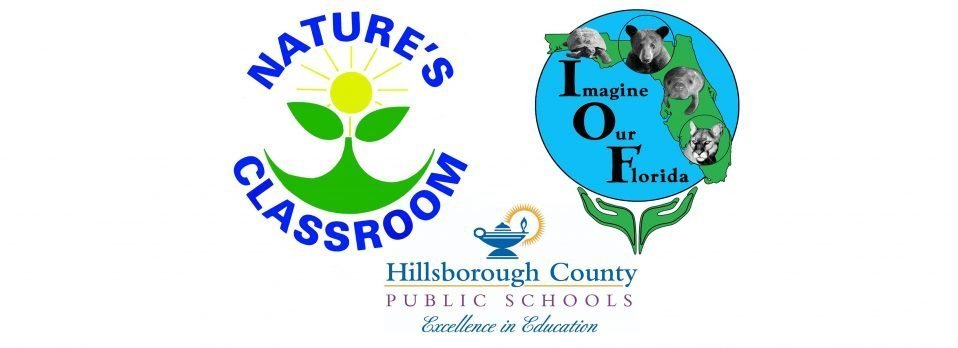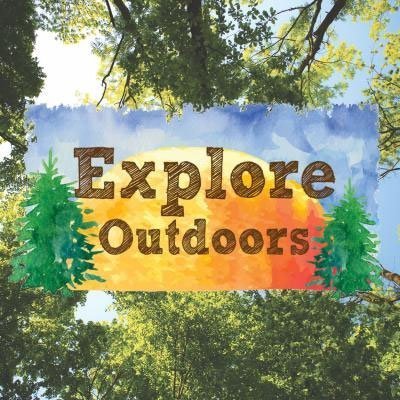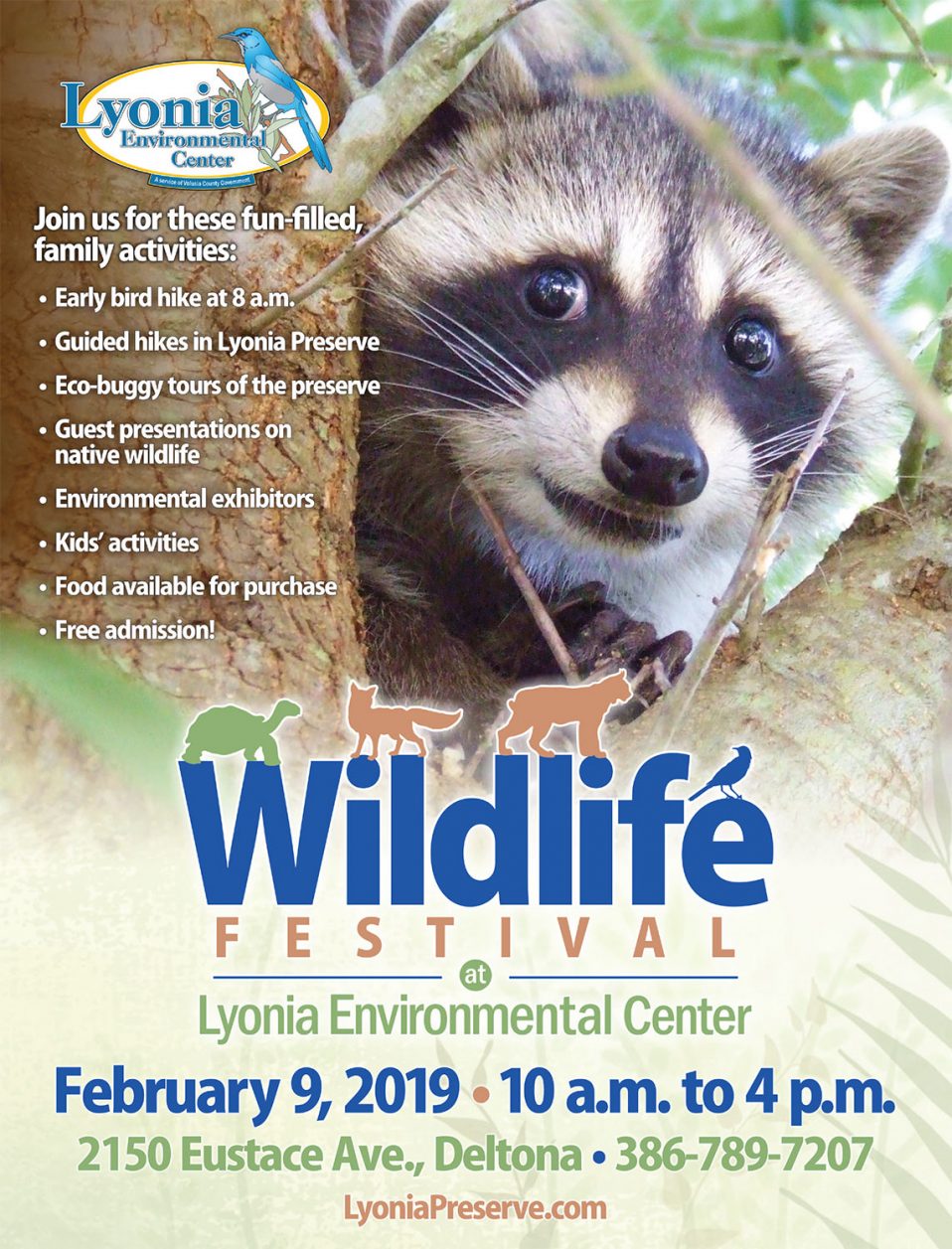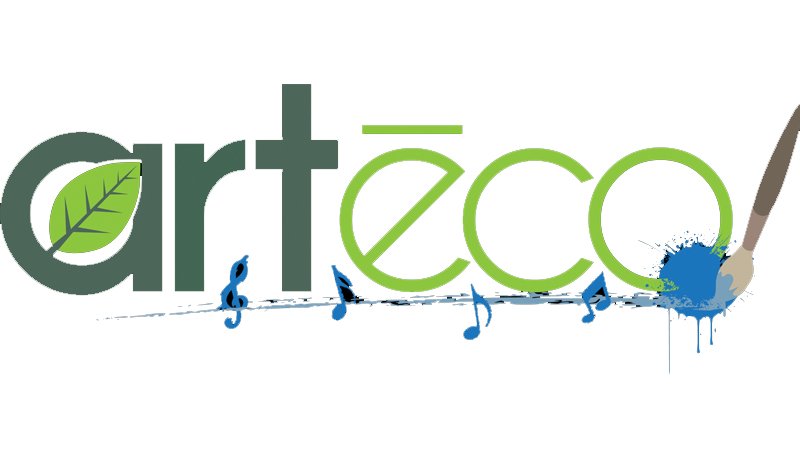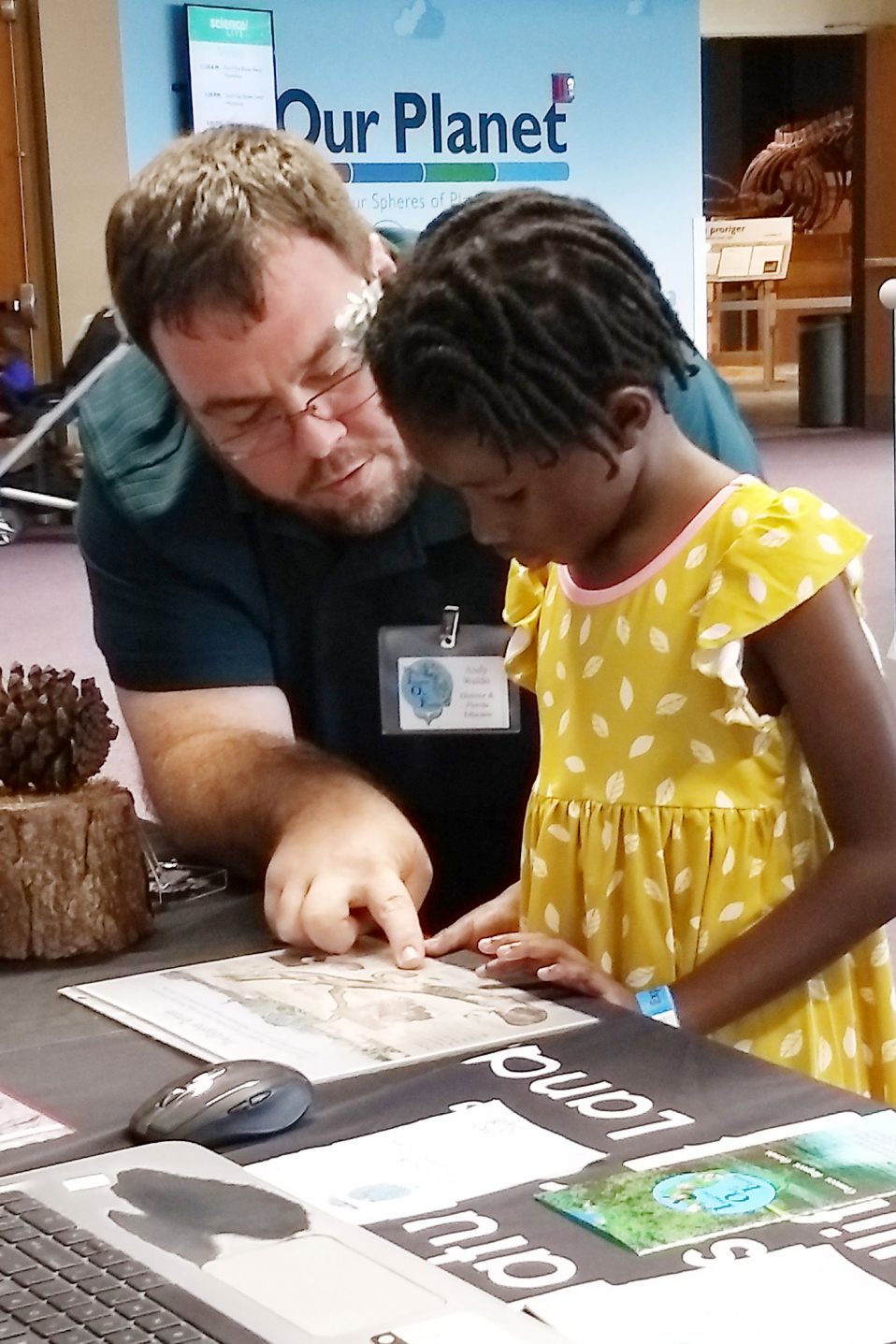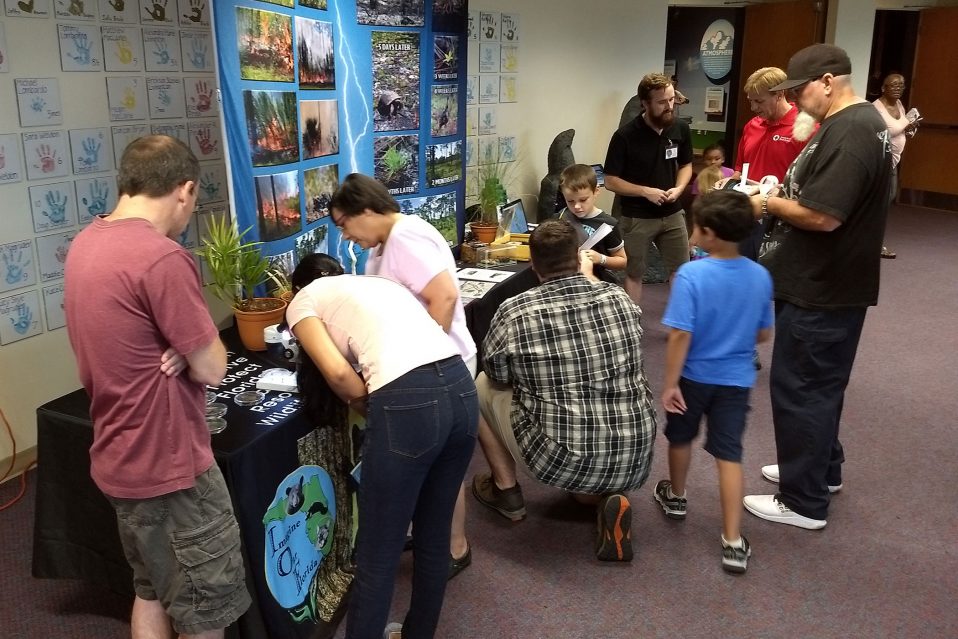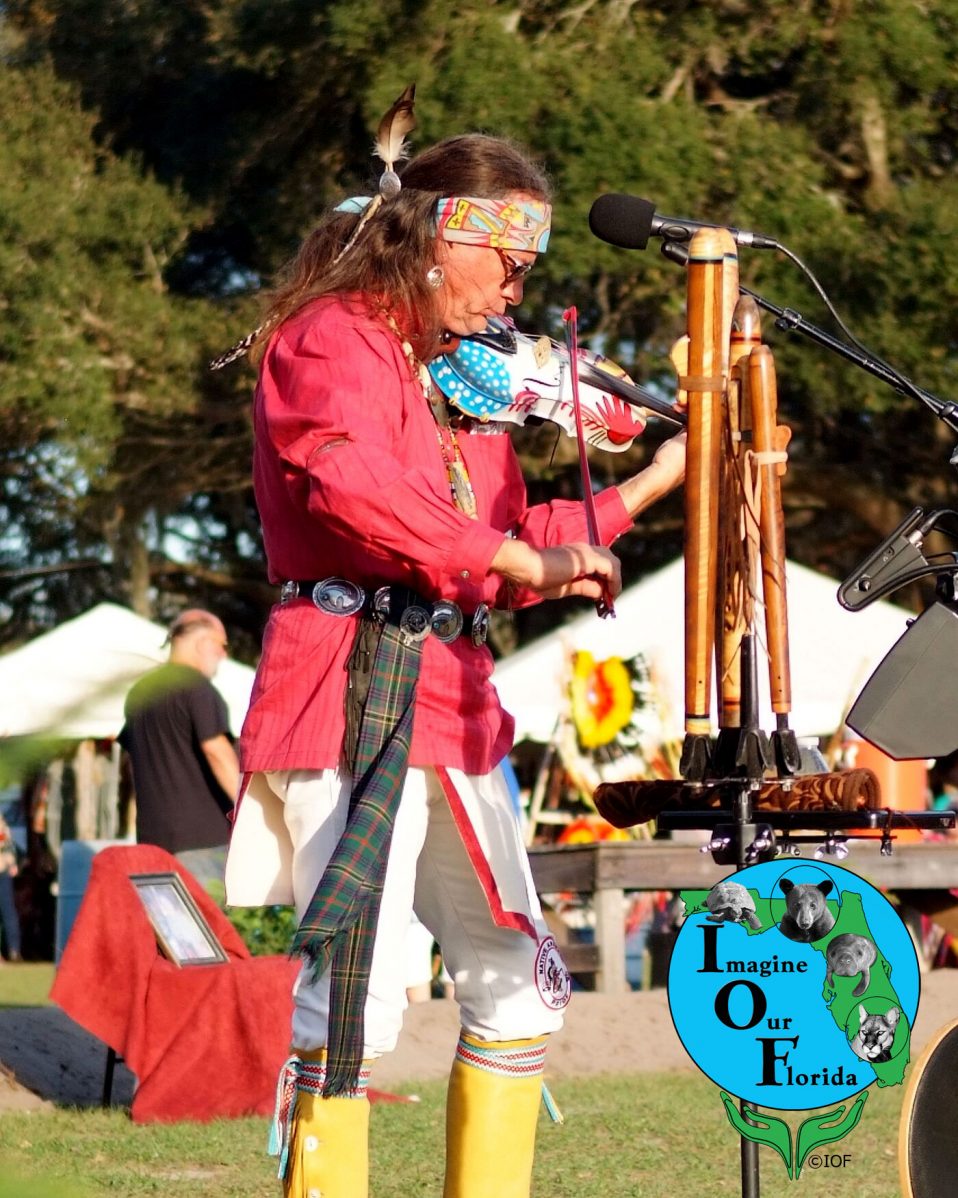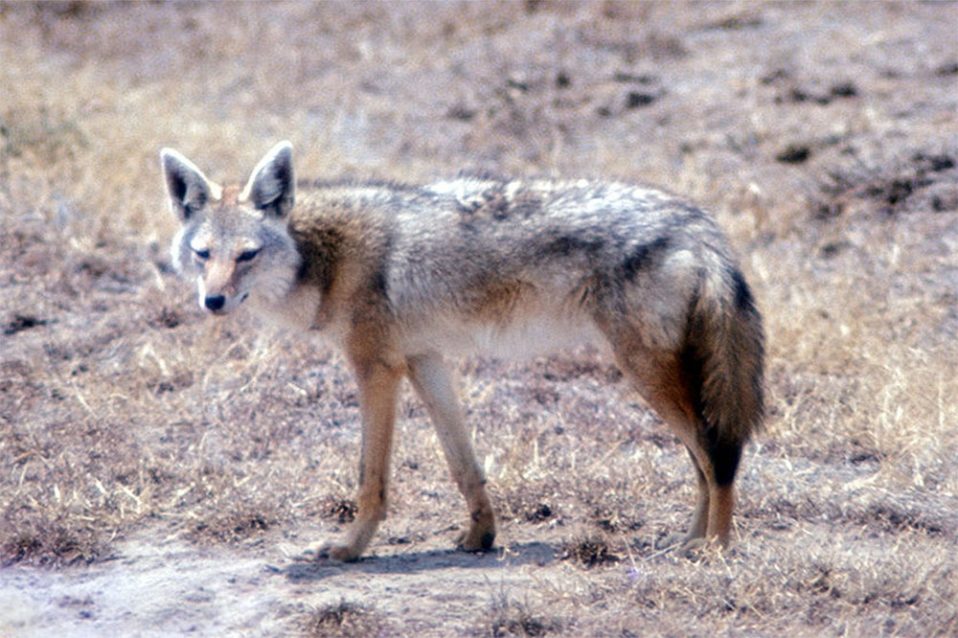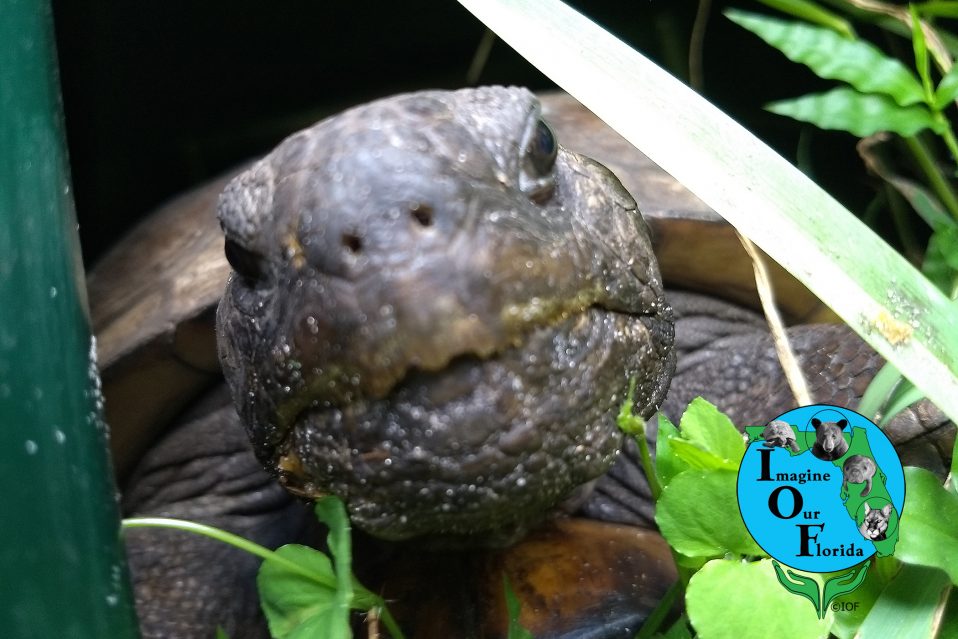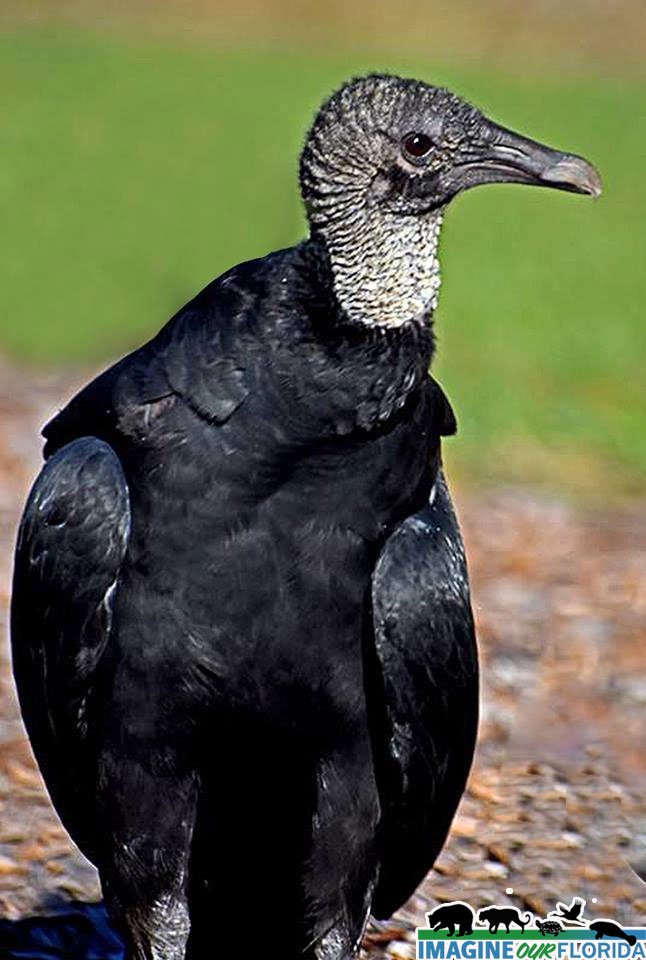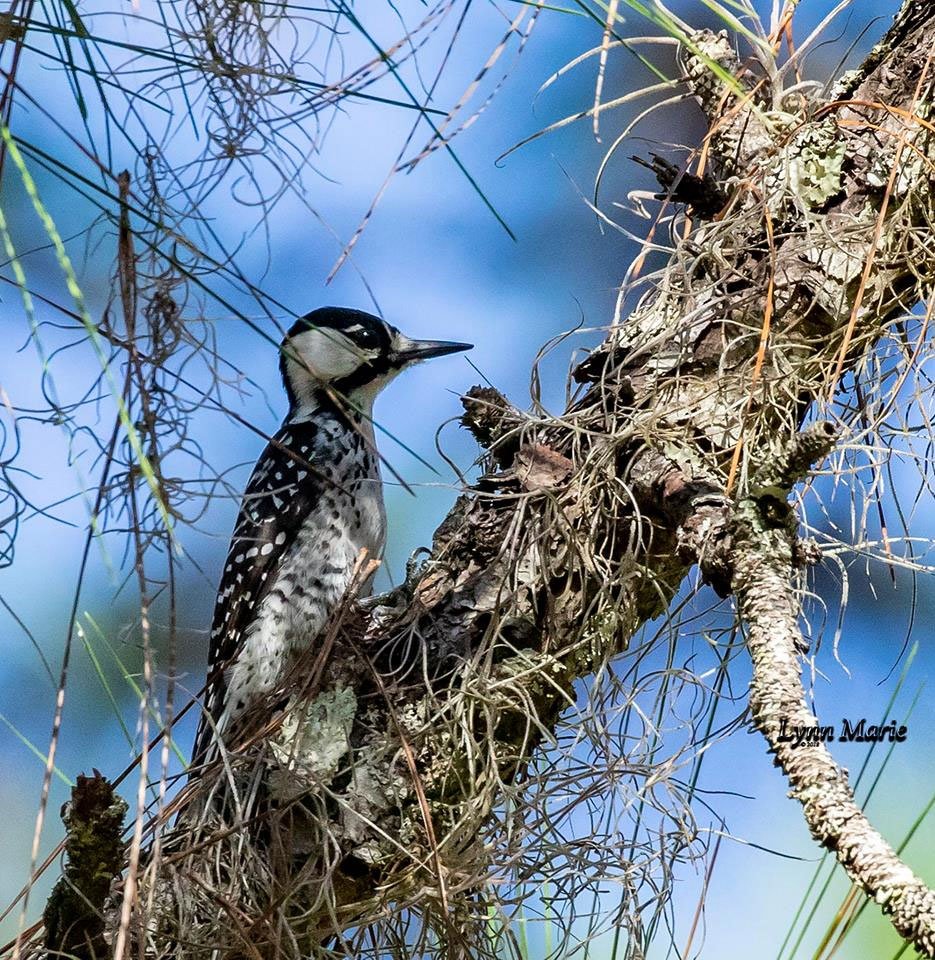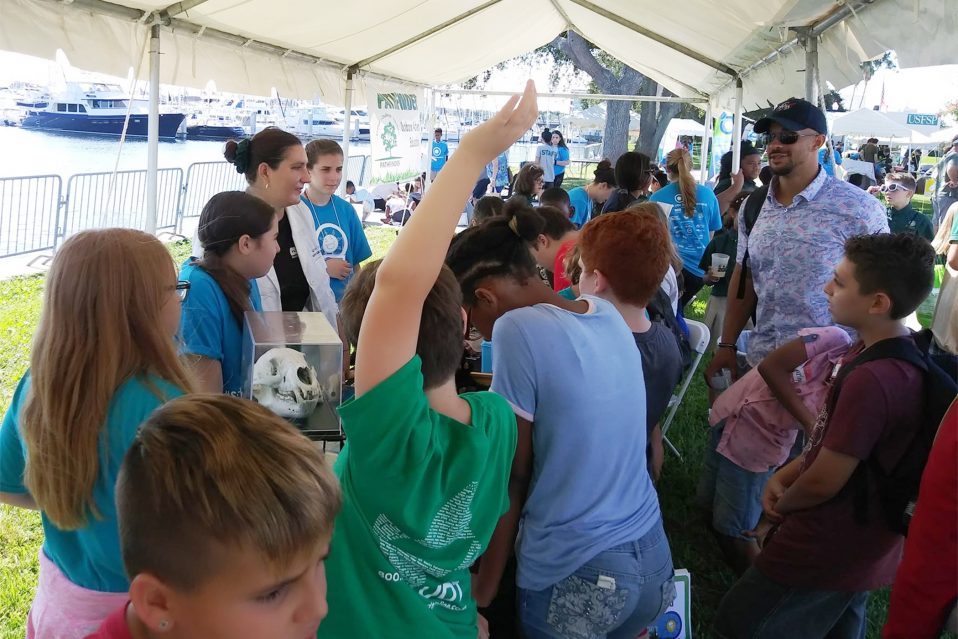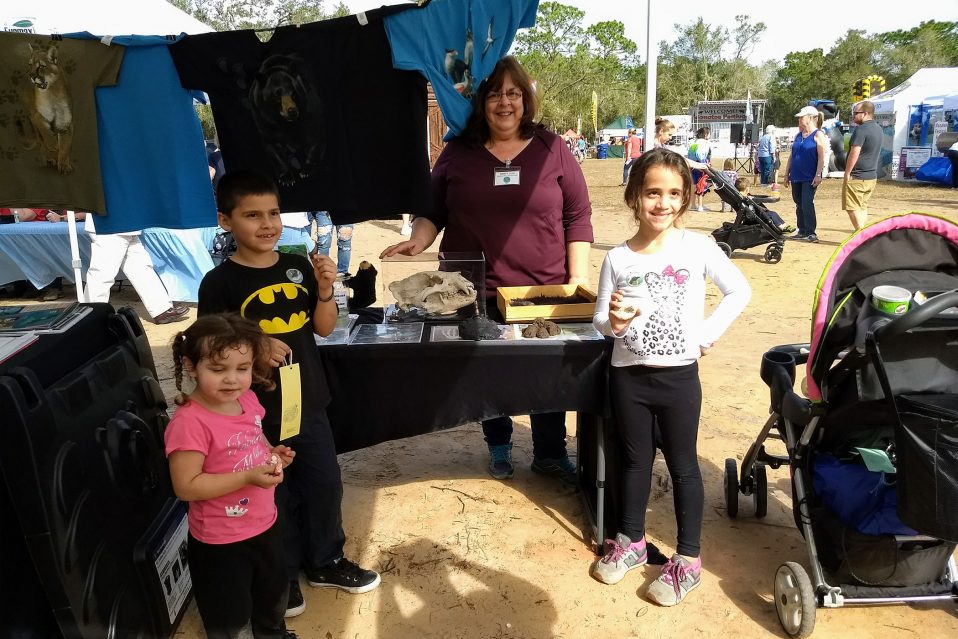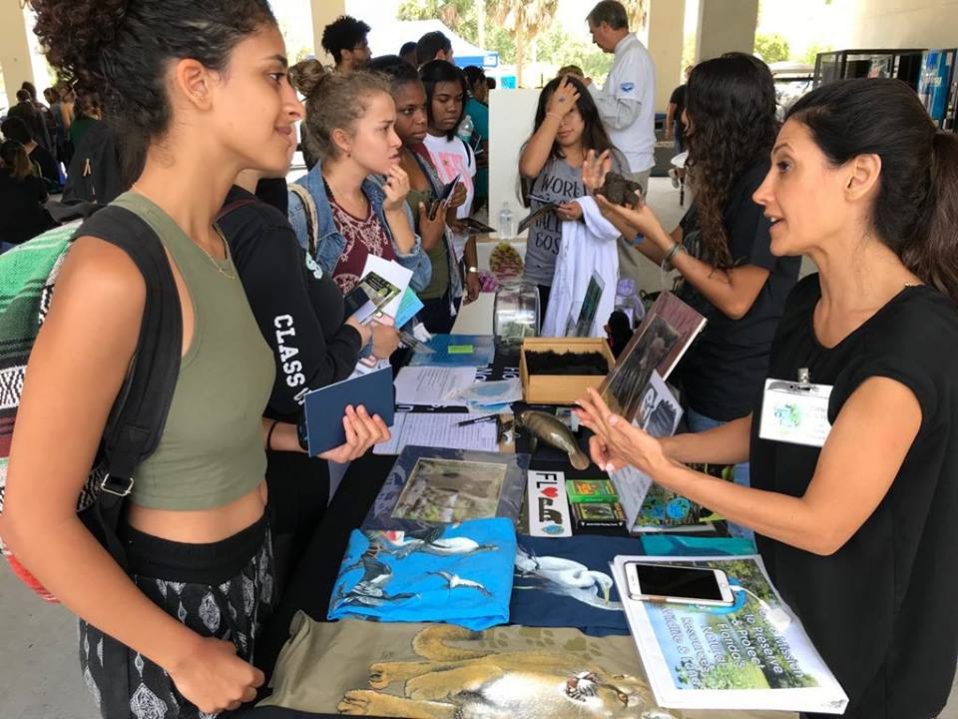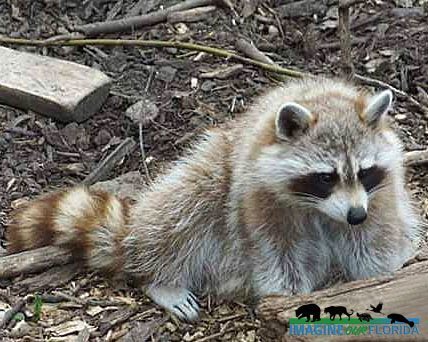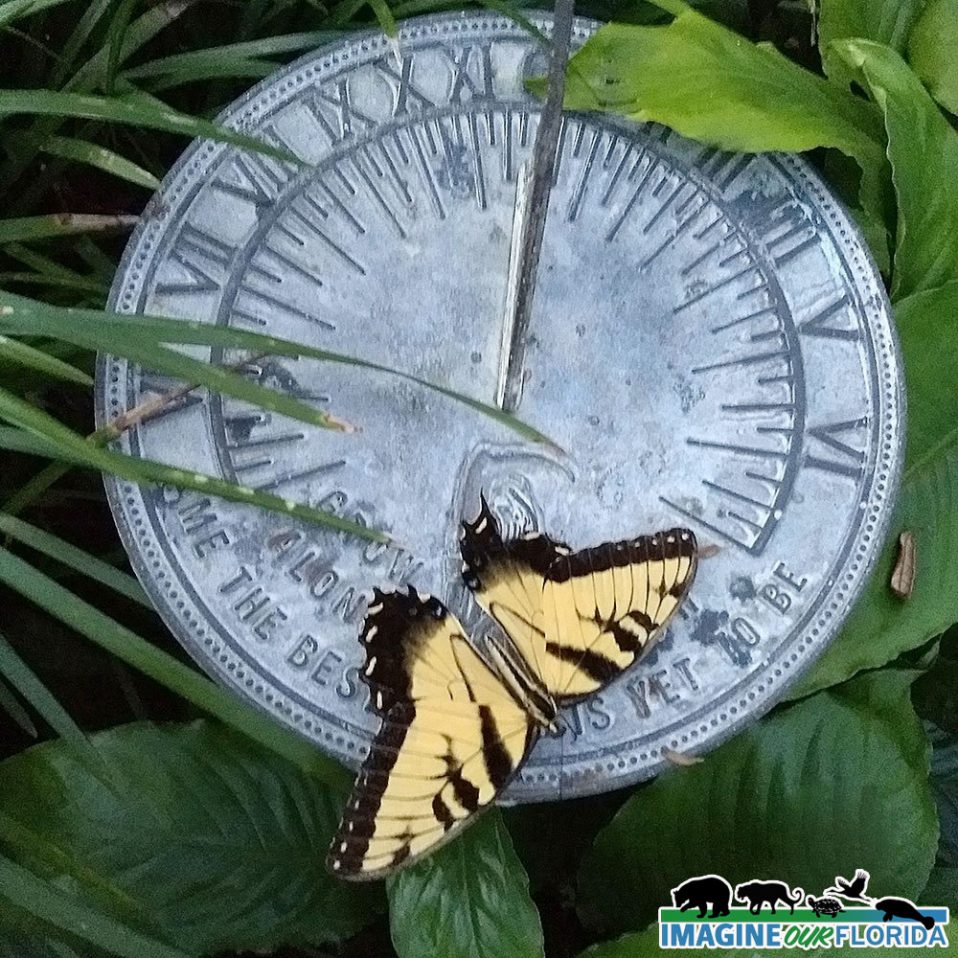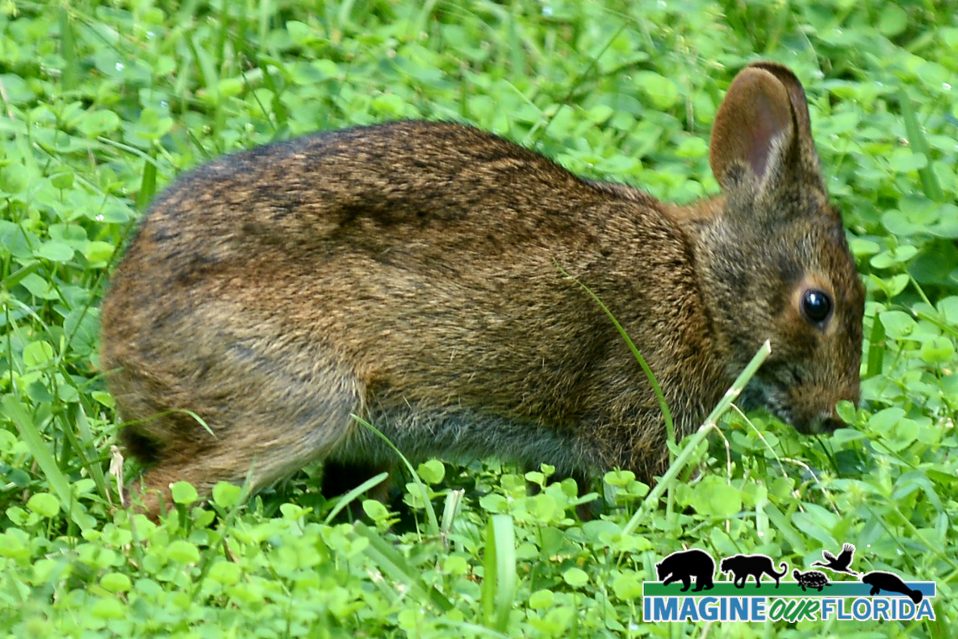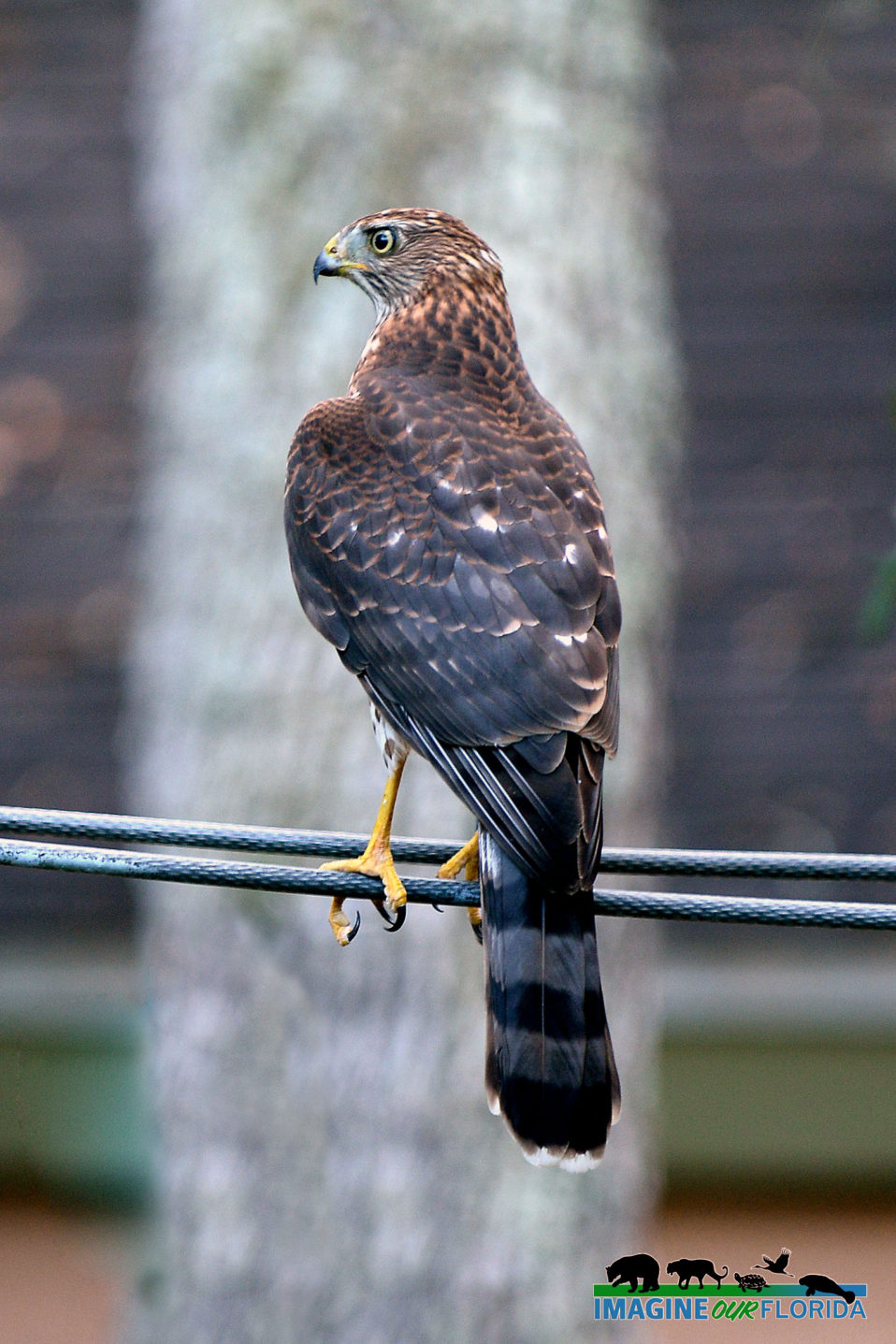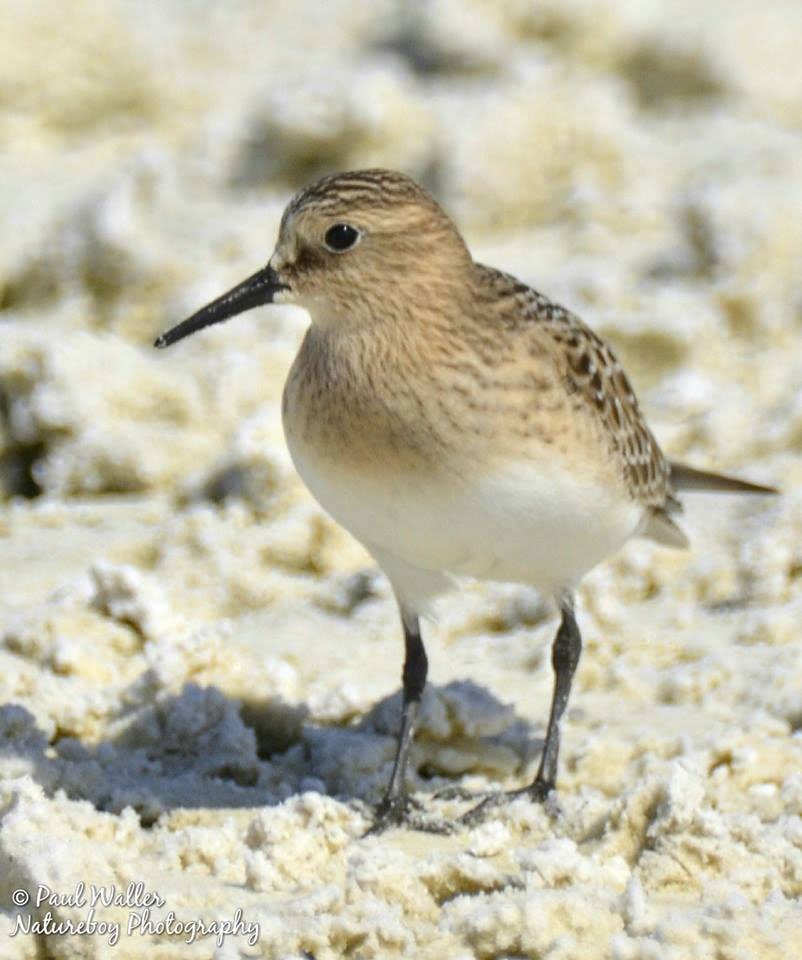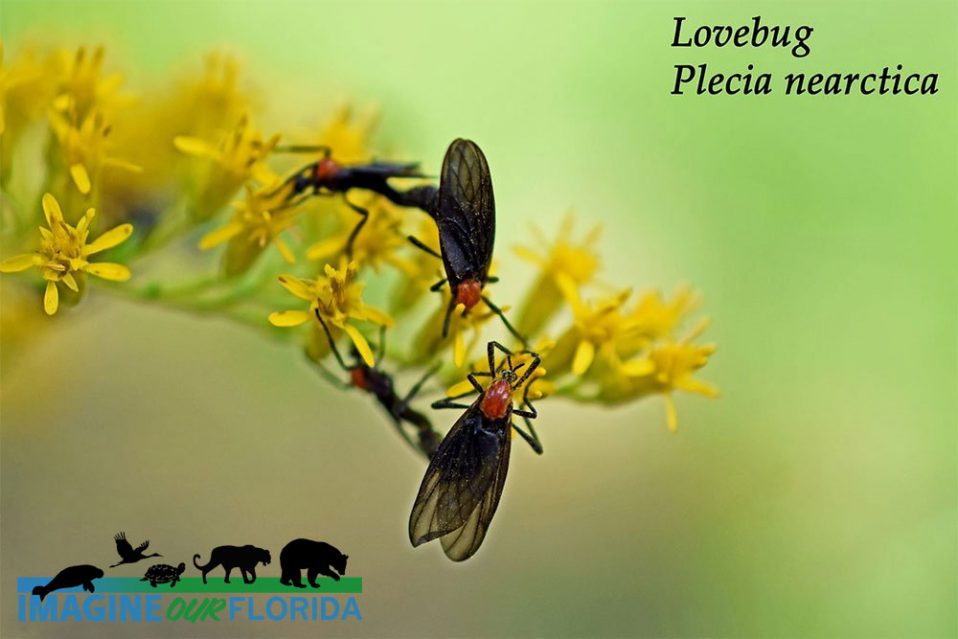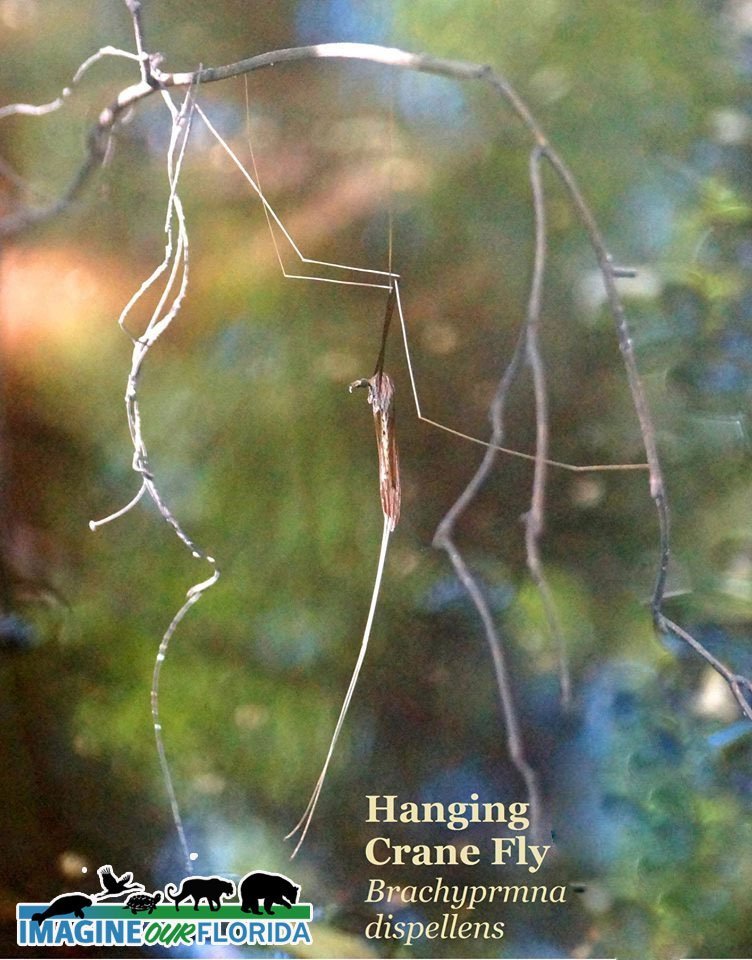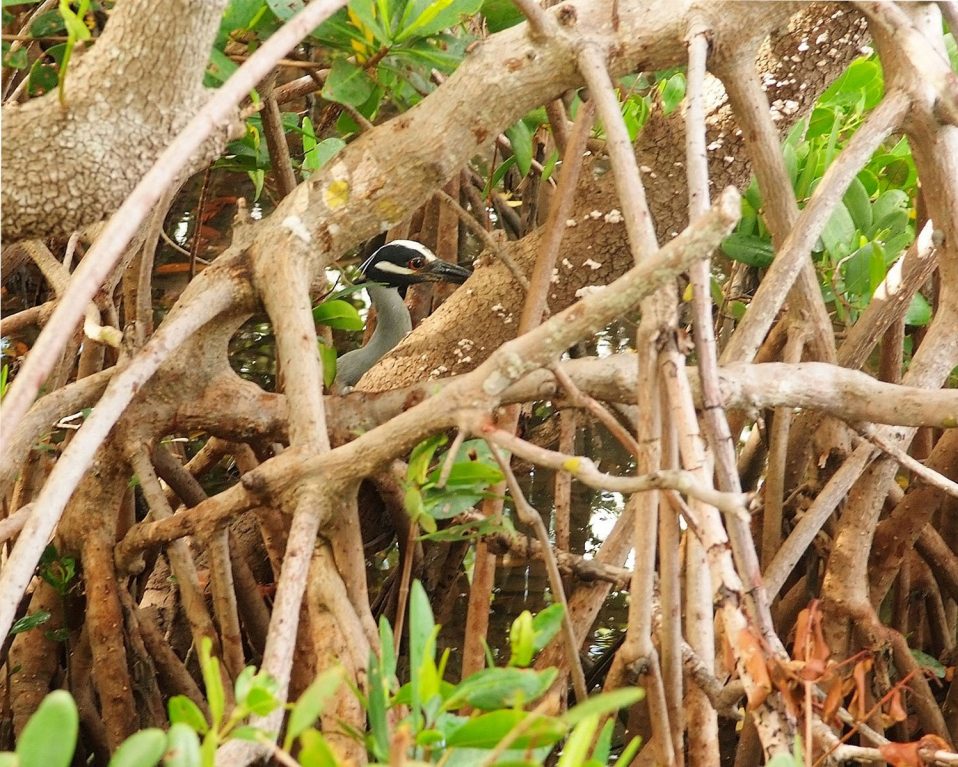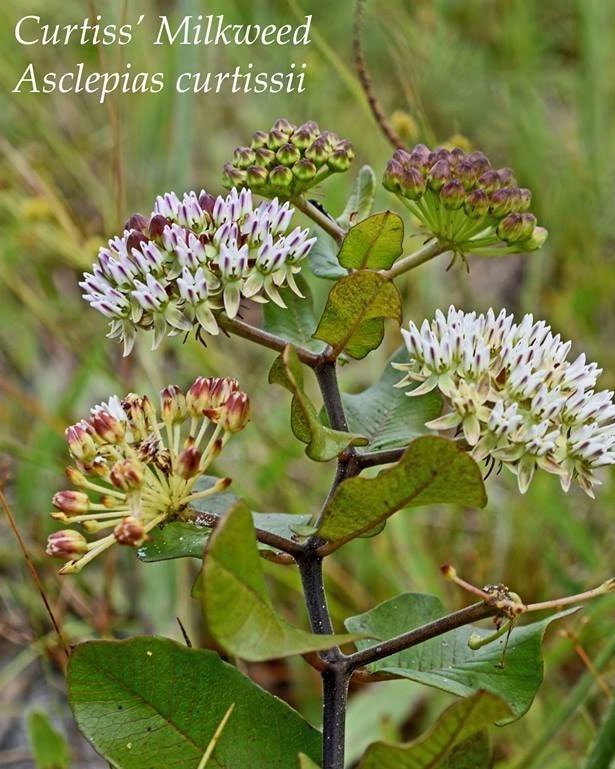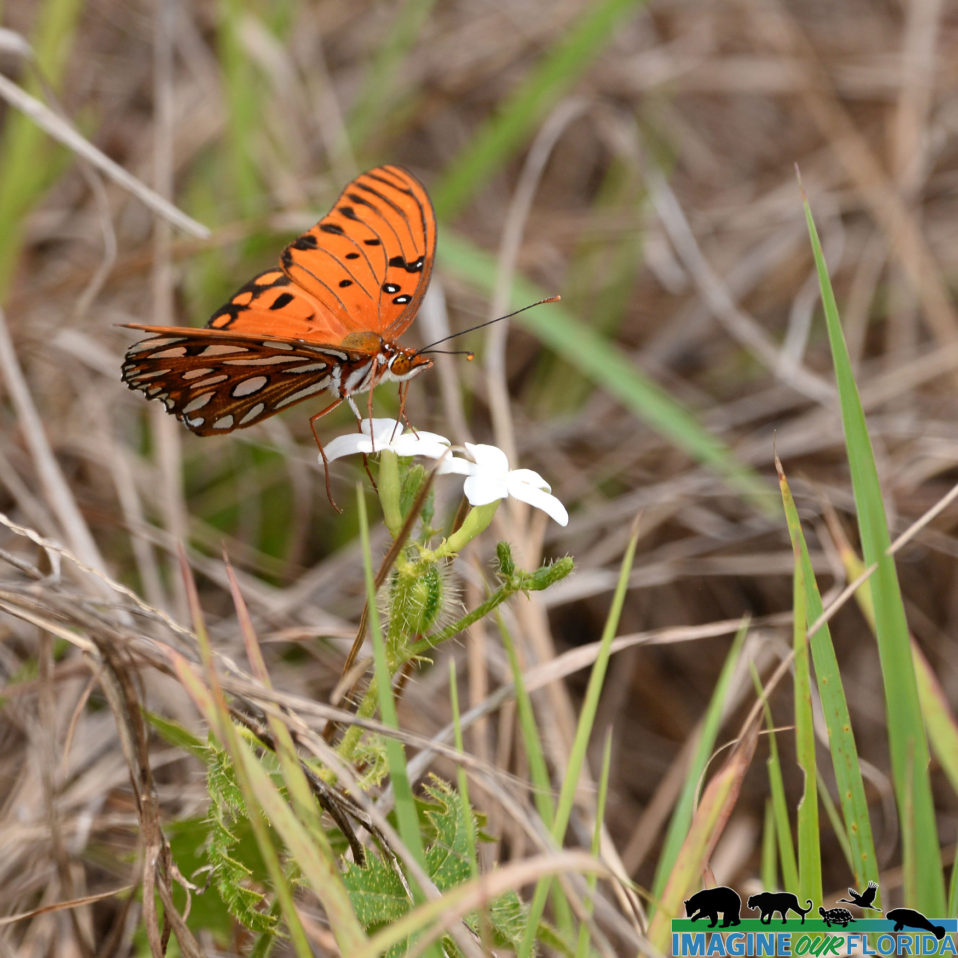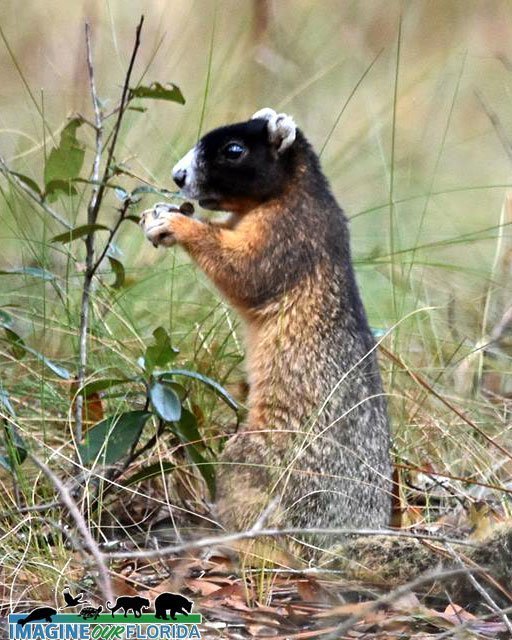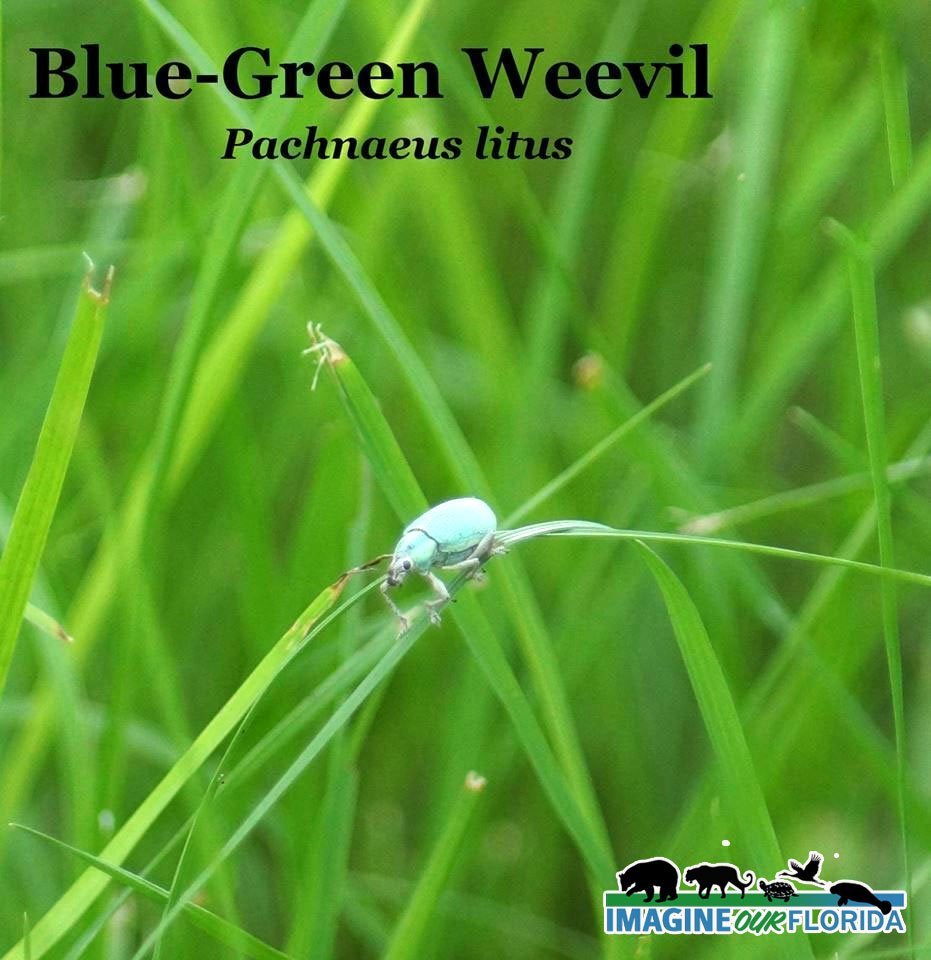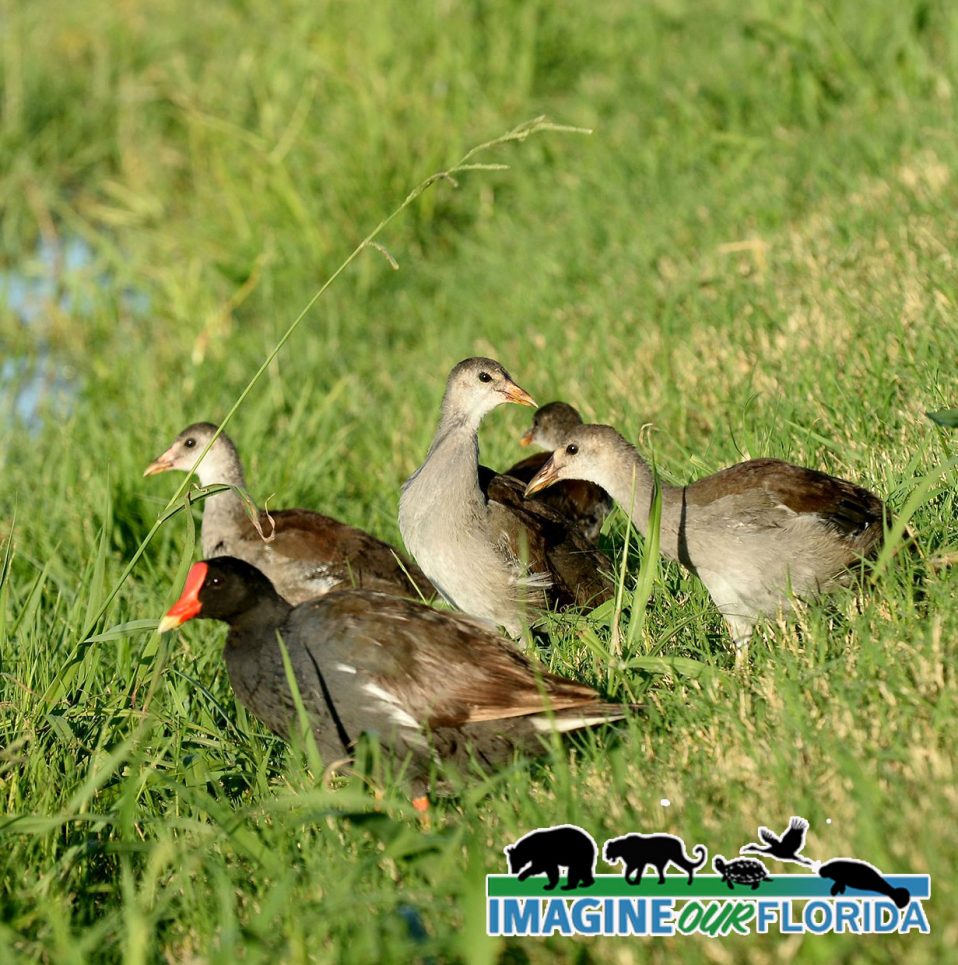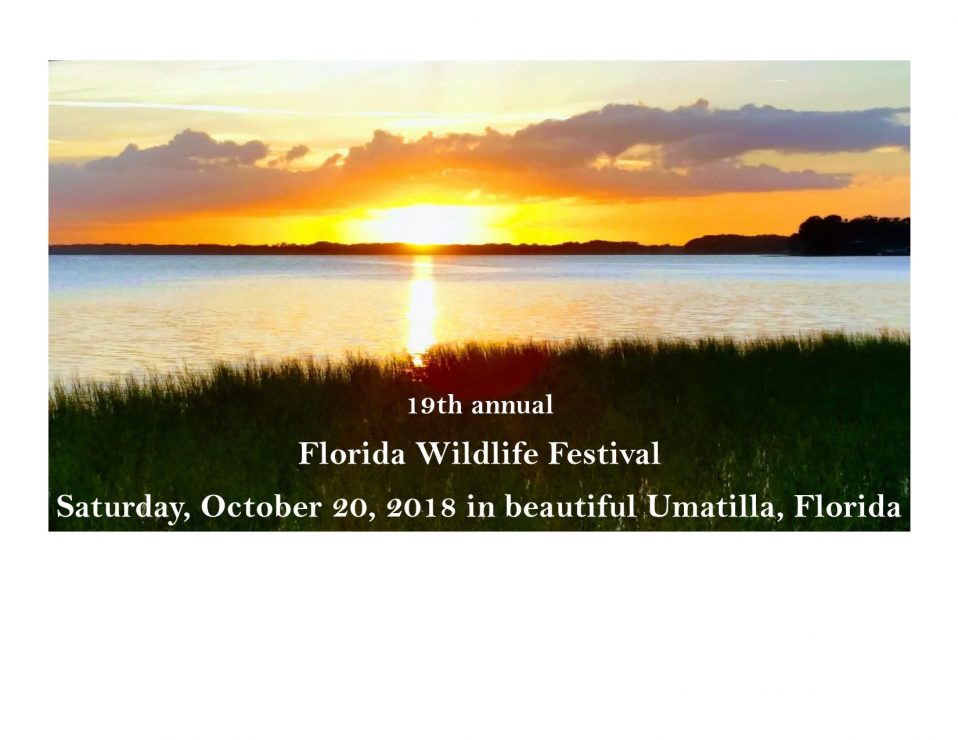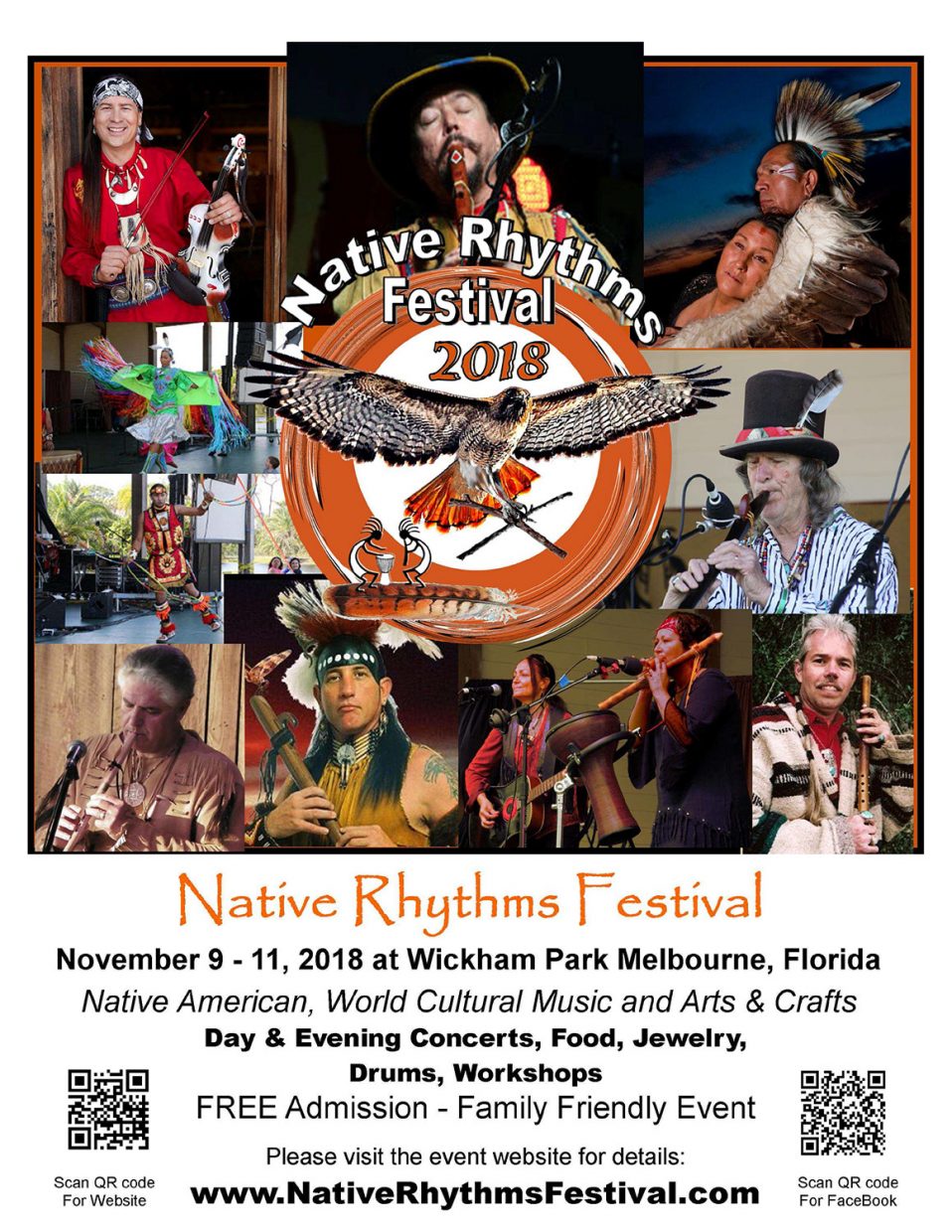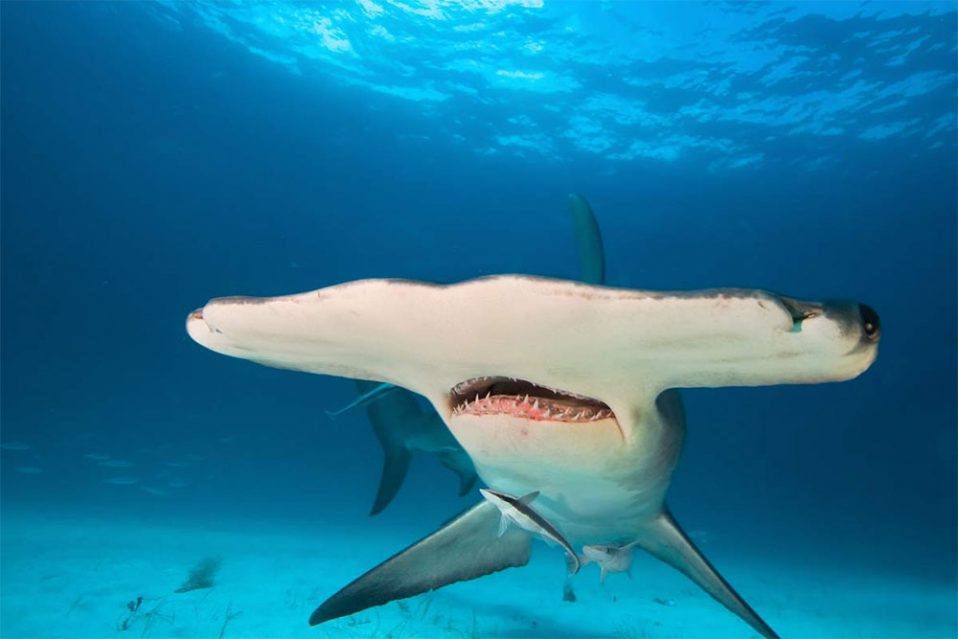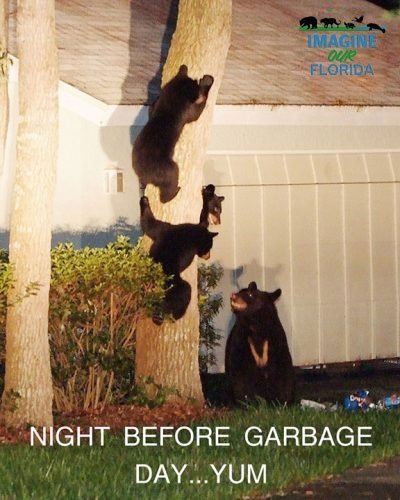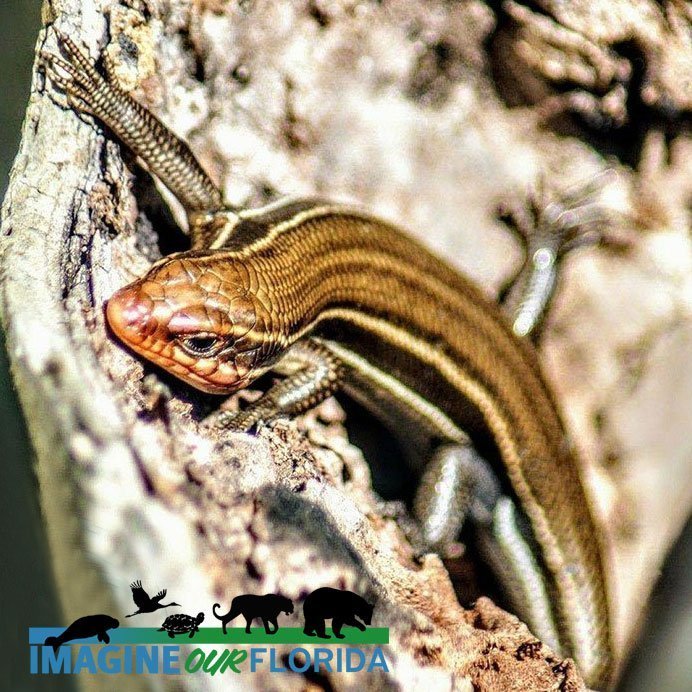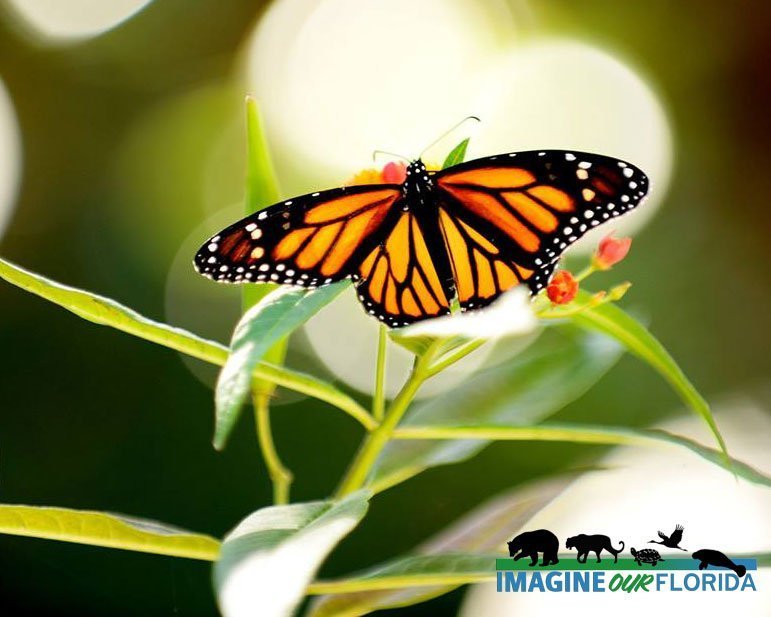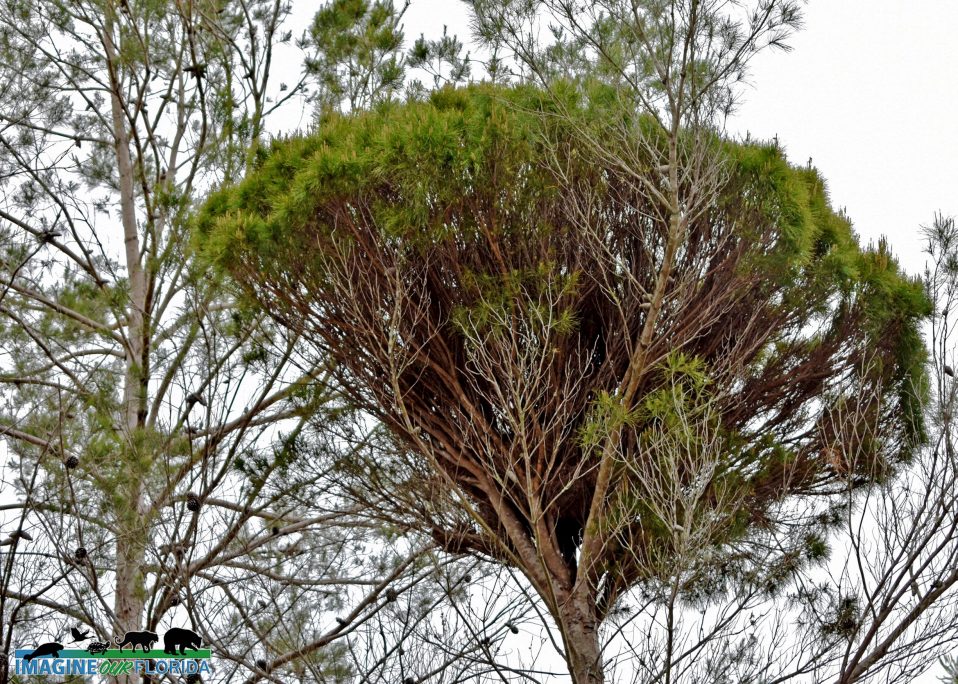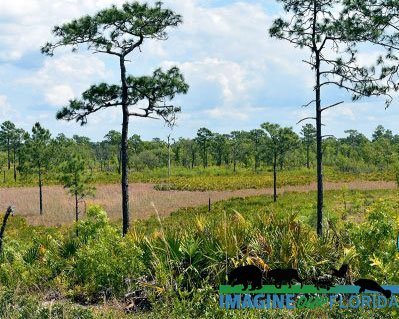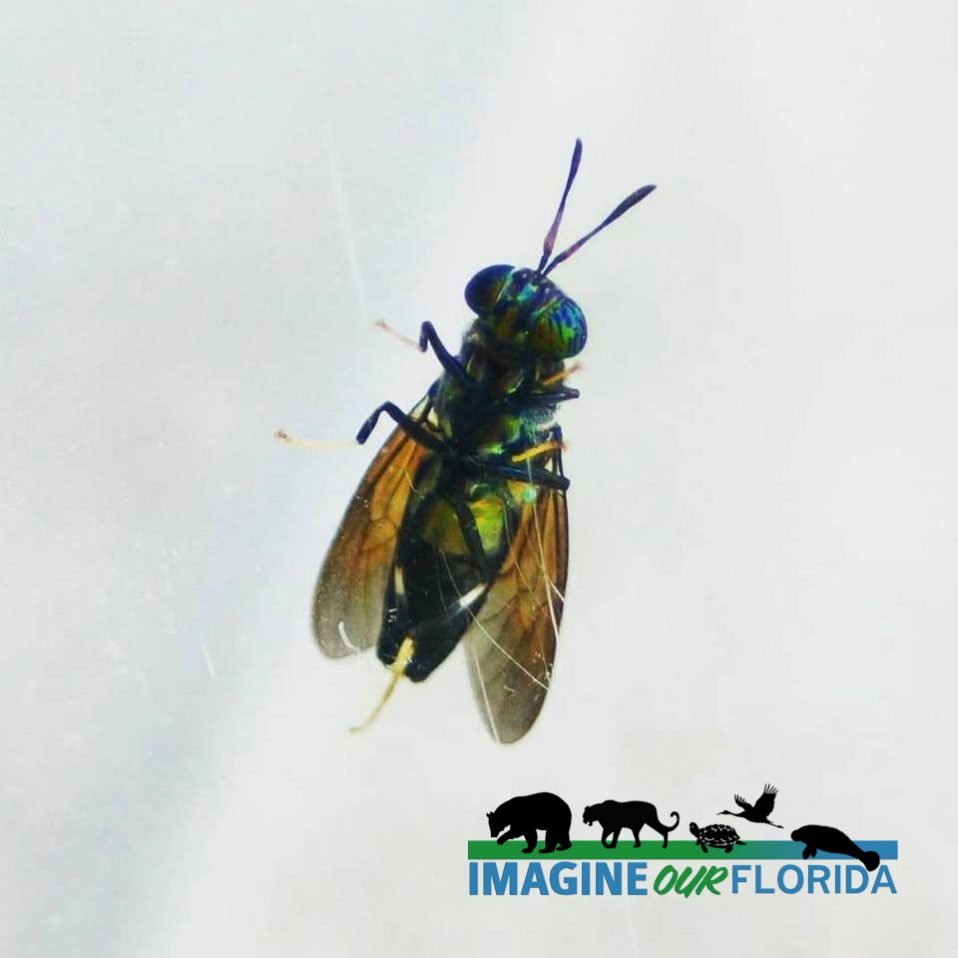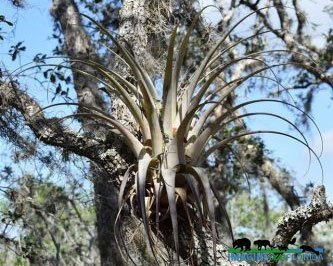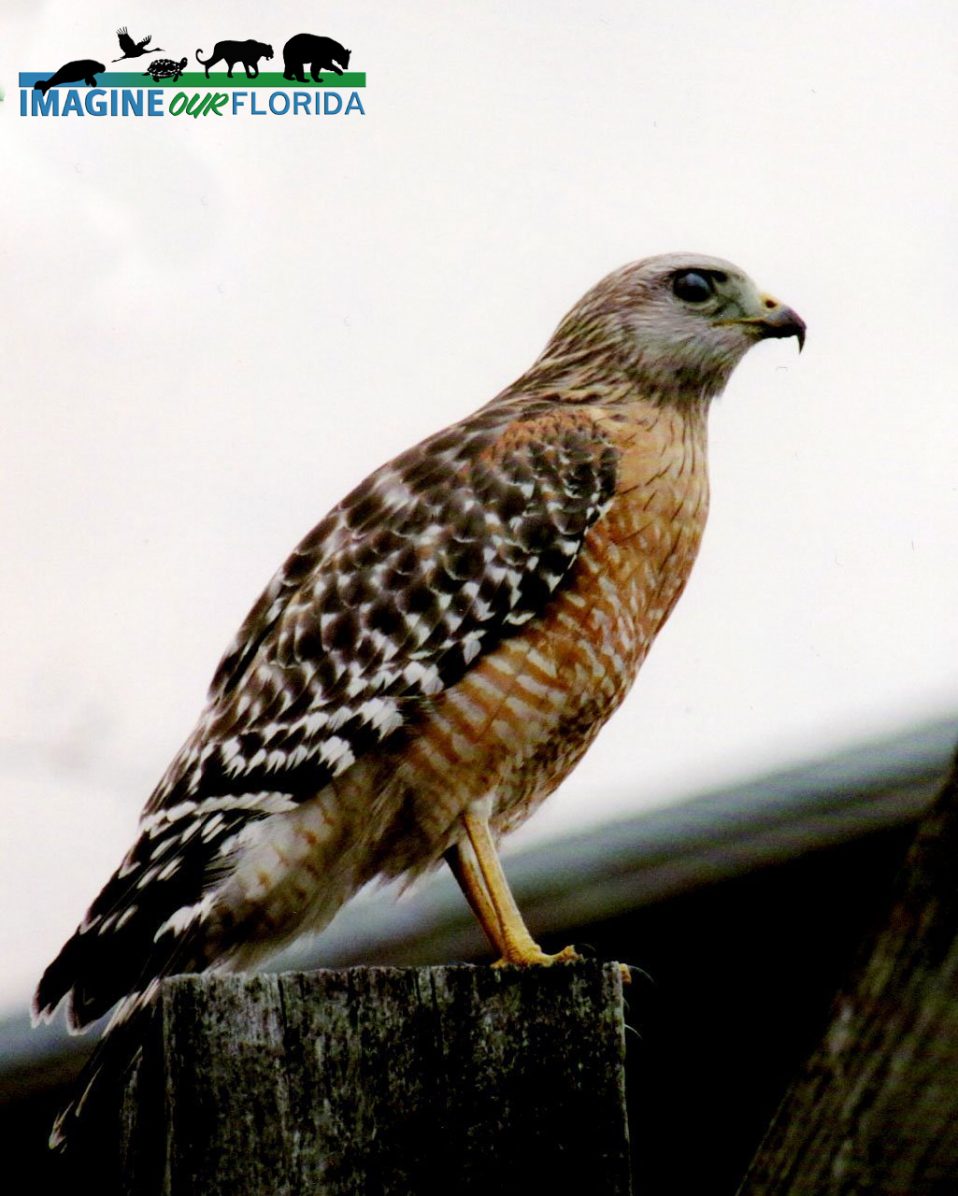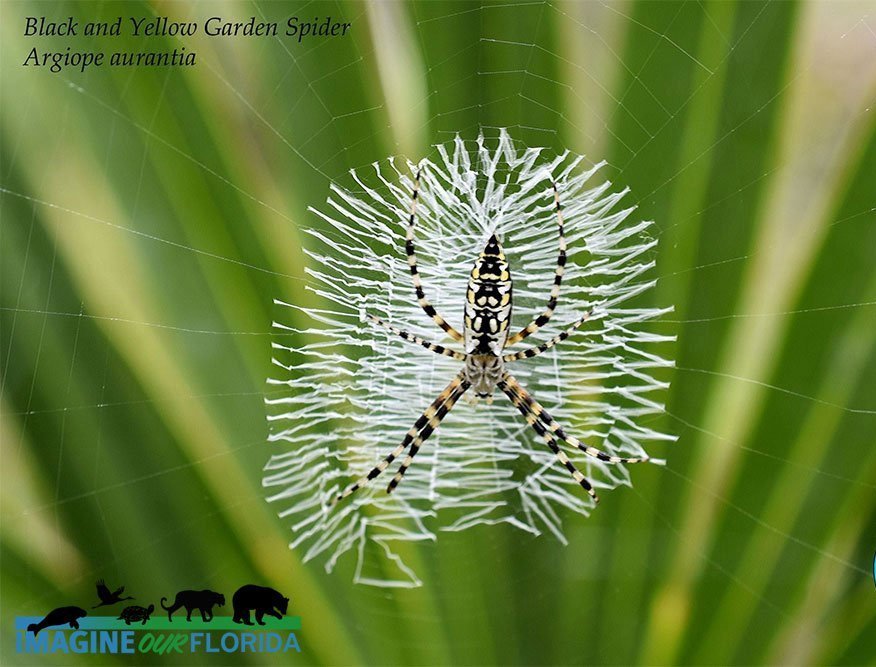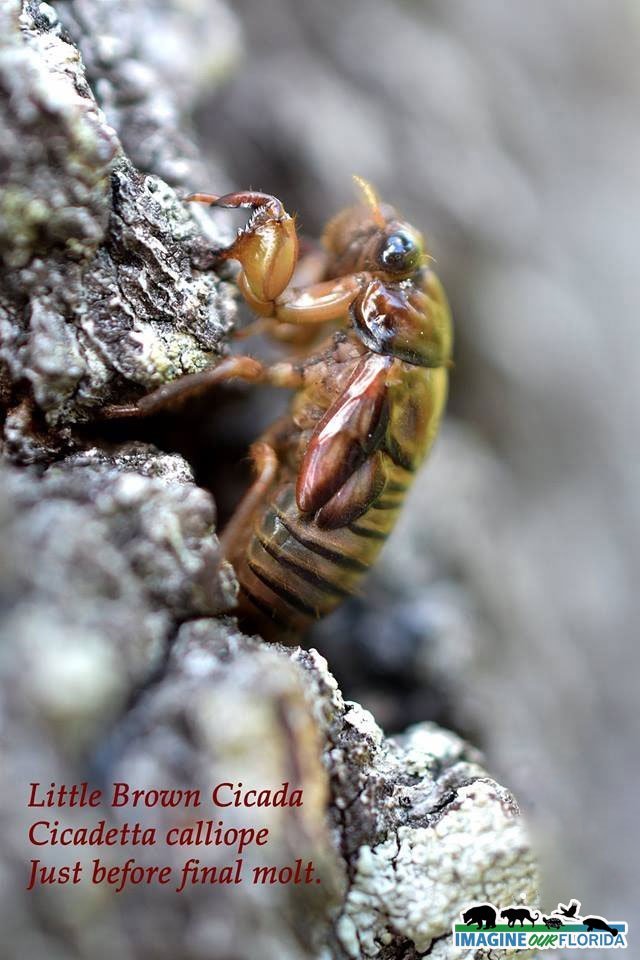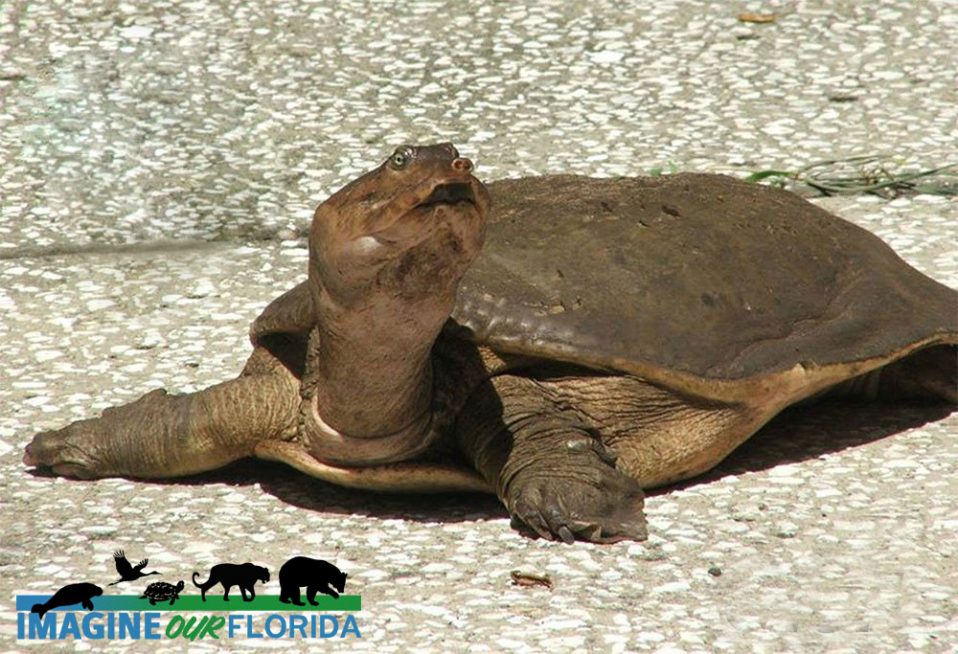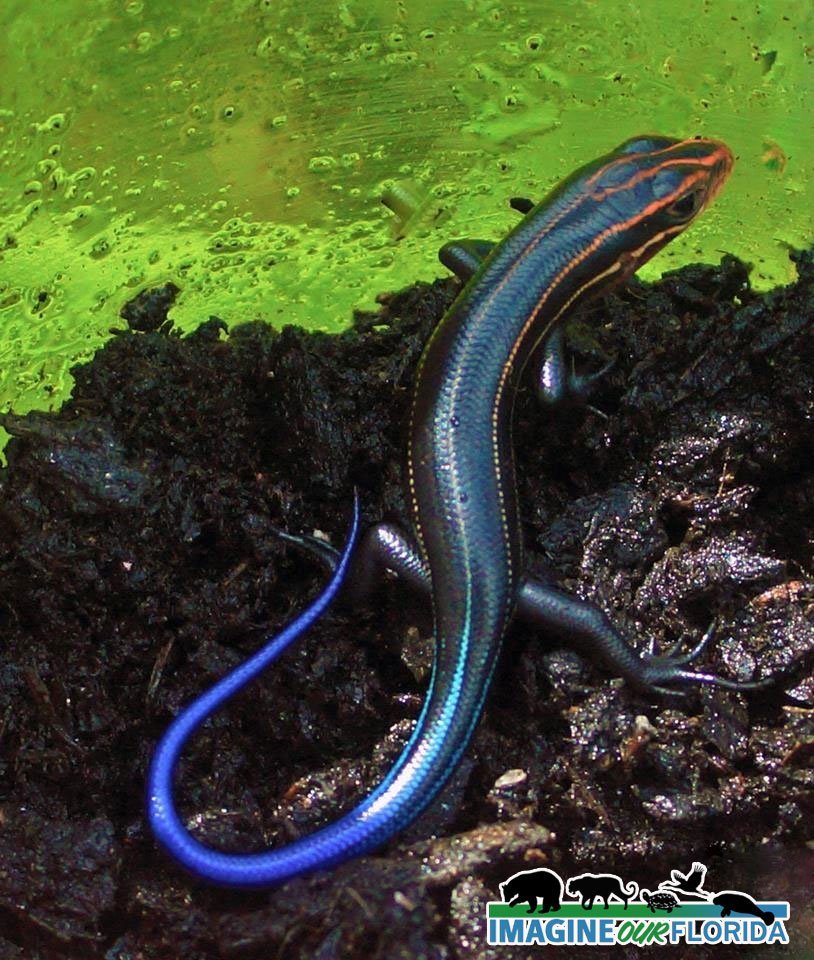The Limpkin (Aramus guaraunas) is a unique-looking bird. It is brown with white spots and streaks, densest on the head and neck, with a long yellow bill. The Limpkin is 25 to 29 inches long, with a wingspan of 40 to 42 inches. Because of their long toes, they can stand on floating objects as well as swim. Limpkins get their name from the seeming limp when they walk. They are also known as the wailing bird or crying bird due to their loud, mournful call at night. Limpkins’ diet consists of apple snails and freshwater mussels. Adapted for foraging on apple snails, the bill is slightly curved to the right so it can slip into the snail. When closed, the bill has a gap right before the tip. The bill then acts like tweezers when it needs to feed. They will also eat worms, insects, frogs, and lizards. The Limpkin’s habitat includes the shores of ponds, lakes, rivers, swamps, and open freshwater marshes. Their nests are made up of twigs and any kind of vegetation. They are built on anything from floating vegetation to tree limbs. Both parents incubate the eggs during the day, but only the females incubate at night. The clutch size is between 3 to 8 eggs, ranging in color from grayish-white to deep olive with brownish or purplish gray streaks. When they are born, they can run, walk, and swim. This bird was once very common in Florida, but because of the decline of its primary food, the Florida Apple Snail, and habitat loss, it is listed as a species of special concern. Did you know: A group of limpkins is known as a “hobbling.”
Perico Preserve
Perico Preserve A stroll through the Perico Preserve will take you through coastal scrub, salt marsh, freshwater marsh, stands of seagrass, and coastal hammocks. The Perico Preserve is located on what was once 175 acres of fallow farmland, located in Bradenton. Instead of letting the 175-acre site be turned into condos, local officials decided to restore coastal habitat and provide support for wildlife. Emphasis has been placed on habitat diversity, so the Perico Preserve encompasses several plant communities. Grasses at the Preserve are Florida natives and include several that are common such as Pink Muhly. Others are less common, like Maidencane (Panicum hemitomon). These native grasses attract beneficial insects and make an excellent cover for wildlife. Over 100 species of native plants have been used on this restoration site. The preserve hosts an assortment of birds as well. Tri-colored Herons, Osprey, Roseate Spoonbills, Blue Herons, Snowy Egrets, and Great Egrets, are just a few you will observe of over 50 bird species. The area is located on several migratory routes. A rookery in the center of a pond, within a seagrass habitat with bird viewing platforms, allows the public to enjoy seeing the birds without disturbing them. The Perico Preserve lies next to a neighborhood and extends beyond the houses to a coastal bayou. It was planned for public use and education, so it includes trails, viewing areas, shelters, and educational materials. This is a successful restoration project on Florida’s central Gulf Coast. Photo credit: Aymee Laurain
Barred Owl
“Who cooks for you? Who cooks for you-all?” hoots the Barred Owl in a rich, soulful voice. Barred Owls (Strix varia) are native to North America and can be found in low-lying swamps, dense forests, and most commonly, in deciduous or mixed woods. A suburban neighborhood can offer Barred Owls an ideal habitat when large trees are present, although the risk of being hit by a vehicle poses a danger. Pleistocene fossils of Barred Owls have been dug up in Florida, indicating these magnificent birds of prey have inhabited our state for at least 11,000 years. Adult Barred Owls are 16–25 inches long and have a wingspan of 38–49 inches. They weigh 1.10 to 2.31 pounds. Their faces are pale with dark rings around the eyes, and they have yellow beaks. Their chests are barred horizontally, and their bellies are barred vertically. Barred Owls are the only species in the Eastern United States who have warm, dark brown eyes. Prey consists mostly of small mammals; however, Barred Owls will also prey upon other small animals such as amphibians, reptiles, and birds. Hunts generally occur during dusk or dawn, although Barred Owls may be found hunting during the day when it’s raining or when raising young. Barred Owls have keen eyesight and will often perch on a branch while waiting for prey to appear. Using their night-vision, they will take flight and silently swoop in on their prey. Without any warning, they will snatch up the unsuspecting animal in their strong talons. Perched close to each other when courting, both males and females will bow and bob their heads, raise their wings, and call out to each other. Barred Owl nests are often found high in a tree cavity, although they have been known to move into an abandoned nest created by hawks, crows, or squirrels. Clutches consist of 2 to 4 white-colored eggs. Eggs are brooded by the female, during which time the male brings the food. Owlets hatch in approximately 4 weeks and are ready to take flight in about 6 weeks.
White-top Pitcher Plant
WHITE-TOP PITCHER PLANT Sarracenia leucophylla Florida has more carnivorous plants than any other state. They are mostly found in the panhandle but can be found in bogs as far south as central Florida. Their roots are mostly used to hold the plant in place. Many of the carnivorous plants reproduce by flowering and producing seeds. Some of these plants produce beautiful and showy blooms to attract pollinators. The carnivorous plants that make Florida their home are not your typical potted Venus flytrap yelling, “Feed Me, Seymour.”. These plants fill Florida’s sandy, wet plains, and bogs. The soil in which carnivorous plants are found tends to be poor in nitrogen due to the wet environment. The nitrogen washes away before the plant can absorb it but these plants have adapted. Using several methods, carnivorous plants are able to trap the bugs and small mammals they need for this vital nutrient. The whitetop pitcher plant, also known as the Swamp Lily, is endangered. Its habitat consists of mixed-grass wet prairies, wet flatwoods, seepage slopes, streamside seeps, and wet prairie ecotones of dome swamps and depression marshes. Flowering time is from March to May. Insects are attracted to the pitcher plant’s sweet nectar which is secreted by its leaves. Once on top of the pitcher, the insect slips on the waxy opening and falls into the plant where fine hairs prevent it from escaping. Enzymes will produce a digested insect which provides the pitcher plant with much-needed nitrogen. Carnivorous Plants are sentinels of the general condition of their environment. One of the first things to go when wetlands degrade is its carnivorous plants. Threats to pitcher plants include fire suppression, disrupted hydrology, feral hogs, and poaching of the plants. Learning about Florida’s carnivorous plants may transform you into a naturalist! Photo Credit – Andy Waldo
Green Heron
The Green Heron (Butorides virescens) is a solitary, secretive bird. They inhabit coastal areas, mangrove swamps, freshwater ponds, and wetlands. Green Herons stand with their bodies stretched and horizontal, ready to thrust their bill into prey. They use twigs, berries, and feathers as bait. They drop the bait into the water and wait for it to attract prey. Fish are the primary food, but they also eat aquatic frogs, crustaceans, insects, grasshoppers, snakes, and rodents. Nests are constructed near water. The male begins building the nest, and the female finishes it. The female lays 3-5 eggs, and both Mom and Dad incubate the eggs for 19-21 days. Once hatched, both will feed the young with regurgitated food. The young learn to fly at about 23 days, but both parents will continue to feed the young until they fledge at about 30 days. The Green Heron is a dark-colored, stocky bird. They have a dark neck, gray belly, and a greenish, blue back. The upper part of the bill is dark, and the legs are bright orange. Green Heron populations seem to be stable but accurate numbers are difficult because of its secretive nature. For the Green Heron, the protection of wetlands is especially important. Green Heron – St Petersburg Mangroves
Miami Blue Butterfly
Miami Blue Butterflies (Cyclargus thomasi bethunebakeri) are as big as a blueberry and have a dandelion puff’s weight. They were once found abundantly through 700 miles of Florida coastline, up and down both Florida’s coasts and the Florida Keys. Their preferred habit is the beach berm. These butterflies pollinate the shoreline which helps prevent shore erosion. Due to the development and remodeling of the natural seashore and mosquito control spraying, Miami blues were unofficially declared extinct after Hurricane Andrew wiped out their last known colony in 1992. Wildlife biologists found a couple of small populations in an uninhabited island in the Florida Keys Wildlife Refuge and began a breeding program. The butterfly uses two coastal plant species to lay its eggs, blackbead and gray nickerbean. Each can be found in abundance on many of the untouched Key Islands. These plants are ideal for the butterfly which feeds on new growth found on the branch end in its caterpillar stage. Adult Miami blues have a lifespan of between one and two weeks. They will stay within 30 feet of their birthplace. During that time, the females will lay between 20 and 100 eggs a day on host plants. It is suspected that when there is no new growth on the plants for them to feed on, ants colonies are store the butterfly eggs until more favorable conditions arise for them to hatch and become caterpillars. In exchange for this, the ants receive a sweet sugar substance from the caterpillar cocoon and do not harm it. Miami blues are an endangered species and part of a 25-year long conservation effort. Vulnerable to hurricanes and climate change, this endemic butterfly can now be found only in Key West National Wildlife Refuge. Photo: Mark Yokoyama
Earth Day at the Gillespie Stetson University
Gillespie Museum, Stetson University 234 E Michigan Ave, DeLand, Florida 32723
IOF at Broward College South Campus Earth Day
Broward College South Campus 7200 Pines Blvd, Pembroke Pines
Cane Toad
The Cane Toad (Rhinella marina) is an invasive species. Native to Central and South America, it was released in Florida in the 1930s-1940s to control sugar cane pests. Cane toads grow to between 4 to 6 inches. Their coloration ranges between tan, brown, reddish-brown to gray. The skin is warty and the back is marked with dark spots. They do not have ridges or crests like the native southern frog. They do, however, have large triangle-shaped parotoid glands, which appear prominently on the shoulders. Breeding takes place from March to September along vegetated, freshwater areas and they lay their eggs in a long, string line, like native toads. Cane toads are predominantly found in Central and South Florida. They can be found in urban areas as well as agricultural areas, flood plains, and mangrove swamps. Cane Toads prey on anything that fits in their mouths. Unfortunately, their prey often consists of native frogs, lizards, snakes, and small mammals. Toxin from a cane toad can irritate a human’s skin and eyes. If a pet bites or swallows a cane toad, they will become sick and the toxin may be fatal. FWC states, “A cane toad’s toxin can kill your pet in as little as 15 minutes without proper treatment. If your pet bites or licks a cane toad, it will likely start acting strangely with frantic or disoriented behavior. It may also have brick-red gums, seizures, and foam at the mouth.” FWC recommends “If you see these symptoms and believe your pet licked or bit a toad, immediately wash toxins forward out of the mouth using a hose for 10 minutes, being careful not to direct water down the throat. Wipe the gums and tongue with a dish towel to help remove the toad’s milky, white toxins that will stick to your pet’s mouth. Once you have done this, get your pet to a veterinarian as quickly as possible.” Keep your cats indoors and your dogs close by when you take him or her outside. FWC offers these tips to make your yard less attractive to cane toads: Cut your grass regularly and keep it short. Fill in any holes around structures. Trim the underside of shrubs and keep branches off the ground. Clear away brush piles and remove clutter. Feed pets indoors when possible and bring outdoor pet food and water bowls indoors at night. Clean up any food scraps from pet bowls or outside tables and grills. For more info, click here: https://content.govdelivery.com/accounts/FLFFWCC/bulletins/239ad8f?reqfrom=share
Sweat Bee
Sweat Bees (Halictidae) are also known as Halictid Bees. They vary greatly in appearance. The majority are dull to metallic black, with the remaining species being metallic green, blue or purple. These bees do not sweat; they are attracted to human sweat. These non-aggressive Bees use the salt from human sweat for their nutritional needs. Sweat bees are important pollinators for many wildflowers and crops, including stone fruits, pears, and field crops. Halictids typically nest in bare soil located in a sunny location. Most halictids nest underground, but some will nest in rotting wood. The bees help speed the decay and decomposition of deadfall trees. In the spring or summer, the female mates. She then begins digging a nest and providing cells with pollen and nectar. Cells containing an egg or larva are lined with a waxy substance, which is extruded from a gland on the underside of the bee’s abdomen. In each cell, a single egg is laid. When the larva hatches, it eats the pollen provided. Once that is eaten, it must become self-sufficient and find its own food source. Males will usually resemble the female of the same species, but the male sweat bee does not have an area of long, dense hairs on its hind legs used for carrying pollen. They may have a yellow spot below the antennae on their face. As these bees feed on nectar and pollen, they are pollinating in the process. These technicolor bees do add a flash of brilliance to a spring garden.
IOF Sea Turtle Embroidered Cap
Color: Khaki Fahrenheit 508 Embroidered, low profile, pigmented dyed, adult cap.
IOF Bumble Bee embroidered cap
Color: Khaki Fahrenheit 508 Embroidered, low profile, pigmented dyed, adult cap.
Roseate Spoonbill
The Roseate Spoonbill (Ajaia Ajaja) is a dramatic comeback bird. Plume hunters had reduced the bird to just 25 in 1901. With the banning of the plume-hunting trade, Florida set a national example for preservation. By the late 1970s, there were nearly 1300 nests. This is an elegant, rose-colored, wading bird with a shovel-like beak. Spoonbills can be found in mangrove swamps, tidal ponds, saltwater lagoons, or other brackish water sources. The bird is 30 to 36 inches tall with a wingspread approaching 3 to 4 feet. Spoonbills have a white neck with pink or rose feathers covering much of its body. The feathers on their wings are bright red to magenta, depending on the age of the bird. The legs are pinkish red. The irises of the eyes of adult birds are bright red.A Spoonbill’s most distinctive feature is the greenish-gray, spoon-shaped beak. On the beak, the nostrils are located near the head, allowing the bird to breathe even with much of its beak underwater. Water must be present for feeding because they can not feed on land. They open their beaks slightly and begin to swing their heads back and forth in the water. This creates small whirlpools, and the vibrations of escaping prey are felt by sensors in the beak. The beak then snaps shut, not allowing the prey to escape. Their prey includes shrimp, crawfish, small fish, insects, and other small mammals. Their red color comes from the red algae ingested along with the crustaceans. Males are slightly larger than females, but their coloration is identical. March through June is mating season. Spoonbills form mating pairs for the season but not for life. Females attract males by shaking branches with their beaks. The male approaches while nodding his head and attempts to perch next to her. Six days after mating, 2 to 4 eggs are deposited in the nest. Both males and females help incubate the nest and feed the young. The young Spoonbills leave the nest at 8 weeks. They reach maturity at 3 years. “How can hope be denied when there is always the possibility of an American flamingo or a roseate spoonbill floating down from the sky like pink rose petals?” Quote -Terry Tempest Williams Photo credit -Dan Kon
Earth Day event at Washington Oaks Gardens State Park
Live Music, Children’s section, Environmental Exhibitors and vendors, Plant Sales, Nature Programs, Live Animal Displays. Address: 6400 N Oceanshore Blvd, Palm Coast, FL 32137
Ecofest Earthday Tampa Bay 2019
EcoFest – Celebrates Earth Day Tampa Bay 2019 is a community event dedicated to the principles of sustainability – Ecology, Equity and Economy. Imagine Our Florida, INC. will be there teaching about bears. So, be sure to share. Come on out and bring your friends and family. If you are interested in volunteering as an educator and advocate send us a message. We look forward to seeing you. Lowry Park county park 7525 N. Boulevard, Tampa, Florida 33604
Little Grass Frog
The Little Grass Frog (Pseudacris ocularis), is the smallest of frogs. They are only 1/2 an inch long and range in color from light beige to dark brown and tan. They have dark eye strips extending along the side of the body and thin white strips above the lip and below the eye. Their pads are tiny and their long toes are slightly webbed. Despite the frog’s size, The Little Grass Frog can jump 20 times its body length. The Little Grass Frog will lay between 1 to 25 creamy brown eggs on vegetation or submerged debris. The eggs hatch in less than 2 days. From tadpole to frog, metamorphosis lasts only 10 days. Look for the Little Grass Frog in wet prairies and flooded grassy meadows. They are active during the day and can be found climbing among the grasses. Listen for The Little Grass Frog’s high-pitched chirp in grassy areas. It is difficult to hear. If you hear the chirping, it is usually at night when the humidity is high or when it is raining. To hear the Little Grass Frog call go to: https://srelherp.uga.edu/anurans/sounds/pseocu.mp3
Agatized Coral
— Agatized Coral — Agatized Coral (Cnidaria anthozoa) is Florida’s state stone. The Florida legislature designated it the state stone in 1979. Coral is the limy outside skeleton of tiny ocean animals called polyps. Agatized Coral, AKA Fossilized Coral, is formed when agate, a form of chalcedony replaces the minerals in coral. This process takes 20-30 million years and is known as pseudomorphic. These fossils are from the Oligocene-Miocene period. Agatized Coral is between 38-25 million years old. These fossils are found in a variety of colors, from white, pink, gray, brown, black, yellow, and red. Trace minerals in the agate create these colors. They are found in ancient ocean beds, where silica-rich groundwater has percolated through the limestone around them. This may give the fossil a banded stone look. Agatized Coral is most often found in the Tampa Bay area, the Withlacoochee/Suwannee River, and the Econfina River. Most Agatized Coral found in Florida lived in the vast Eocene seas which covered the state when Florida was part of the continental shelf. Agatized Coral was used by the first inhabitants of Florida to make spearheads, containers, tools, knives. Remains have been found in archaeological sites dating back to 5000 B.C. The Agatized Coral is highly prized by collectors today.
Turkey Buzzard
Let’s talk about the Turkey Buzzard (Cathartes aura), nature’s sanitation engineer, and when joined by friends, the ultimate clean-up crew. Turkey Buzzards are also known as Turkey Vultures. They have black or dark brown feathers, and their featherless heads and necks have pink skin. They are between 25 to 32 inches in length and weigh up to 6 pounds. They have a wingspan of 54 inches. Turkey vultures use thermal currents to float on the warm air currents without flapping their wings, conserving energy. They will travel 30 to 50 miles on these currents in search of food. Their bills and feet are not designed to catch prey, and they prefer to eat fresh roadkill and other carrion. The Turkey Buzzard has a keener sense of smell than other birds. They can smell the chemical breakdown of carrion from a mile away and will float and follow the aroma until they find it. Their bald, featherless heads make it safer for them to stick their heads deep into the carrion, and nothing will stick to the smooth skin. As carrion eaters, many consider Turkey Buzzards spooky and harbingers of death. If you see one of these vultures circling above you, it doesn’t mean you are about to die. These Buzzards have a unique and ecological role because they prevent the spread of disease from rotting carrion by eating it. Since they have weak legs and cannot carry food back to their young, they will gorge on a carcass and regurgitate to feed the young. They will also urinate on their legs and feet to cool off. Their urine kills any parasites and bacteria from walking and standing on the carcasses. When threatened, they will vomit to lighten their body weight to escape as a defense mechanism against predators. Turkey vultures are highly social. They will fly in a small group and breed annually with the same mate. The vulture can be found in pastures, landfills, or anywhere they can find carrion. Eggs are laid on the ground in dense thickets, scrub areas, hollow logs, caves, or old buildings. The Turkey Buzzard lays between one to four clutches from March to July. Their eggs hatch in 35 to 40 days, and the nesting period is 55 to 90 days. Vultures are a protected species, which means that interfering with them physically has legal repercussions.
Sand Crabs
Sand Crabs are also known as mole crabs or sand fleas. These crustaceans are smaller than a human thumb. The two species predominant on Florida beaches are Emerita talpoida and Emerita benedicti. They are silvery or white in color and seem transparent. The Crabs have antennae, which they use to catch plankton for food. They have no claws and do not bite or sting. The Sand Crabs live between two to three years. The crabs are food for fish, Florida shorebirds, and water birds. They feed on micro-organisms found in the Florida beach sand. That means that they ingest any toxins that might be affecting the shore or the water. Environmental engineers and scientists are able to conclude the health of the ocean based on the condition of sand crabs.
Lightning Bug
Let’s be a kid again with the Firefly/Lightning Bug! Remember those nights of wandering outside in the spring and summer and being surrounded by amazing little flying strobe lights. They would come out at dusk and stay only for a few hours. We captured them in glass jars and looked in amazement as we tried to figure out how their lights worked. Fireflies are a good indicator species for the health of an environment. Unfortunately, these little miracles of life are on the decline throughout the world because of overdevelopment, pesticide use, and yes, light pollution. The best thing you can do to support fireflies is to stop using lawn chemicals and broad-spectrum pesticides. Firefly larvae eat other undesirable insects. They are nature’s natural pest control. If you miss seeing these little buggers, you’ll be happy to know Central Florida’s firefly season is at the end of March and early April. In fact, Blue Springs State Park stays open a little past their usual closing time and has guided tours at this time so you can enjoy nature’s light show.
Dolphin
Dolphin is a common name of aquatic mammals within the order Cetacea. Dolphins can be very large, reaching weights of up to 1400 pounds and lengths of 12.5 feet. They can live between 40 to 50 years and reach sexual maturity between 5 and 14 years. Like all mammals, dolphins reproduce through internal fertilization, and females give birth to live young. The gestation period is between 9 to 17 months, depending on the dolphin. Juveniles are able to swim from the moment they are born, but for two years, they are dependent on their mothers for nursing. Dolphins are thought to be some of the smartest animals on the planet. They are also extremely curious, and their intelligence is both a result and a driver of their complex social structures. They generally live in pods between five to several hundred depending on the type of dolphin. Their preferred prey includes small, schooling fishes and squids. There are over 40 species named as dolphins, from freshwater to saltwater. Most species live in tropical and temperate oceans throughout the world. Five species live in the world’s rivers. They use echolocation to find prey and will hunt together by surrounding a school of fish, trapping them, and taking turns swimming through the school to catch the fish. They have a vocabulary of danger sounds, food sounds, and seeking sounds. Sometimes they put these sounds together in a reasonably complex fashion. They are known to vocalize one to the other. Studies also indicate that there are differences among dolphins’ species regarding their skull size and form, variations that may lead to future changes. As with most species today, the dolphins’ most dangerous threat is man. Sometimes, humans kill dolphins not because they are a food source but because they prey on the same fish species as humans do. Therefore, many fishermen have killed dolphins only because they are a competition for the fish. In some countries, people eat dolphins. In Japan, some species’ meat is seen as a delicacy and can cost up to $25 USD a pound. The presence of humans on Earth does not give dolphins many possibilities to survive. If they are caught in the fishing nets, they are unable to breathe and drown. There is a loss of habitat due to pollution. Millions of gallons of polluted water, toxic substances such as pesticides, heavy metals, plastic trash, and hundreds of other hazardous materials are released into the ocean and the rivers. Their habitat becomes contaminated and causes illness and death. There are many positive interactions between humans and dolphins. They have rarely attacked people. Instead, they have helped them often. The truth is that there is nothing to indicate that dolphins feel particular empathy for man since they have a highly developed social behavior. They behave the same way with other animals. Fun Fact: While sleeping, the bottlenose dolphin shuts down only half of its brain, along with the opposite eye. The other half of the brain stays awake at a low level of alertness. The attentive side is used to watch for predators, obstacles, and other animals. It also […]
Burrowing Owl
Florida Burrowing Owls are small owls with long legs and short tails. The head is rounded and does not have ear tufts. They are between 7-9 inches tall with a 21-inch wingspan. Burrowing owls have brown back feathers with patches of white spots. As well as a white underside with brown bar-shaped spots. The body color pattern helps them blend in with the vegetation in their habitat and avoid predators. They also have large yellow eyes and a white chin. They make their burrows in sandy prairies and pastures with very little vegetation. Due to development, the majority of Florida’s Burrowing Owls have had to adapt to living in urban habitats such as golf courses, ball fields, residential lawns, and other expanses of cleared lands. They are a very social species. Families will live in close proximity to each other. They are the only species of owl in the world that nests underground. They will dig their own burrows, or occupy burrows, up to 8 feet in length, that have been dug out by a Gopher Tortoise. They are active more during the day than the night. The female lays 6-8 eggs and incubates them, while the father stands guard outside and collects cockroaches, lizards, insects, and rodents. The chicks take several weeks to learn to fly. Before that, they take short runs along the ground. The Florida Burrowing Owl is listed as threatened due to loss of habitation and harassment by humans and domesticated animals.
Horse Conch
The state shell of Florida, designated in 1969., is the Horse Conch (Triplofusus giganteu). The word “conch” comes from a Greek word meaning “shell.” The Horse Conch is the largest snail found in American waters and can grow to a length of two feet. It’s easily identified by the bright orange body. The shell is grayish-white to salmon in color and covered with a brown, scaly outer layer, that you will see peeling. The 10 whorls of the shell are knobbed. Young shells are orange. The animal inside the shell is orange to brick red in color. The shell protects their soft bodies from predators. Horse Conchs use a foot that extends from their shell to drag the shell along. Horse Conchs are commonly found in seagrass beds and reefs. This snail is carnivorous and will feed on clams and mussels as well as other snails. They consume algae and detritus (poop and parts of dead organic matter.) The female attaches capsule-like structures to rock or old shells. Each capsule contains several dozen eggs. Not all eggs are fertile. Non-fertile eggs are eaten by those who are maturing in the same capsule. When the young emerge they are an orange color and usually 3.5 inches in diameter. Commercial harvesting requires a permit and there are limits. In some areas, it’s illegal to collect them. Lee County does not allow their harvest and Manatee county does not allow more than two per day. Keep in mind that while it may be tempting to collect large numbers of shells, other organisms rely on their shells for a safe living space after the conch dies. It’s best to admire Horse Conchs for a brief time and leave it for someone else to appreciate. The Horse Conch’s predators are primarily humans who use them for their shells and food. Other predators are octopuses who use their suction cups to suck the conch out of its shell. Some starfish can slip one of their arms into the opening of the conch and then force their stomach out and ingest the conch right from its shell. This photograph shows how Horse Conchs make little Horse Conchs.
Pink Muhly Grass
Pink Muhly (Muhlenbergia capillaris). Muhly grass is naturally found in Florida’s pine flatwoods, coastal uplands, and along its highways. This grass produces clumps that can reach 2 to 3 feet tall and up to 3 feet wide. In the fall, muhly grass produces fluffy pink to purple flower stalks, that can reach up to 5 feet tall and give the plant a distinctive and attractive appearance. This grass is resistant to heat, drought, humidity, and salt-tolerant, as well as deer and rabbit resistant. Consider planting this native grass in your yard and garden. Native plants typically are adapted to native soils and climate, which also means they thrive with natural rainfall levels. Pink Muhly grass needs little attention and is definitely low maintenance.
Green Sea Turtle
Marine habitats surrounding the Keys provide habitat for threatened and endangered species. The Florida population of Green Sea Turtle (Chelonia mydas) has been considered endangered since 1978. The declining population has been a victim of commercial harvesting for eggs and food and incidental bycatch in the shrimp fishery. Florida is an important sea turtle nesting area. The majority of nesting in Florida occurs between May 1st and October 31st. About 90% of all sea turtle nesting in the United States occurs on Florida’s beaches. To prevent nesting and hatchling turtles from wandering off track, your beachfront property should use sea turtle-friendly lighting. Never touch a sea turtle or pick up the hatchling; it interferes with the process of imprinting on their beach. The Green Sea Turtle has a rounded, oval body with a distinctive smaller head. Its name is derived from the greenish fat in its upper and lower shell. Incubation lasts approximately sixty days. As the nursery due date, between 4 to 5 days, comes closer, a depression forms in the sand that indicates hatchling movements. Soon, the babies begin digging out en masse to start their journey to the water’s edge. The reflection of the moonlight on the water inspires their pathway to the sea. Turtles deposit approximately 100 golf-ball-sized eggs, gently cover the eggs with sand, and then spread sand over a wide area to obscure the chamber’s exact location. A single female may nest several times during a season and then not nest again for one or two years. A male Sea Turtle never leaves the ocean. The Turtles live between 12 to 50 years. Once in the water, the hatchlings swim directly out to sea, facing a struggle to survive to adulthood. They range in size between 3 to 5 feet and weigh anywhere between 240 to 420 pounds. They mainly eat seagrass and algae, the only sea turtle that is herbivorous as an adult. Their jaws are finely serrated, which aids in tearing vegetation. The estimate is there are between 85,000 to 90,000 nesting females. It may seem like many nesting females are laying eggs, but the Green Sea Turtle is facing a high risk of extinction in the wild in the near future. Photo Credit: Ira Wendorf – frontal view
Crocodile
Florida is famous for many things, one of them being the only environment on earth where American Alligators and American Crocodiles coexist. You may wonder what the difference is between the two. While they are related and do look very similar, crocodiles and alligators have some major differences. Crocodiles exist both in freshwater and saltwater, whereas alligators prefer freshwater environments. The obvious difference is their appearances. Crocodiles have longer, pointier snouts. Alligators have shorter, more rounded snouts. When an alligator has its mouth shut, you won’t see any of its teeth. When a crocodile has its mouth shut, its back teeth stick up over the top lip. Because they are broader, alligator snouts are stronger than crocodile snouts, which allows them to crush hard-shelled prey such as turtles. Crocodiles are typically lighter in color, with tans and brown colors. Alligators are darker, showing more gray and black colors. Both members are excellent hunters. They have sharp, above-water vision, night vision, sensitive hearing, and vertical pupils that take in additional light. Both have small sensory pits along their jaws that allow them to detect pressure changes in the water and locate and capture prey. They both prefer to swallow large chunks or swallow their prey whole. Crocodiles have higher-functioning salt glands that allow them to excrete higher amounts of salt from water than alligators can. Alligator glands do not function as strongly, which makes them less tolerant of saltwater environments, so they prefer freshwater. Crocodiles can successfully migrate across multiple bodies of salt and fresh water. American Alligators are regarded as more docile than crocodiles, only attacking if hungry or provoked. American Crocodiles are shy and reclusive. Crocodiles prefer to spend more time in the water. Alligators prefer to sunbathe on the banks or in the mud close to the water. Female alligators will continuously mate with the same male alligators for life. Crocodile babies come from multiple mates. Crocodiles live longer than alligators. The average lifespan of a crocodile is between 70-100 years, while an alligator’s average lifespan is usually between 30-50 years. It would be best to avoid contact with both animals at all costs.
Red Velvet Ant
The Red Velvet Ant (Dasymutilla occidentalis) – the name is a bit misleading. These fuzzy little insects aren’t actually ants but rather wasps. The males have wings and can fly but are harmless. The females, however, can deliver a powerful and painful sting. Fortunately, they do not have wings and can easily be avoided. These differences in sexes are called sexual dimorphism. These wasps create burrows in the ground that look like small holes. Chances are you have walked by the burrows without noticing.
Golden Silk Orb Weaver
The Golden Silk Orb-Weaver (Trichonephila clavipes) is dreaded by hikers and bikers in the forest. Their sticky, golden webs, which can measure 6 1/2 feet in diameter, are spun in insect flight paths in open woods and at the edge of dense forests. You may run into them in your yard, where they are spun between trees and dense shrubs. The large webs catch flies, bees, wasps, moths, butterflies, male orb-weavers, and more. The prey is devoured by the spider, who is waiting patiently on the web. Golden Silk Orb-Weavers are also known as Banana Spiders because of their yellow coloring. Their color variation, complete with furry-looking tufts on their legs, helps them blend into the forest. They are also known as Giant Wood Spiders because the females’ bodies are more than 1 1/2 inches and, including legs, can measure up to 5 inches in diameter. Males are significantly smaller, with bodies at about 1/4 of an inch. The small males come out to mate between July and September. The females produce at least two egg sacs per year but have been known to produce up to nine. Each sac contains a few hundred eggs. The female often eats the male after mating. Climate change has mildly affected these spiders’ behavior. Still, they have adapted by creating reflective carapaces and turning the cylindrical parts of their bodies towards the sun to reduce the heated body surface. They also reduce heat by holding a drop of water in their chelicerae (mouth-part) and allowing it to evaporate. This has allowed them to adapt very well to their environment. The next time these little ones give you a scare, take a few minutes to appreciate their hard work. Golden Silk Orb-Weavers play an important role in our ecosystems. Orange and pecan farmers appreciate their cooperation in keeping pests away from harvests. These fascinating spiders provide insect control in our wild spaces and our yards.
Robin
Robins * Robins prefer cooler temperatures, which is why they fly north to escape the southern heat. * Robins will start to migrate back north when they feel a 37-degree average daily isotherm ( ground temperature above 37*). * Male robins will arrive at their northern destinations about 2 weeks earlier than the females. This gives them time to claim their territory. * Robins do not mate for life; however, the male will stay to help feed his chicks. *Chicks leave the nest in August and live to be 5-6 years old. * Robins begin to migrate south when the temperature causes the ground to become too hard to dig for earthworms, their main food source. * Robins will resort to eating berries and insects until that food supply starts to dwindle. * During migration, robins can fly up to 36 mph and cover 100-200 miles a day. *Winter months are spent in Florida, southern Louisiana, southern Texas, southern Arizona, southern New Mexico, Southern California, and northern Mexico. * Most robins migrate intermediate distances but some have migrated from Vancouver to as far south as Guatemala. As the temperature warms in our neighboring states, robins will begin to make their way across Florida. Keep an eye on your birdbath. A flock of robins just might stop by for a quick dip and drink.
Coral Reef
—-Coral Reef—- Florida is the only state in the continental United States with a shallow coral reef near its coast. Coral reefs create specialized habitats that provide shelter, food, and breeding sites for numerous plants and animals.
Florida Cracker Horse
The Florida Cracker Horse is a valuable and vital part of Florida’s heritage. While still rare, there are over 1,000 registered horses, which continues to grow yearly. The Florida Cracker Horse traces its ancestry to Spanish stock brought to Florida in the 1500s. They were given their name from the sound of the whips cracking as they worked cattle. The Florida Cracker horse exhibits great endurance in an unfavorable environment. This horse exemplifies great patience and strength. The Cracker horse can work all day and night, traveling without additional care requirements. When the horses were left to roam freely, they evolved due to natural selection. They were tempered and molded by a challenging environment. In addition to playing an important role in the lives of Seminole Indians, they eventually helped Florida become a state of agriculture and ranching. Through the efforts of several private families and the Florida government, the breed was saved from extinction, but there is still concern about its low numbers. The breed’s low numbers are considered to be at a critical point. The state has three small herds in Tallahassee, Withlacoochee State Forest, and Paynes Prairie State Preserve. The state maintains two lines for breeding and the line that roams the Paynes Prairie State Preserve for display purposes. By 1989, these three herds and around 100 other horses owned by private families were all that remained of the breed. The population is considered “critical,” meaning that there are between 100 and 300 active adult breeding mares in existence today. Effective, July 1, 2008, the Florida House of Representatives declared the Florida Cracker Horse the official state horse. Photo Credit: Kerry Waldo
Bald Eagle
The Bald Eagle, Haliaeetus leucocephalus, is more than the symbol of the United States. They are interesting enough to have an entire day dedicated to them. While Save the Eagles Day originated as a way to raise awareness about the then-endangered species, it now serves as a time to learn about the thriving animals. Here are five facts you may not know about eagles: 1. Females weigh more than their male counterparts. The males weigh between 7 and 10 pounds, and females can weigh up to 14 pounds. 2. Eagles can see as much as eight times further than humans, and their eyes are equipped with infection-fighting tears. 3. While the bald eagle population has steadily increased after a severe drop, most of the population’s fatalities remain human-related. Impacts with manmade structures, gunshots, and poisoning are the leading causes of death. 4. The Bald Eagle emits a surprisingly weak-sounding call. Usually, a series of high-pitched, whistling, or piping notes. The female may repeat a single, soft, high-pitched note that signals her readiness to copulate. 5. Eagles can dive up to 100 mph while hunting. When they’re flying casually, they go about 30 mph. The bald eagle, the national bird of the United States, was once on the endangered species list, being on it from 1967 until 1995. It was then reclassified as being threatened. The Eagle was subsequently removed from that list in 2007 and is now listed in the least concern category. The bald eagle is strongly associated with the United States, but eagles are on the coat of arms of Germany as well as on Egyptian and Albanian flags and coats of arms. If you live near eagles, advocate protecting their habitat. The bald eagle is another example of a species brought to the brink of extinction that is now thriving. Photo credit: David Gale and Aymee Laurain
Florida mouse
The Florida mouse (Podomys floridanus) is the State’s only endemic mammal. This mouse is a microhabitat specialist, centering its activities on gopher tortoise burrows in sand pine scrub or longleaf pine, turkey oak habitats. Florida mice construct their own burrows within the larger burrow of the gopher tortoise. Each adult female mouse uses about two tortoise burrows, alternating her residency with successive litters. Females begin to breed when they reach a weight of approximately 27 grams. Litter size is between 2-4 and the young mature very slowly. Occasionally two adult females will use the same tortoise burrow. Their diet consists of crickets, ticks, fruit, seeds, and berries. A baby of a Florida mouse is called a pinkie, kitten, or pup. The females are called does and the males are known as bucks. A Florida mouse group is called a nest, colony, harvest, horde, or mischief. They are listed as Vulnerable, considered to be facing a high risk of extinction in the wild. It is on the IUCN Red List of Threatened Species. They are not on the federally protected species list. They average between 5 to 8 inches long, and their tails are between 2 to 3.5 inches long, weighing between 1/2 ounce to 1 ounce. The Florida mouse has soft silky fur that is brown or brownish-orange in color. Its underparts are white. Their ears are large and furless. Their tails are long, and their back paws are large in size and have 5 pads. Their teeth are sharp, and they use them for gnawing. They are nocturnal, resting in their nest during the day and active at night searching for food. They communicate by emitting high-pitched squeals, and when they are excited, they thump the ground with their front paws producing a drumming sound. The Florida mouse also has a distinctive odor, almost like a skunk. They are also known to carry several diseases such as hantavirus pulmonary syndrome, salmonellosis, leptospirosis, and tularemia, which can be transmitted to humans. If one should enter your house, be sure to use a live trap and release the Florida mouse outside where Nature intended.
Florida Worm Lizard
The Florida Worm Lizard (Rhineura floridana) is neither a worm nor a lizard. It is the only member of the genus Rhineura. This odd little creature has no eyes. It spends most of its time underground and does not need vision. In the event of heavy rain, you may see these odd fellows above ground. They feed on any invertebrate they can, including spiders, earthworms, maggots, and ants. To make them even weirder, they are sex-less in that they are neither male nor female. They reproduce by a process called parthenogenesis. This means that they basically make clones of themselves. A benefit of this method is that they do not need to find a mate which could be difficult when you spend your life in the dirt. Our most common ancestors are the Amniota. This section of our clade represents animals that develop from an egg, either internal or external. The Florida worm lizard may not be the cutest creatures, but we think there is something lovable about these unique little underdogs.
Florida Grasshopper Sparrow
The Florida Grasshopper Sparrow (Ammodramus savannarum A. s. floridanus) is one of the most endangered birds in Florida, with less than 50 breeding pairs left in the wild. A subspecies of the Grasshopper Sparrow, the Florida Grasshopper Sparrow, has darker and more gray tones in its plumage and is the only grasshopper sparrow that breeds in Florida. They weigh no more than one ounce as adults. Their coloration and habit of living and nesting in the grass make them almost invisible. The sparrow forages on the ground for small invertebrates, grasshoppers, and seeds. The Sparrow’s nest is concealed under vegetation. Still, they are extremely vulnerable to predation by snakes, birds of prey, crows, rodents, raccoons, skunks, armadillos, opossums, coyotes, fire ants, and box turtles. Females incubate three to five eggs for approximately 12 days. Chicks leave the nest at around eight days old but will stay in the area and be fed by the parents for a few weeks. The Florida Grasshopper Sparrow’s decline began in the 1970s when native prairie grasslands were converted to cattle grazing pastures, sod production, and other agricultural uses. The Florida Grasshopper Sparrow responds well to restoration efforts. Current conservation efforts in Florida to restore native grasslands and breeding programs may help this critically endangered bird recover.
Painting with a Purpose Fundraiser April 28th
Director Aymee Laurain will be holding a fundraiser at Painting With a Twist at 2527 Central Ave Saint Petersburg, Florida 33713 on April 28th from 2-5pm. In light of the humpback whale sightings off the east coast of Florida this year, we are celebrating with this fun fundraiser. Come out and enjoy some wine. Bring a friend or a few friends. It’s always fun and the money raised goes towards our education and outreach efforts. We hope to see you there. Information about the Venue: These classes are for everyone ages 14 and above. Anyone ages 10 – 13 must be accompanied by an adult or parent/guardian. Arrive 15-20 minutes early to get checked in, smocked & in your seat! If you desire more time to unwind, visit with friends & breathe before we get twisted, we invite you to arrive up to 30 minutes prior to start time; it’s your Happy Half Hour! If you’re coming with others, but making reservations separately, give us your group’s name in the Special Request box. We’ll seat you together! PAYMENT POLICY: Payment is due at the time of the reservation to guarantee your seat. If you choose not to pay online, please call our studio to make payment arrangements by phone (727-797-7928) or visit our studio in person for payment. REFUND/CANCELLATION POLICY: A refund or store credit will be given for individuals canceling with at least 24 hours notice. “No shows” will not be issued store credit or refunds. If you are late to the class you may not be allowed to paint and your payment will be forfeited. Painting with a Twist reserves the right to cancel classes for unforeseen circumstances. Registrants will be notified at least 24 hours prior to class time and refunds will be processed. **You are welcome to bring your favorite drink and other food or snacks. All refreshments are B.Y.O. We do provide ice, cups, napkins, and small plates. Younger painters can participate in Family Fun Days, Kids Camps and Kids Classes.
Natures Classroom Open House
Imagine Our Florida, inc. will be one of many educational presenters at Nature’s Classroom’s Open House event. Come enjoy the beautiful outdoors at this family-friendly event. We look forward to teaching people of all ages about Florida Black Bears and their important role in maintaining healthy ecosystems. 13100 Verges Rd Thonotosassa, Florida 33592 (813) 987-6969 Parking is $10 per vehicle. There will also be raffle tickets for $1 each. Kid Friendly
Explore Outdoors Winter Springs Arbor Day 2019
Local Outdoor Recreation • Arbor Education • Live Entertainment • FREE Kid’s Activities • Food & Beverage Vendors!
Come join IOF at the Lyonia Wildlife Festival this Saturday
Wildlife Festival at Lyonia Environmental Center
Come join Imagine Our Florida and check out the Lyonia Wildlife festival and hike the Lyonia wildlife preserve after you check out the new environmental center. Free admission and fun for all.
Imagine Our Florida speaking at Valencia College East Campus for Earth Justice week
Couldn’t make it on Wednesday at West Campus at Valencia College for our program? Imagine Our Florida will be speaking on Thursday, Jan 31st, 2019 at Valencia College East Campus for Earth Justice week Valencia College East Campus 701 N Econlockhatchee Trail, Orlando, Florida 32825
Valencia West Peace Justice Institute Conversation on Justice
Imagine Our Florida will be speaking at Valencia College – West Campus Wednesday, January 30, 2019 at 2:30 PM – 3:45 PM Valencia College (West Campus) 1800 S Kirkman Ave, Orlando, Florida 32811
Arteco 2019
Innovation Montessori Ocoee presents artēco! a festival of environmental, musical and artistic exploration and learning! Saturday, March 2nd, 2019, 11:00am-4:00pm at Innovation Montessori Ocoee at 1644 N. Lakewood Ave. Ocoee, FL 34761. Be a part of our 2nd annual art and eco festival as we introduce our school’s artistic and environmental passions to the community. Free event for all
2019 Deland Water festival
This free event will have many vendors and educational opportunities for people of all ages. The Water Festival is a fun and unique event addressing a growing concern for the citizens of Volusia County: 92% of our natural water sources are in peril. Our springs, rivers and the aquifer from which we get our drinking water are suffering from increased pollution and declining flows caused by a growing populace. While Volusia County depends on population growth for prosperity, growth need not mean more pollution and unnecessary water usage. With greater knowledge, residents can make better choices to conserve and protect our precious water sources. The Water Festival is for all ages to celebrate water, to learn and to join together to preserve and protect these essential natural resources. 10am to 4pm on West Indiana Ave. Deland FL.
2019 Thundering Spirit Mt. Dora Pow Wow
Everyone is welcome at the Annual Thundering Spirit Pow Wow on March 1-3, 2019 at the Renningers Twin Markets in Mount Dora, Florida. You are invited to experience the sight and sounds of the powwow as Native American drummers, flutists, storytellers, singers, and dancers perform in their colorful regalia. An outstanding collection of Native American Artisans and Traders will be bringing their Creativity, Culture, Native American jewelry, dreamcatchers, clothing and crafts. Food booths featured Indian tacos, fry bread and buffalo burgers. Bring the whole family to the Thundering Spirit Pow Wow and spend the day. Don’t forget to bring chairs and/or blankets to sit on. Admission ~ Required Donation: Adults $7.00 (Multi-Day $10.00) Children Under 12 FREE Active, Retired or Service Persons Admitted FREE Pow Wow Schedule Gates Open at 10:00am Daily Friday Children’s Day 10:00am – 2:00pm with special Demonstrations, Games, etc. Friday Grand Entry at 7:00pm Saturday Grand Entry at 1:00pm & 7:00pm Sunday Grand Entry at 1:00pm
Coyote
The coyote (Canis latrans) is a medium-sized omnivore. The average size of a coyote in Florida is about 28 lbs. Fossils of their remains have been found in Florida as far back as 2.6 million years ago. Due to the annihilation of the red wolves in Florida, coyotes are thriving. They are also stepping up to the plate to carry out the ecological task previously carried out by the red wolves. The role of a tertiary predator is important in maintaining balance and order in an ecosystem. They do this by regulating the trophic levels below them. If there are too many primary consumers, the vegetation can be depleted, causing soil and water problems. If there are too many secondary consumers, the primary consumer population can deplete, resulting in overgrowth. If prey isn’t available, coyotes adapt by eating vegetation. February is part of the mating period. I suppose you could say Valentine’s Day is a romantic time for Coyotes as well as humans. After about a 63 day gestation period, the females will give birth. They will have to rely on the male to provide food for the mother and pups. The pups start weaning between April and May. This is done by eating the regurgitated food of their parents. By July, they are eating solid food. They begin hunting in August and will be ready to venture out on their own by December. Coyotes are often called “song dogs” because of their variety of sounds. People frequently overestimate the number of coyotes in an area due to their singing. The phenomenon of hearing multiples is called the Beau Geste Effect. This term means “fine gesture” in French and comes from a book published in 1924. The story explains how a group of brothers used dead soldiers to give the illusion of several soldiers in an attempt to intimidate approaching forces. Coyotes get a bad reputation, but with human behavior changes, we can learn to coexist with them. Don’t leave food out for other animals. Walk dogs on a short leash if you know coyotes are around. Secure trash. Keep your yard clear of any debris they could use as a den: secure livestock and their feed. If you see coyotes, make a loud noise to scare them away. As we learn to live with coyotes, we can learn to appreciate the role they play in keeping Florida’s ecosystems healthy. Coyotes are a perfect example of an omnivore because they will eat almost anything. Their meals consist of plants, berries, dead things, insects (they love bugs), rodents, foxes, small animals of any kind including birds, small livestock, cats and small dogs, and of course, human and pet food! Unlike wolves, coyotes do not hunt in packs. However, they will hunt with family members until their siblings go on their way. Why are we seeing more coyotes in Florida? Humans have killed most of the wolves. Because wolves are now nearly extinct in Florida, coyotes have moved in and become king of the hill. They have no natural predators and will coexist in the wild with other animals, including panthers and […]
Wekiva’s Santa in the Park
Bring the kids to see Santa, sit on his lap, and tell him what they want for Christmas. Plus learn and see Imagine Our Florida’s ambassador gopher tortoise, Slow Mama, and hear her story. Free event. Wekiva Hills park at the intersection of Hunt Club Blvd. and Wekiva Trail
Christmas in the Cloud
Live Nativity, Food Trucks, Animal Meet and Greets, Christmas Shopping Village, Fake Snow, Meet Santa Clause, Christmas Lights, and 25 Holiday Inflatables
Santa Paws 2018
On Saturday December 1st From 12 PM To 3PM Santa Paws will be at the Animal Clinic of Wekiva at 3851 Wekiva Springs Rd Longwood, Florida 32779 to take your Pets picture with Santa. We are Super Happy that Dan and Nancy Kon of Kon Studio of Photography Will be doing the Photography, so the images will be absolutely professional. What we are asking is a Minimum 10 dollar charitable donation that will go to Imagine Our Florida whose mission is to educate and empower the people of Florida to become a voice for our wildlife, advocate for environmental stewardship, and coexist within our unique ecosystems. its a win-win Folks, get a pet picture and support the wildlife and environment while having some fun at the same time. Hope to see you there!
Black Vulture
The Black Vulture, Coragyps atratus, is smaller than the Turkey Vulture, although it still is a large raptor. They have a dull black head and body with wrinkles covering their head and face. The tips of their bills are gray, and their legs are pale white. Black Vultures have a wingspan of 54 inches, and their wings have white tips on the underside. They weigh 3 to 5 pounds and stand 22 inches tall. While in flight, they will hold their wings flat and flap them more often than the Turkey Vulture. Black Vultures are monogamous, often not straying far from their mate. Females will lay 1 to 4 egg clutches between February and June in caves, hollow logs, or thickets. Although they do not build nests, they will dig a hollow and put vegetation around to secure. The nesting period can be up to 100 days, with the eggs hatching within 40 days. Together, they will feed their young for up to 8 months. This dependence helps establish the strong social bonds these birds exhibit. As carrion eaters, they are often found in landfills or along roadways where they feed on roadkill. They will usually return to known food sources instead of actively hunting. Black Vultures do not have the keen sense of smell that other vultures have and must find their food by sight. You will find them roosting in tall trees or on electrical pylons where they can easily spot food in open areas. The Black Vulture is protected under Federal Law and can not be killed without a permit from the US Fish and Wildlife Service. Photo Credit: Dan Kon
Red-Cockaded Woodpecker
As you saunter through a longleaf pine forest, tortoises feeding on wiregrass and other herbaceous plants of the open forest floor pay you little mind if you are lucky. If the forest has been able to have fire keep it clean. If there are enough old-growth longleaf pines present to sustain them. If all these things are in your favor, you may be lucky enough to see this little gem. The red-cockaded woodpecker (Leuconotopicus borealis) is an endangered species across its remaining range. Once found from Florida north to New Jersey and Maryland and west to the eastern parts of Texas and Oklahoma, they are now extirpated from Kentucky, Maryland, Missouri, New Jersey, and Tennessee. There are now just over 14,000 estimated individuals in 5,627 known groups left in their shrunken range. There are a few species that look similar to the red-cockaded woodpecker. One good way to identify this species is by the large, white cheek patch on each side of the head. In males, this patch will have a very small, almost invisible red streak on each side of the white patch (the cockade). They feed on small insects such as grasshoppers, roaches, ants, beetles, caterpillars, and some berries. Unlike other woodpecker species, the red-cockaded woodpecker nests only in live, old-growth pine trees infected with red heart fungus. This fungus makes the wood softer for cavity construction. It can take up to two years to construct a cavity, and a breeding group, or cluster, will have multiple nest cavities in their home range. The red-cockaded woodpecker is a cooperative breeder with a breeding pair and several helper birds that are usually sons from prior hatches. The breeder male will also drill holes under the nest cavity to cause the pine to produce sap flows. This helps prevent nest-raiding snakes from entering the hole. Why did this species decline? Why are they endangered? This species requires old-growth longleaf pine forests that experience frequent fires, which keep the forest floor clean and open. That type of forest is among the most endangered ecosystems in the world. Only 3% of the longleaf pine forests remain. Loss of habitat, and the fire suppression policies of the recent past, have combined to cause their rapid decline. BUT……. it’s not all bad news! Through the hard work of hundreds of forest rangers and biologists, there is a population increase in the red-cockaded woodpecker. Restoring the pine forests, returning fire, and carefully relocating individuals to new, healthy forests have helped this species increase its population. They are not in the clear yet, but with the continued hard work and efforts of these dedicated individuals, this species will delight for generations to come. Imagine Our Florida would like to thank one of our members, Lynn Marie, for providing these wonderful images she captured in The Ocala National Forest!
Raccoon
The Raccoon (Procyon lotor) is found mainly in North America. These scrappy mammals are considered to be highly intelligent. They are recognizable by the mask-like black fur around their eyes and light and dark rings around their tail. The rest of their bodies are covered in grey-brown fur, and they weigh 8-15 pounds. Raccoons are omnivores and very flexible eaters. Their diet is determined by their environment and can include frogs, fish, insects, mice, eggs, plants, and garbage. They are most active in the late afternoon and throughout the night. Raccoons are mammals who communicate through a variety of hisses, growls, and whistles. There are seven known species of raccoons, but only the Procyon lotor is found in Florida. They will stay in urban areas or an area with water sources. In the wild, raccoons live for 2 or 3 years. Females give birth to between one and seven young, generally in a tree hole or log. Young raccoons are called kits. FUN FACT: Raccoons are known for putting their food in water, and there are theories as to why they do this. They aren’t actually washing their food but rather wetting it. Some think it is to enhance the taste of the food. Photo credit: Aymee Laurain.
Eastern Tiger Swallowtail Butterfly
The Eastern Tiger Swallowtail Butterfly (Papilionidae) can be found from Ontario, Canada, down to the Gulf states, and west to the Colorado plains. There are 10 swallowtail species in Florida. The most familiar is the yellow and black striped Eastern Tiger Swallowtail, which can be seen from the Georgia border south to the Big Cypress Swamp. The Eastern Tiger Swallowtail has an average wingspan of 2 1/2 to 4 1/2 inches. They enjoy the nectar of many plants, including wild cherry, honeysuckle, lilac, Joe-Pye weed, azalea, and milkweed. The swallowtail in the first picture is identified as a male because there is no blueish coloring in the hindwings. Although some females are melanic (dark-colored), the second picture is of the most common color seen on females. An adult swallowtail’s lifespan is only about 2 weeks. They produce 2-3 broods a year in the south. Females lay a single egg on host leaves. Caterpillars will eat the leaves and rest on silken mats on the upper surface of the leaves. The caterpillar is brown and white when it is young, but it changes color as it grows older to green with orange and black false eyespots. The eyespots are thought to scare away predators. Photo credit: Dan Kon and Christian Kon.
Marsh Rabbit
The Marsh Rabbit (Sylvilagus palustris) is found throughout Florida. They are strong swimmers and usually found near wetlands where they dine on a variety of plants. You can find Marsh Rabbits near fresh and brackish marshes, flooded agricultural fields, wet prairies, and other habitats near water. Breeding occurs year-round but peaks from December through June. Each year, mother marsh rabbits produce an average of six or seven litters with two to four young per litter. Nests are found on the ground in thickets, stumps, or logs. lined with grass and breast fur. Young rabbits are weaned and are foraging for themselves within four weeks. Predators include owls, foxes, bobcats, and alligators who, like the Marsh Rabbit, are most active at dusk, dawn, and throughout the night. Marsh Rabbits are a bit smaller and darker than the Eastern Cottontail Rabbit. Instead of a white cottontail, Marsh Rabbits sport a small gray-brown tail. Photo Credit -Dan Kon
Cooper’s Hawk
The Cooper’s hawk (Accipiter cooperii) is widely known and dispersed throughout the U.S., lower Canada, and Mexico. Look for this raptor with its steel-gray back and reddish barred chest in wooded areas and in neighborhoods. This stealth hunter can be seen flying through thick canopies of trees or gliding low to the ground to grab its prey in a split second. Medium-sized birds such as robins and jays make up most of their diet, They will also dine on rats, mice, squirrels, bats, and an occasional lizard or snake. Male Cooper’s hawks build the nest in a tall tree. Brood size is 2 – 6 eggs. Males provide food for the female and chicks for more than 3 months until the young fledge. Cooper’s Hawk eggs and hatchlings are susceptible to being food for other animals like raccoons and raptors. When there is a threat near their nest, you will hear them ka-ka-ka-ka. The Cooper’s Hawk was declining in population throughout the U.S. due to hunting and pesticide use. Since DDT has been banned and hunting has been curbed, populations have become stable. Cooper’s Hawks will often take up residence in a neighborhood where birdfeeders are present. If a Cooper’s Hawk is finding easy prey with the birds at your feeder, remove the feeder until the hawk has moved on. Photo Credit: Dan Kon
Baird’s Sandpiper
My road trip to Siesta Key Beach on Florida’s West Coast yielded a rare Baird’s Sandpiper. This bird is way off course, and an uncommon visitor here. Here are some facts about it. Named for Fullerton Baird, the second secretary of the Smithsonian Institution. Baird’s Sandpiper breeds over a broad expanse of high-arctic North America and in parts of Russia, wintering from the Andes of Ecuador to the lowlands of Tierra del Fuego. Its migration is long but rapid. After departing high-arctic breeding grounds, and staging in southern Canada and the northern United States, most individuals travel 6,000 kilometers or more directly to northern South America, some going on as far as Tierra del Fuego and many completing the entire 15,000-kilometer journey in as few as 5 weeks. ~Paul Waller Thank you, Paul, for sharing this rare sighting of a beautiful Baird’s Sandpiper with all of us at Imagine Our Florida.
Lovebug
The Lovebug (Plecia nearctica) is one species of insect that most everyone in Florida knows and can identify. But, do you know ABOUT this species? There is a lot of misinformation about this species. Additionally, apart from the “flights” that occur, most know nothing else about this species’ natural history. Let’s start with the one huge myth about this species. they are NOT man-made insects created in a lab at the University of Florida. This is a pervasive myth that has circulated for decades. They are a non-native species in Florida. The first time they were documented in Florida was in 1947. They are found across the gulf coast and as far north as North Carolina. In Florida, lovebugs can be found throughout the year. But, there are 2 big “flights” of lovebugs, when they occur in huge numbers across their range. As many already know, the first flight occurs in late spring in the months of April and May. The second flight occurs in late summer in the months of August and September. The lovebug has some interesting reproduction behavior. When females emerge from the ground, they are met by swarms of males. The male will clasp a female in the air and the two will fall to the ground. When the males first connect with the female, the male and female are facing the same direction. Then, the male turns 180 degrees and remains that way for the duration of mating. Large females lay an average of 350 eggs before they die. Adult lovebugs have a short lifespan with females living up to 7 days and males up to 5 days. The eggs hatch in 2 to 4 days. The larva feeds on decomposing vegetation in moist, grassy areas such as pastures. In this way, they are extremely helpful in converting decaying vegetative matter into organic matter. The adults feed on the nectar of numerous species, particularly sweet clover, Brazilian pepper, and the goldenrod seen in these photos. There are few predators of the adult stage of lovebug as their slightly acidic insides make them unpalatable. The larva is food for birds such as robins and quail as well as spiders, earwigs, and other insect predators. They do not bite or sting, but they are considered a pest species. The huge flights often occur near roadways and interstates (think of all the moist grass of cow pastures and roadsides which is a wonderful home for larva). It also appears that the bugs are drawn to the exhaust of cars. It has been proposed that the chemicals in car exhaust, aldehydes, and formaldehyde, are similar to the chemicals released by decaying organic matter. This means that lovebugs think they are hovering over a great spot to lay their eggs. Older car paints used to be damaged by the acidic internal organs of the lovebug, however, they do not have the same effect on new cars. Lovebugs can be very difficult to remove from the fronts of cars after the bodies dry and can clog radiators. Love Bug Season usually occurs during May and September. Love Bugs (Plecia nearctica), are […]
Hanging Crane Fly
Can you spot this stealthy insect? If you are out and about, you may miss them. Like stick bugs, the Hanging Crane Fly (Brachyprmna dispellens) blends into its surroundings by pretending to be a hanging twig. This male hanging crane fly was observed performing a mating dance. This dance involves very quick shaking motions. Having more little hanging crane flies in this wet area of Alderman Ford park would be very beneficial since their diet consists of eating mosquitoes.
Florida Mangroves
— Florida Mangroves, A Native Story — Florida mangroves, also known as walking trees, are native to Florida. There are four tree species that are considered mangroves. They are the red mangrove (Rhizophoraceae family), the black mangrove (Avicenniaceae family), and the white mangrove and Buttonwood (Combretaceae family). These trees all thrive in tidal zones and are very tolerant of saltwater and water level changes. All mangroves can live in freshwater areas but have adapted to brackish areas after being out-competed by freshwater-only trees. Buttonwood and black and white mangroves have evolved to excrete the salt they absorb through salt glands at the base of their leaves. Red mangroves do not allow the salt to enter at all. Mangrove trees produce seeds called propagules. The seeds will begin to germinate and grow roots while still on the tree. The seeds when mature, drop from the main tree and float away with the high tide. They will bobble on the root ball until they find a mudflat where they will attach and start growing into new mangrove trees. Like many of Florida’s wildlife and plants, mangroves are now protected and it is illegal to destroy a mangrove tree. Human development and impact are the reason Tampa has lost over 44% of its coastal wetlands acreage which includes mangroves and marshes. Punta Gorda has lost 59% of the mangrove forest due to waterfront development. Lake Worth has experienced an 87% decrease in its mangrove acreage due to invasive Australian pines and urbanization. What do mangroves do for Floridians? Mangrove forests protect uplands from storm winds, waves, and floods. The wider the mangrove area the more protection they give us. Mangroves can help prevent erosion by stabilizing shorelines with their specialized root systems, filter water, and maintain water quality and clarity. Florida has an average of 469,000 acres of mangrove forests. Underwater, mangrove roots provide surfaces for various marine organisms to attach. The organisms feed off of organic materials, chemical elements, and nutrients that get trapped in the mangrove’s spider-like root system. The marine organisms are food for a multitude of marine species including snook, snapper, tarpon, jack, sheepshead, red drum, oyster, and shrimp. According to the Florida Department of Environmental Protection, Florida’s commercial and recreational fisheries would drastically decline without healthy mangrove forests. Above water, Mangrove trees provide nesting areas for birds such as the wood stork, roseate spoonbill, brown pelican, and mangrove cuckoos. They provide a smorgasbord of crayfish, crabs, frogs, mice, small fish and snakes for a variety of birds. So next time you see mangroves, take a closer look at the unique ecosystem right before your eyes. Appreciate the beauty, the wildlife who live within, and the protection the mangroves provide us when we retreat inland. While you are there pick up the trash that always gets caught in the mangrove roots. Together, we can enjoy our mangroves while making a difference for our wild friends and in our wild spaces.
Curtiss’ Milkweed
— Endangered Milkweed Found by IOF Director — Species Profile: Curtiss’ Milkweed, Asclepias curtissii, is a Florida endemic species that is also an endangered species. Imagine Our Florida Director, Andy Waldo, discovered this rare species while hiking. After confirming the plant was Curtiss’ Milkweed, Andy immediately notified the Park Rangers and a biologist who hiked back to the site with him and pinpointed the exact location of this endangered endemic species for further research. What is an endemic species? It is a species that can only be found in a certain area. That means Florida is the only place you can find this species. As you can see by the range map, Curtiss’ Milkweed can be found in several counties across the peninsula of the state. This milkweed is a herbaceous perennial species that can grow to heights of 2-4 feet tall. This species often dies back in the winter and may not re-sprout the following year. Curtiss’ Milkweed can lie dormant under the soil surface, re-sprouting after a year of dormancy. They stand erect when small. As they continue to grow, this milkweed will become somewhat vine-like, sprawling over large shrubs. There are no definitive studies on longevity, however, a Curtiss’ Milkweed living in a garden is at least 25 years old. This is definitely a long-lived species and as further studies are conducted, we will likely get a better picture of their longevity. It should come as no surprise that such a unique and rare species would live in an equally unique and rare ecosystem. This plant can only be found in scrub and Flatwoods scrub habitats. These habitats are known for their very deep, sandy soil which is very low in nutrients and moisture. Within this unique habitat, the Curtiss’ Milkweed has an even more narrow micro-habitat. They are almost only found in sites that have disturbed soil. In modern times, that most often includes along the side of trails and dirt access roads in parks and wild spaces. More natural disturbed soil sites would include gopher tortoise aprons (the sand field in front of tortoise burrows), harvester ant sites, and other similar locations. The Curtiss’ Milkweed has flowers that develop in clusters and last for about 5 days. They begin to bloom in June and can be found blooming into September. The flowers are pollinated by butterflies such as Ceraunus Blues, Hairstreak Butterflies, and several species of Skipper Butterflies. If the flowers are pollinated, the milkweed produces a fruit that takes 60 days to mature. Inside each fruit, there is an average of 68 seeds that, when the pod opens, are released and spread by wind. Why is the Curtiss’ Milkweed so rare? Probably the biggest single reason is habitat loss. That very deep sand of the scrub community is also very desirable for construction. This species is also dependent upon fire to maintain an open forest floor and canopy. The policy of fire exclusion in the past further reduced the usable habitat of this species. Curtiss’ Milkweed is a very long-lived species but they have a low reproductive rate. This makes their recovery more difficult. […]
Gulf Fritillary Butterfly
The Gulf Fritillary Butterfly (Agraulis vanillae) can be seen playfully frolicking throughout Florida from forest floors to urban landscapes. The life of a Gulf Fritillary usually starts as the tiny larvae emerge from their eggs, which the mother usually lays on a passionflower vine. This little red caterpillar with black spikes quickly begins munching on the passionflower leaves. In about 20 days, the caterpillar goes into its chrysalis to pupate. You can see in this first picture the Chrysalis is forming by breaking the skin. The exoskeleton of the caterpillar will form the chrysalis, which looks like a dried leaf. This camouflage helps protect the caterpillar during this vulnerable stage. In about 5 days, the butterfly will emerge with its beautiful red, black, and white wings. When the butterfly is ready, it will search for a mate who will help bring about the next generation of Gulf Fritillaries. These butterflies can mate while in flight, and it can be fascinating to watch their graceful dance.
Southern Fox Squirrel
Southern Fox Squirrel The Southern Fox Squirrel, (Sciurus niger), was previously known as Sherman’s Fox Squirrel. This native squirrel with its distinct markings is a gorgeous rodent who weighs 1 – 3 pounds. They can be seen from the eastern panhandle down to the south-central portion of Florida. Look for them in mangrove swamps and in their preferred sandhill and longleaf pine habitats. Southern Fox Squirrels feed off longleaf pine seeds, turkey oak acorns, buds, fruit, and fungi. They have two breeding cycles per year, but most females only have one litter a year. They are most often seen on the ground. Note how when they run, their movements resemble those of a fox. This beautiful young mother was seen at the Dade City Pioneer Museum in Dade City, Florida. You can see she has been nursing recently. This curious squirrel kept a watchful eye on humans but eventually retreated to a nearby tree. She was quite a cooperative model. Photo Credit: Aymee Laurain and Andy Waldo
Blue-Green Weevil
Blue-Green Weevil (Pachnaeus litus). These little bugs get a bad reputation, but such is the life of a weevil—the adults, such as this one, munch on plant leaves. The larvae fall to the ground and will munch on roots. This can be quite annoying in agriculture, especially citrus. For most plants, they aren’t much of a problem, but if they seem to get overwhelming, the USDA recommends the Trichogrammatidae family of wasps can help by preying on their eggs.
Moorhen (Common)
The Common Moorhen (Gallinula chloropus), also known as Marsh Hen, is a medium-sized bird. It is migratory in some parts of the U.S., Canada, South America, Europe, Asia, and Africa, but they love Florida and Mexico and stay year-round. The Moorhen, a part of the rail family, spends its life on the water and is usually 12 to 15 inches in size when fully grown. Despite having no webbing on their feet, they are good swimmers. Of course, you can not miss them with their gray-black feathers, a line of white feathers, and a red bill with a yellow tip. Moorhens are omnivores and love to eat seeds and other plant material floating on the water. They also eat algae, small fish, tadpoles, insects, aquatic roots, berries, grass, snails, insects, rodents, lizards, and worms. On land, you will see them ‘peck’ like a chicken for their food. Moorhen pairs are monogamous. Females will lay 4 to 12 eggs, laying only one egg a day. The chicks will fledge within 5 to 7 weeks, and Momma Moorhen might have another brood later in the season. Predators such as foxes, dogs, coyotes, and raccoons are the main predators of the moorhen. Large reptiles and Wildcats may also prey on them. Here you see a moorhen family on the water’s edge.
Umatilla Wildlife Festival 2018
Come and experience the “Real” Florida at the original “wildlife focused” festival The purpose of the Florida Wildlife Festival is to increase awareness and promote the safe coexistence of humans and wildlife by fostering community appreciation of the Florida black bear and other native wildlife species, as well as Florida’s unique ecosystems that serve as wildlife habitat.
Wild Weather Weekend
The Orlando Science Center has invited Imagine Our Florida to present an educational program to talk about the wild weather and Florida’s wildlife and ecosystems. There will be other educational information from others organizations too. For more information http://www.osc.org/september/
Privacy Policy
Web Site Terms and Conditions of Use 1. Terms By accessing this web site, you are agreeing to be bound by these web site Terms and Conditions of Use, applicable laws and regulations and their compliance. If you disagree with any of the stated terms and conditions, you are prohibited from using or accessing this site. The materials contained in this site are secured by relevant copyright and trade mark law. 2. Use License Permission is allowed to temporarily download one duplicate of the materials (data or programming) on Imagine Our Florida, Inc.’s site for individual and non-business use only. This is the just a permit of license and not an exchange of title, and under this permit you may not: modify or copy the materials; use the materials for any commercial use , or for any public presentation (business or non-business); attempt to decompile or rebuild any product or material contained on Imagine Our Florida, Inc.’s site; remove any copyright or other restrictive documentations from the materials; or transfer the materials to someone else or even “mirror” the materials on other server. This permit might consequently be terminated if you disregard any of these confinements and may be ended by Imagine Our Florida, Inc. whenever deemed. After permit termination or when your viewing permit is terminated, you must destroy any downloaded materials in your ownership whether in electronic or printed form. 3. Disclaimer The materials on Imagine Our Florida, Inc.’s site are given “as is”. Imagine Our Florida, Inc. makes no guarantees, communicated or suggested, and thus renounces and nullifies every single other warranties, including without impediment, inferred guarantees or states of merchantability, fitness for a specific reason, or non-encroachment of licensed property or other infringement of rights. Further, Imagine Our Florida, Inc. does not warrant or make any representations concerning the precision, likely results, or unwavering quality of the utilization of the materials on its Internet site or generally identifying with such materials or on any destinations connected to this website. 4. Constraints In no occasion should Imagine Our Florida, Inc. or its suppliers subject for any harms (counting, without constraint, harms for loss of information or benefit, or because of business interference,) emerging out of the utilization or powerlessness to utilize the materials on Imagine Our Florida, Inc.’s Internet webpage, regardless of the possibility that Imagine Our Florida, Inc. or a Imagine Our Florida, Inc. approved agent has been told orally or in written of the likelihood of such harm. Since a few purviews don’t permit constraints on inferred guarantees, or impediments of obligation for weighty or coincidental harms, these confinements may not make a difference to you. 5. Amendments and Errata The materials showing up on Imagine Our Florida, Inc.’s site could incorporate typographical, or photographic mistakes. Imagine Our Florida, Inc. does not warrant that any of the materials on its site are exact, finished, or current. Imagine Our Florida, Inc. may roll out improvements to the materials contained on its site whenever without notification. Imagine Our Florida, Inc. does not, then again, make any dedication to update the materials. 6. Links Imagine Our Florida, Inc. […]
2018 Central Florida Vegfest
Central Florida Veg Fest is an exciting day of colorful and educational exhibits and activities! It will take place at the beautiful Orlando Festival Park near downtown Orlando on October 27, 2018 from 10:00 a.m.-6:00 p.m. Admission is FREE! Veg Fest is a family-friendly, dog-friendly, alcohol-free, and smoke-free event. Veg Fest, now in its 13th year, is one of the biggest and best vegetarian festivals in the country! Central Florida Veg Fest will draw both committed vegetarians/vegans and those who want to learn more about how veg-living enhances our health, the planet, and its inhabitants. Come enjoy a diverse cross-section of vegetarian cuisines and lifestyles. Discover new products and ideas from over 200 vendors and 100 contributors and enjoy a wide variety of presentations and food preparation demos. Not a vegetarian? Whether you’re looking for new ideas to add color and variety to your meals or you’re a “seasoned” vegetarian interested in expanding your knowledge of nutritious and ethical foods, this is the place for you. Please RSVP on the Veg Fest event page and join the Veg Fest community page for regular updates about the event. And please share these pages with your family and friends. Enjoy speakers, food preparation demonstrations, a veggie kids zone, an animal haven, an artist corner, music on an acoustic stage, lots of other activities (including parades, performances, workshops, and a drum circle presented by Earth Sponsor and special guest Ibex Puppetry!), and many veg-friendly vendors. There are so many fun and interesting things happening at Veg Fest you will want to stay all day. And so much delicious vegan food that you can have breakfast, lunch, and dinner with plenty of snacks in between!
Open Letter to the FWC on land based shark fishing proposal
Dear Commissioners, I wanted to express concerns regarding the land-based shark fishing proposal. While many important concerns
An Open Letter to Santa Rosa County Commissioners about living with bears and bear resistant cans
— An Open Letter to Santa Rosa County Commissioners — Imagine Our Florida Inc.’s response to the Santa Rosa’s Press Gazette article titled Santa Rosa commissioner
Southern Five-Lined Skink
Adult Southern Five-lined Skink. This fella is in the process of regenerating his tail. Young skinks have a bright blue tail, which detaches when a predator tries to capture them. This gives them a chance to get away. As they get older, skinks get a reddish head, and the stripes on the males fade. These lizards move fast, so keep your eyes open when exploring damp trails.
Monarch Butterfly
The Monarch Butterfly population is in trouble due to loss of habitat, pesticides, and climate change. As the only butterfly which migrates, a single monarch can travel hundreds to thousands of miles. Monarchs are born with an internal compass that guides them on their migration. Each year, three to five generations will be born. A Monarch’s lifespan is6 – 8 months but will live only 2-6 weeks as a butterfly. —— You can Make a Difference —– Plant native milkweed and nectar plants that have been grown organically. Milkweed contains glycoside toxins that are harmless to the Monarchs but is poisonous to its predators. —– Conservation Begins in Your Backyard ——
Witch’s Broom
Witches’ brooms are caused by stress on the plant. Trees can be infected by a fungus, phytoplasmas (which are wall-less single-celled organisms), or parasitic plants like mistletoe. These structures can benefit wildlife, providing shelter for animals such as flying squirrels. There are also species of moths that rely on these for shelter and food for their larva. Cutting from witches’ brooms can be grafted onto normal rootstocks, creating weird dwarf cultivars that people collect. The photos here are of a Witches’ Broom growth on a sand pine, Pinus clausa in Wekiva Springs State Park.
Lake Wales Ridge
We all know Florida has some very unique ecosystems. One of the most unique of these ecosystems is The Lake Wales Ridge. The ridge runs about 150 miles along the spine of Central Florida. The city of Lake Wales is located roughly at its center. The highest point of the ridge is Sugarloaf Mountain. At an elevation of 312 feet., this is the highest point in peninsular Florida. As you can see in the satellite image, the ridge is actually visible from space as a bright white line. This line is caused by the dune sands of this former island chain. That’s right! The Ridge used to be a chain of islands 2 million years ago when the rest of the peninsula was under the raised waters of the ocean. These ancient dunes and their white, powdery sand, provide a unique habitat for many rare and endangered plants and animals. These plants and animals have evolved to deal with hot conditions and quick-draining soil. Species such as the scrub jay, gopher tortoise, Florida scrub lizard, and sand skink make their homes here. Many of the plants have also adapted to the heat and lack of regularly available water. Scrub oaks have thick, curved leaves adapted to conserve water. Yucca, pear cactus, and scrub palmetto are all common plants along the ridge. Photo Credit: Andy Waldo
Black Soldier Fly
Black Soldier Fly Many confuse the black soldier fly (Hermetia illucens) with wasps. However, like many other flies, this species only has two wings, while wasps have four wings and do not have a stinger. The black soldier fly produces a loud buzzing sound when flying, which may concern people, but they are not dangerous. Black soldier flies usually gather around decaying organic matter such as animal waste or plant material. Eggs are laid in decay matter since it is a food source for the larvae. Black soldier fly larvae have been used to reduce animal manure in agricultural facilities. Even though they are not considered a disease vector, adult soldier flies are potential mechanical vectors of many pathogens. The black soldier fly is abundant in the southeastern United States during late spring and early fall. The natural breeding sites for black soldier flies are carrion; they lay their eggs in moist organic waste. In urbanization areas, they will lay eggs in dumpsters or compost, providing similar orders and nutritional needs to naturally occurring organic matter. Adults come in a variety of colors, from yellow, green, black, or blue; some can have a metallic appearance. Adults can measure from 15 to 20 mm in length. The antennae are long with three segments, and the legs have white coloration near the end of each leg. Mating starts two days after they emerge from the pupal case. Males will gather in areas where females will be abundant, known as lekking sites. The sites are defended against other males. Females lay up to 500 eggs! These eggs will be laid in cracks and crevices near or on decaying matter. Eggs will hatch in about four days. The larvae are a dull, whitish color with a small, projecting head containing chewing mouthparts. There are six instars, and it takes up to 14 days for complete development. During their development, like many other larvae species, the black soldier fly larvae are insatiable feeders. When adults, they do not feed and rely on fats stored from their larval stage. Before pupation, the fifth instar larvae will leave its feeding site to dryer areas, then pupation will start, the exoskeleton darkens, and a pupa develops. Pupation lasts for two weeks. Cool Fact! Black soldier fly larvae generate good sources of protein and oil for animal feed; they also have the potential to improve organic waste into rich fertilizer. Photo Credit: Dan Kon Author: Destiny Alvarez – Fisheries and Wildlife Sciences, University of Oregon
Giant Air Plant
This cool-looking plant is Tillandsia utriculata, or the Giant Airplant. Its status in Florida is Endangered (listed as a result of the Mexican bromeliad weevil attack). This one was still small, only about 18 inches in height but these can get up to 2 meters long. When they mature, they produce a single flower spike then die. Lake Wales Ridge is home to many rare and endangered plants and animals. Make sure to get out and explore. Use our state parks, wildlife management areas, and National parks. This shows government officials how valuable natural spaces really are to people. Attendance matters.
Red Shouldered Hawk
Red-shouldered hawks, Buteo lineatus, are most vocal in the spring. Listen for their distinct sound in forests and neighborhoods with large trees. Look for them sitting silently on perches below the canopy of the trees. You may see them on streetlights or tall fences in neighborhoods. Watch as they fly low or swoop down to catch a reptile, amphibian, or small mammal. Voles, mice, rats, squirrels, snakes, large insects, and an occasional bird at your bird feeder are some of the dietary choices for Red-shouldered hawks. Mated pairs build their nest 35 – 65’above ground in the sturdy fork of a tree. The nest, which may be used more than one season, is constructed of sticks and other found materials. It may be lined with moss, bark, and fresh spring greens. The female is most responsible for incubating the couple’s 2 to 5 eggs while the male hunts and brings food to the female. Once the chicks are born, the male continues to bring food and the female feeds the young for 1 -3 weeks. At 5 – 7 weeks, the young leave the nest and the parents continue to feed them for up to 10 more weeks. Red-shouldered hawks are common in Florida, however, the continued loss of habitat due to urbanization is a concern. Photo Credit: Dan Kon
Black and Yellow Garden Spider
Here’s a little girl that many people will be quick to recognize. She’s a young black and yellow garden spider. These spiders range all across the United States and up into Canada as well as south into Mexico and Central America. The spiderlings emerge in spring from egg sacs laid the prior year. The dense zigzag of silk in the middle of the web is known as the stabilimentum. The true purpose of this structure is in dispute. Some say it is to provide camouflage to the spider resting in the center. Others think it acts as an attractant to insect prey or a deterrent to birds who could fly into the nest and damage it. Every night, the female eats the center of her web and then rebuilds it in the morning. Their bites are comparable to a bee sting and are harmless to healthy adults and those who are not allergic to their venom. They maintain a clean and orderly web and help remove loads of insects. They are great to have around and are a truly beautiful arachnid. We hope everyone gets a chance to get out this weekend and enjoy the outdoors!
Little Brown Cicada
Cicadas are some pretty neat little creatures that are all around us but go largely unseen. They do not, however, go unheard. I bet, at some point, just about everyone has heard these guys screaming from the treetops at some point in their lives. But did you know that most of their lives are spent underground? The species in the photos are of the Little Brown Cicada (Cicadetta calliope) or Grass Cicada. This is a small species of cicada, growing to just under 1 inch in size. Unlike its larger cousins to the north, this is not a periodical cicada. Those cicadas emerge every 13 to 17 years in numbers as great as 1.5 million per acre. For our residents who hail from the northeast, Florida has no periodical species. The closest location to observe the emergence of periodical species would be one of the 13-year varieties. Southeastern Louisiana will have its next emergence in 2027, and in central Alabama and Georgia, the next emergence will be in 2024. So, some cool facts on these amazing insects. We all know their sound, but did you know only the males actually make noise. Cicadas make noise using timbals, a drum-like structure on either side of their abdomen. Only males possess this structure. They make different songs, calling songs to attract mates, protest songs when captured by a predator, and in some species, courtship calls, which are softer and made when the male is in visual or physical contact with the female. The nymphs feed on the xylem sap from the roots of grasses and trees. This low nutrient sap is partially the reason for their long duration as a nymph. The minimum time a cicada spends as a nymph is 4 years but, in the case of the periodical cicada species, can be as long as 17 years. Every cicada species molts 4 times as a nymph. For its fifth molt, the nymph emerges from the ground and molts into its adult form. Cicadas do little to no harm to plants. They are harmless to food crops and landscape plants. They do not bite or sting and are an important food source for wildlife. Watch our video here: https://youtu.be/be80lm4fn7k
Florida Softshell Turtle
This Florida Softshell Turtle (Apalone ferox) made her way into a human neighborhood. Softshell Turtles will lay their eggs under the edge of a driveway or sidewalk. The sun will warm the concrete and keep her eggs warm until they hatch. If you see a Softshell Turtle in your neighborhood, give her space, and she will make her way back to the pond where she makes her home. Softshell Turtles usually eat snails and small fish but have been known to eat waterfowl such as ducks and small herons. Florida Softshell turtles will hide in the sand at the bottom of lakes and streams and ambush passing schools of fish for lunch or dinner. Softshells take 10 years to reach full maturity. They play the role of predator and scavenger. Animals who prey on these turtles are raccoons, bears, other turtles, skunks, snakes, eagles, otters, armadillos, and alligators. Their biggest predators are humans.
Eastern Five-Lined Skink
These pictures might look like different skinks, but they are the same species. In the first picture, you can see that the eggs look painfully larger than the young skink next to them. Don’t worry. They are much smaller when laid. The eggs start small but will swell with water. The eggs are usually laid in a damp location with some burrowed areas around them. You may find them under flower pots or bricks. The second picture shows the vibrant color of the newborn skink. Newborns are about 4 cm in length. The bright colors will fade over time, but juveniles will retain the bright blue tail. You can see the bright coloring has faded in the third picture, leaving just the black and yellow stripes. This skink has just entered adulthood. Females will retain this appearance throughout the rest of their lives. In the fourth picture, you can see a full-grown male skink. The stripes have faded, and the head is a bright red color. These little lizards are very fast, and it’s difficult to see them, but they are fascinating to watch as they hunt for small insects. Much like a cat, they flicker their tail as they stalk their prey.

